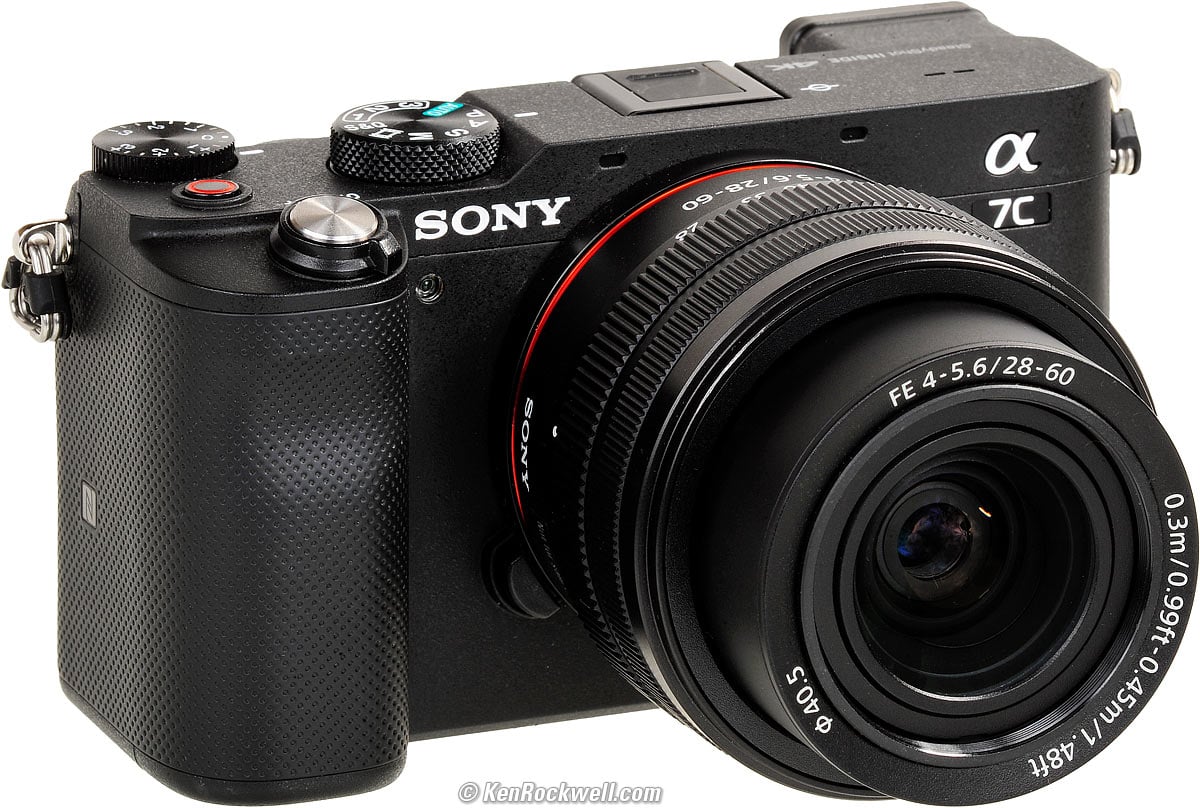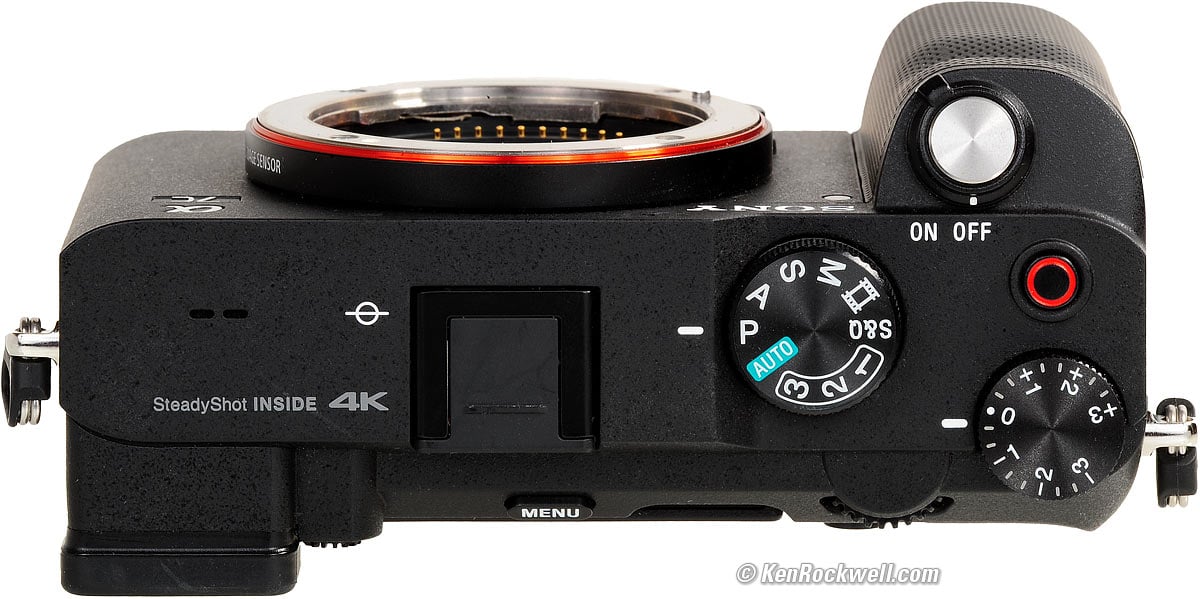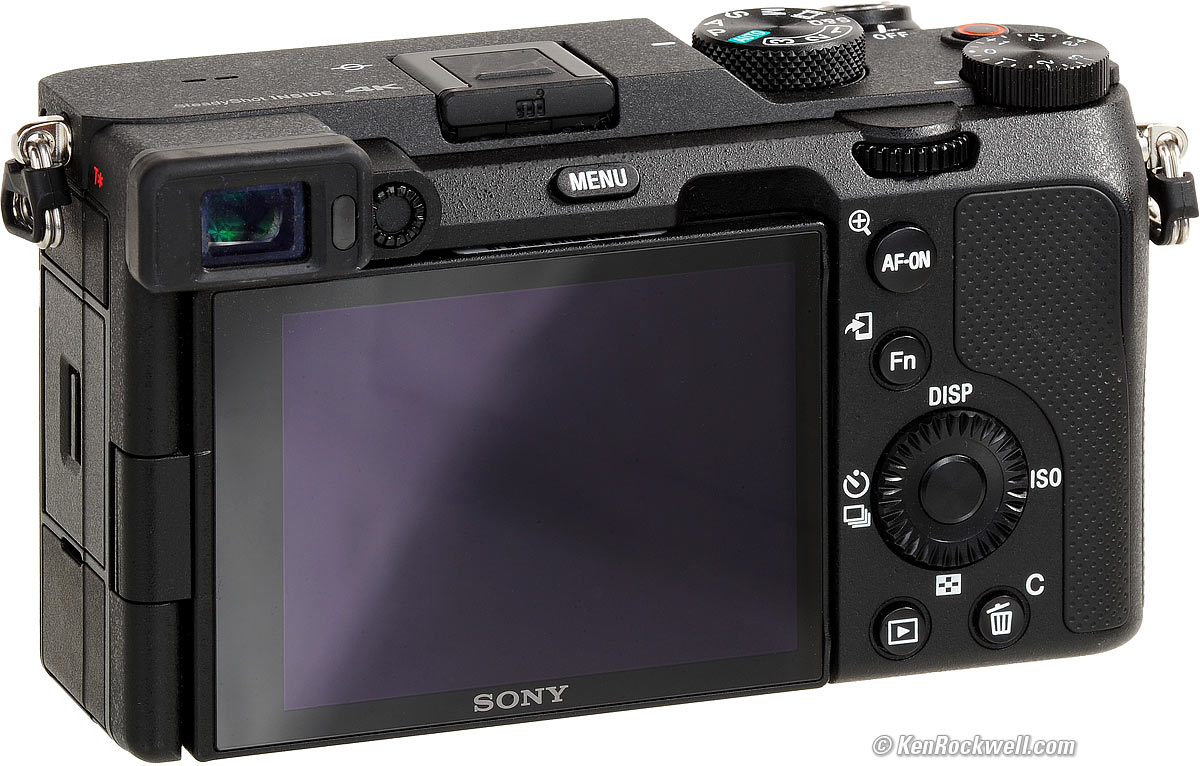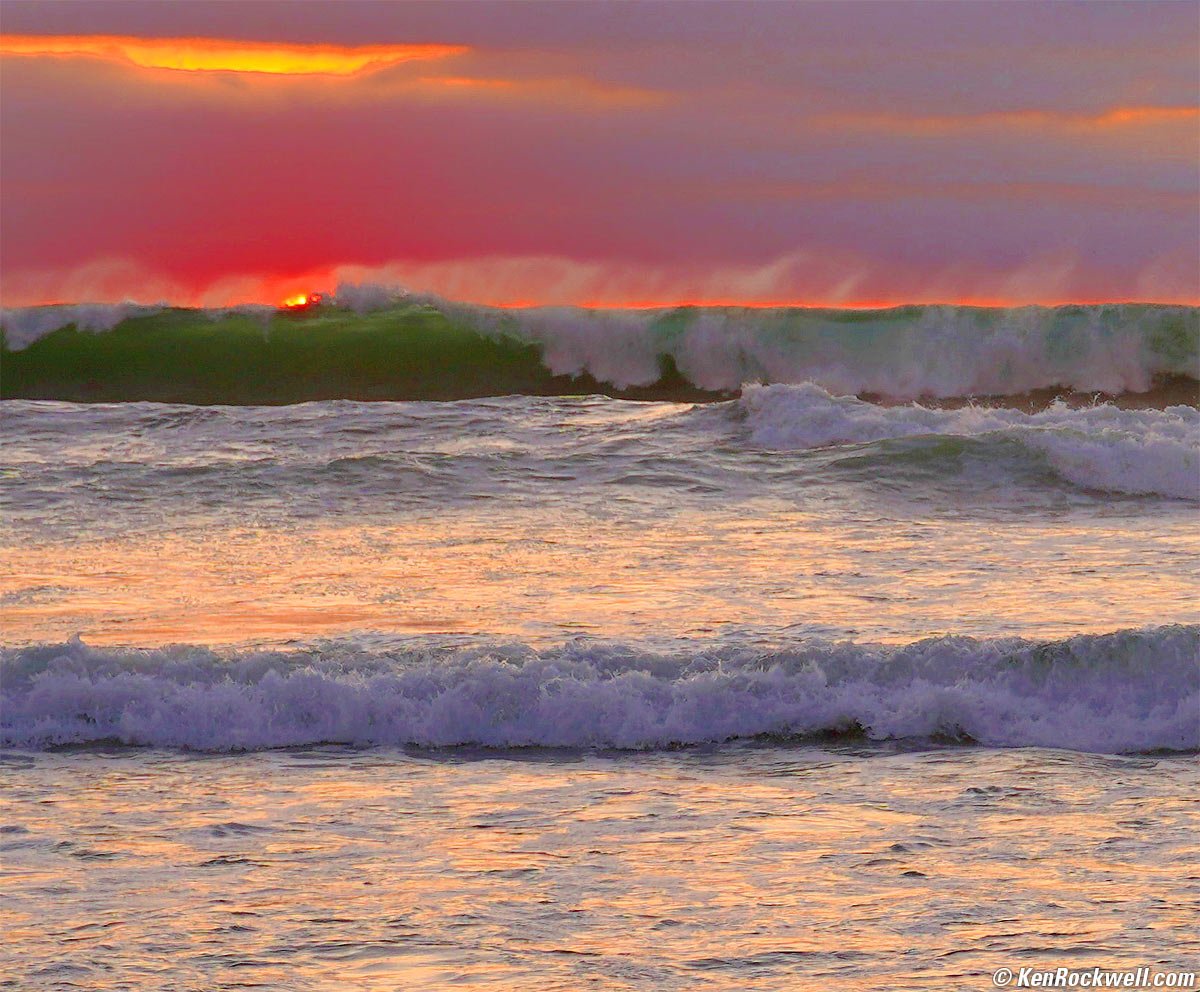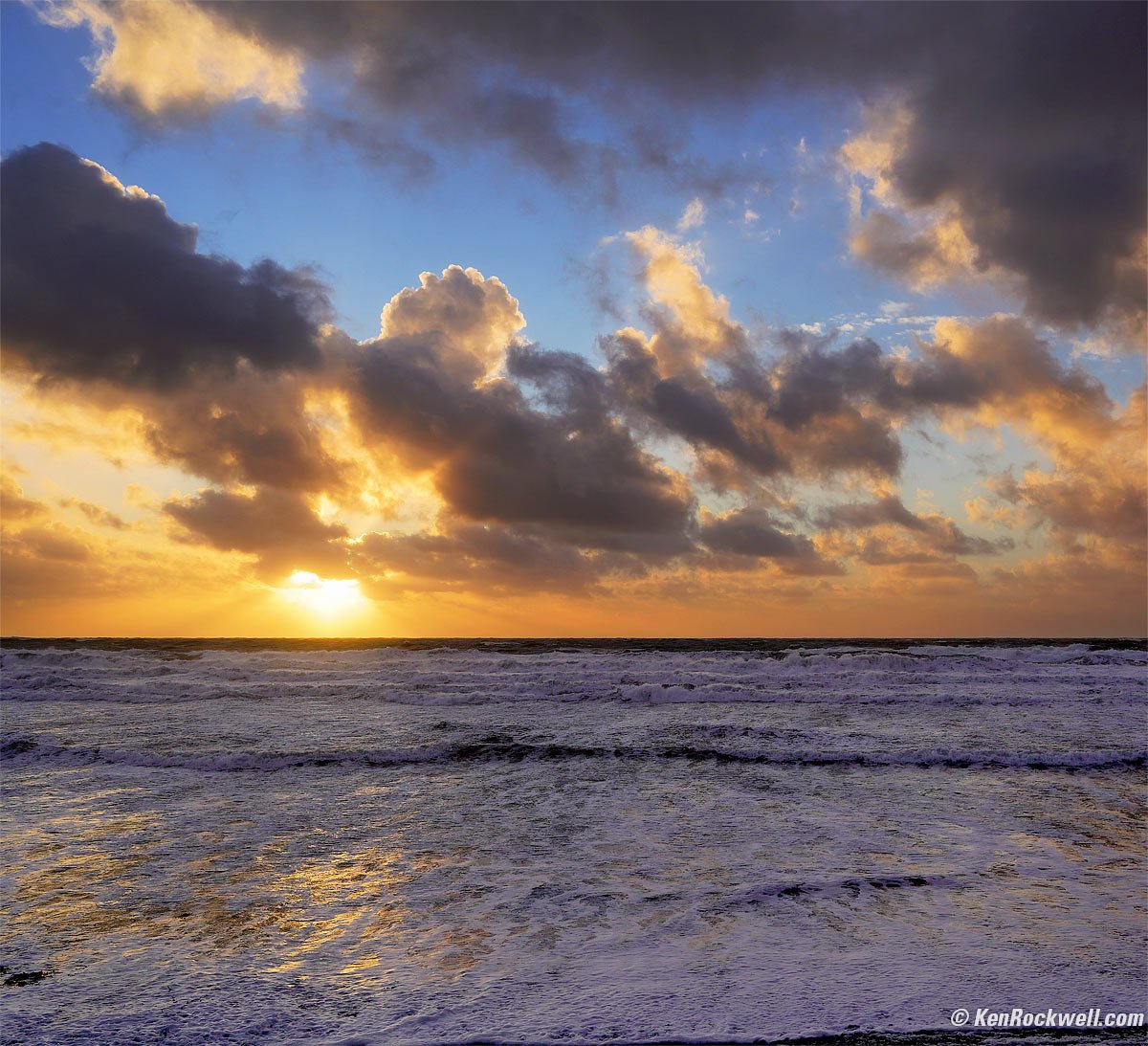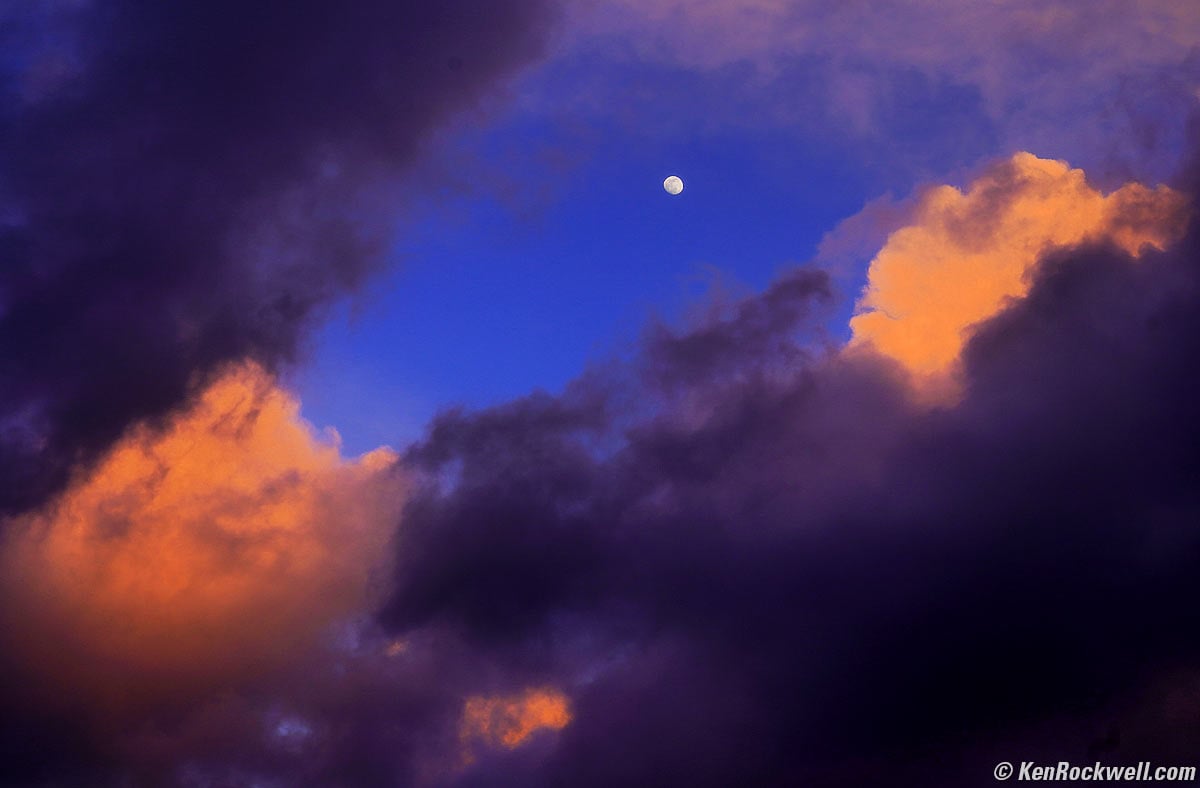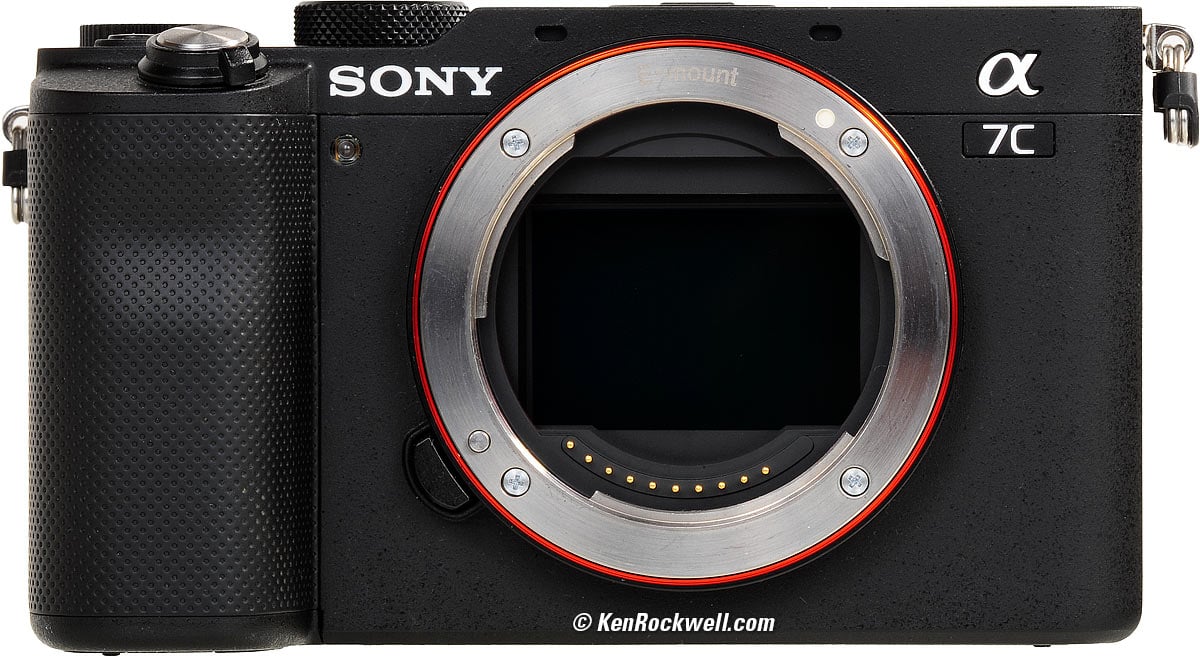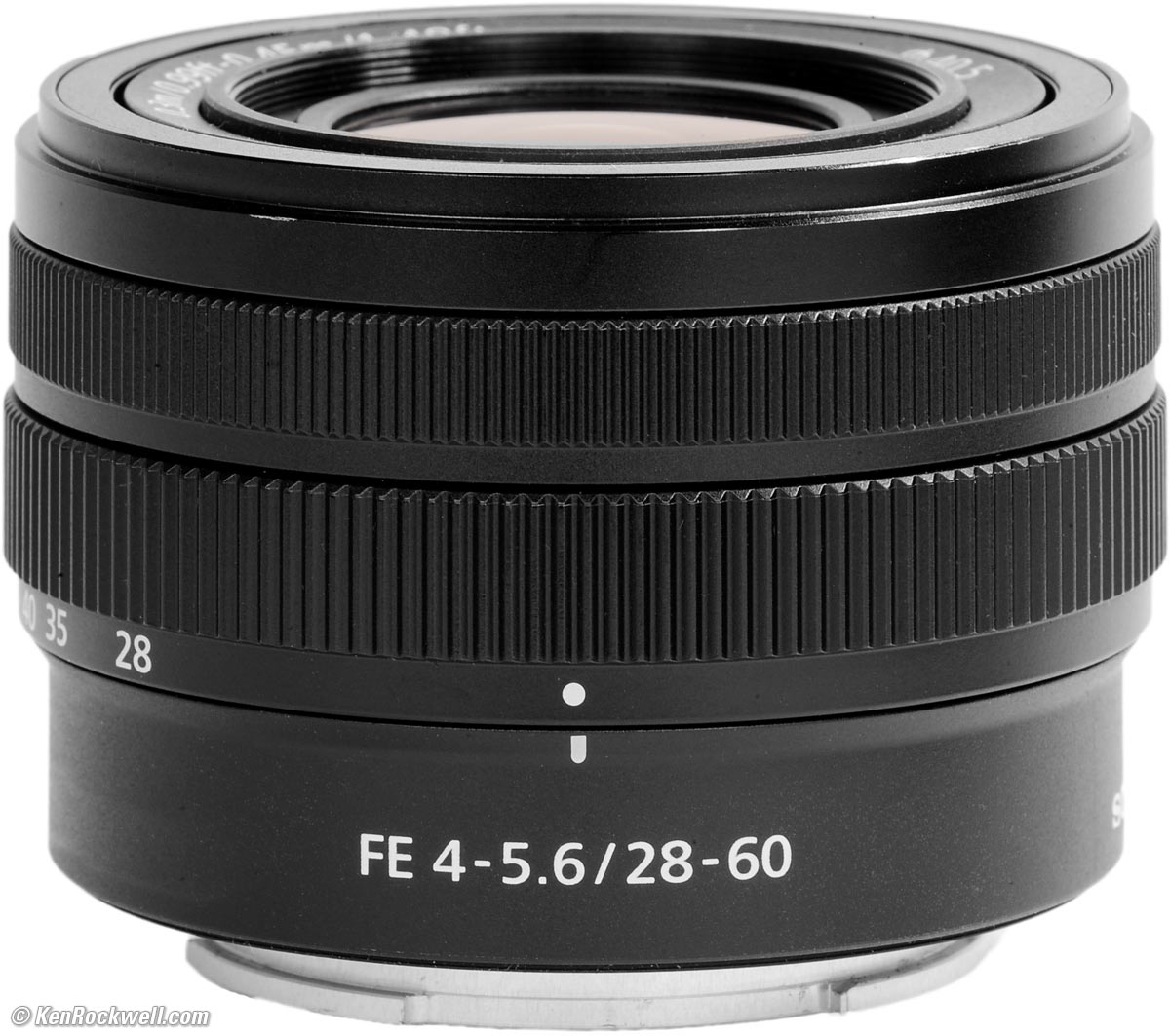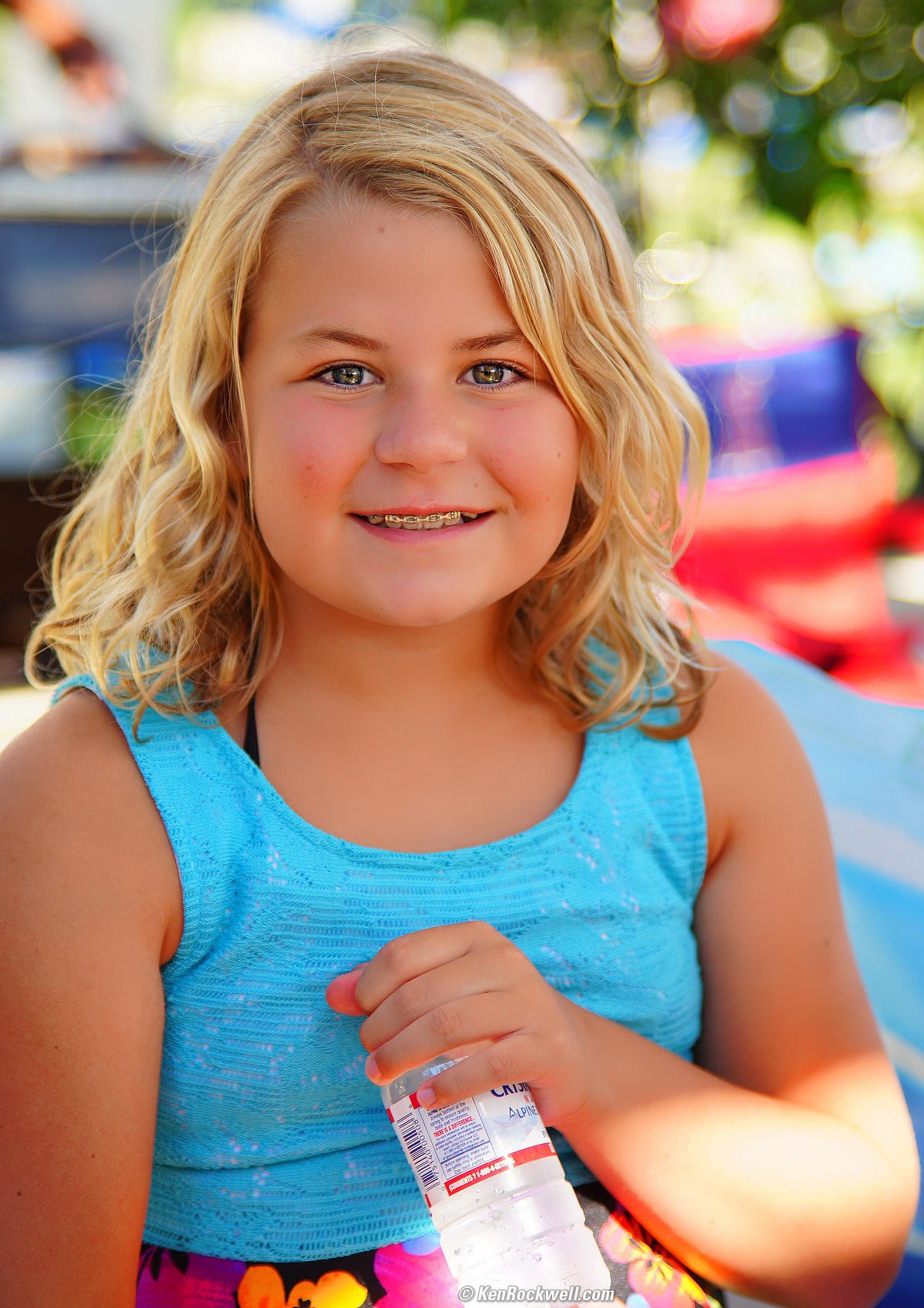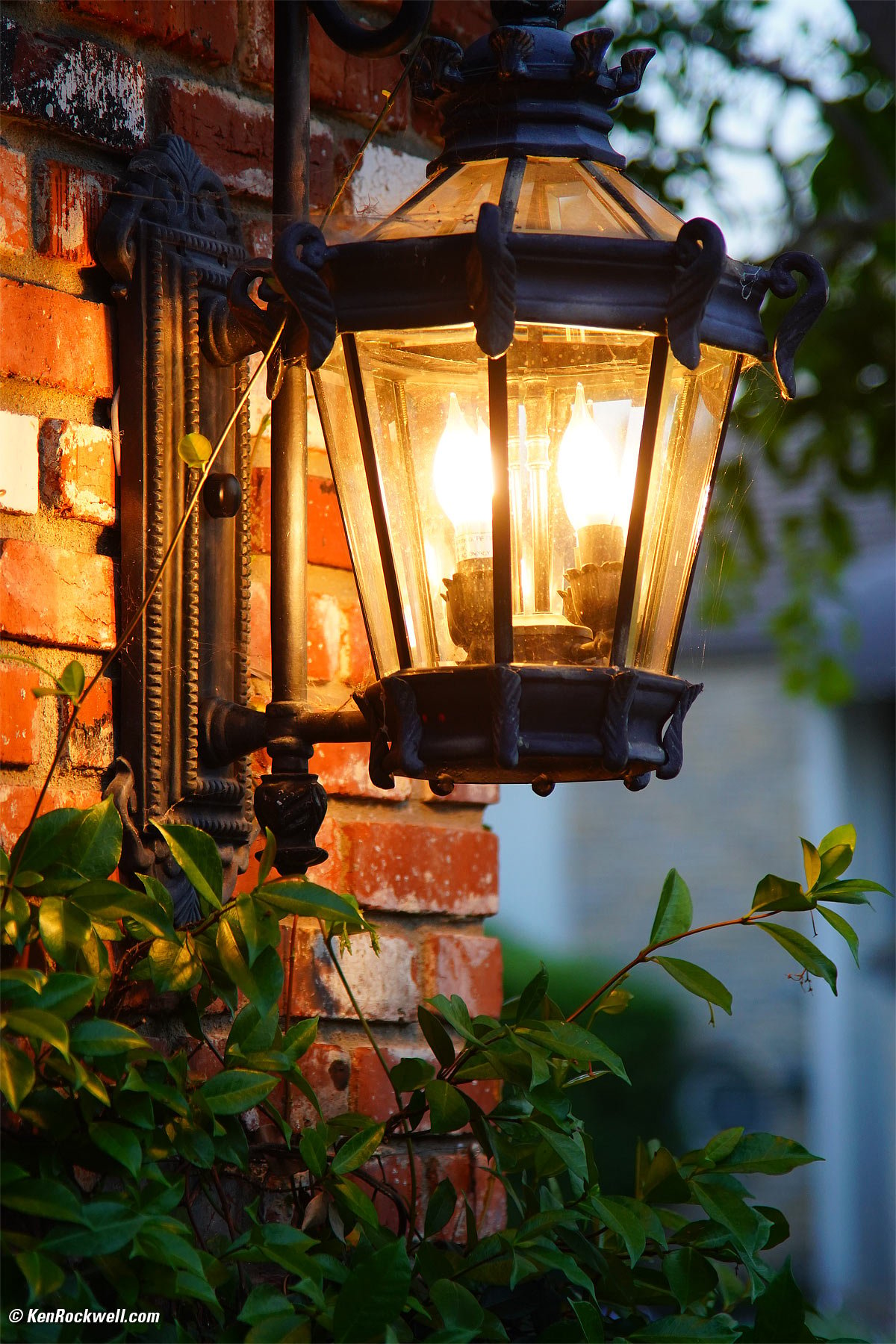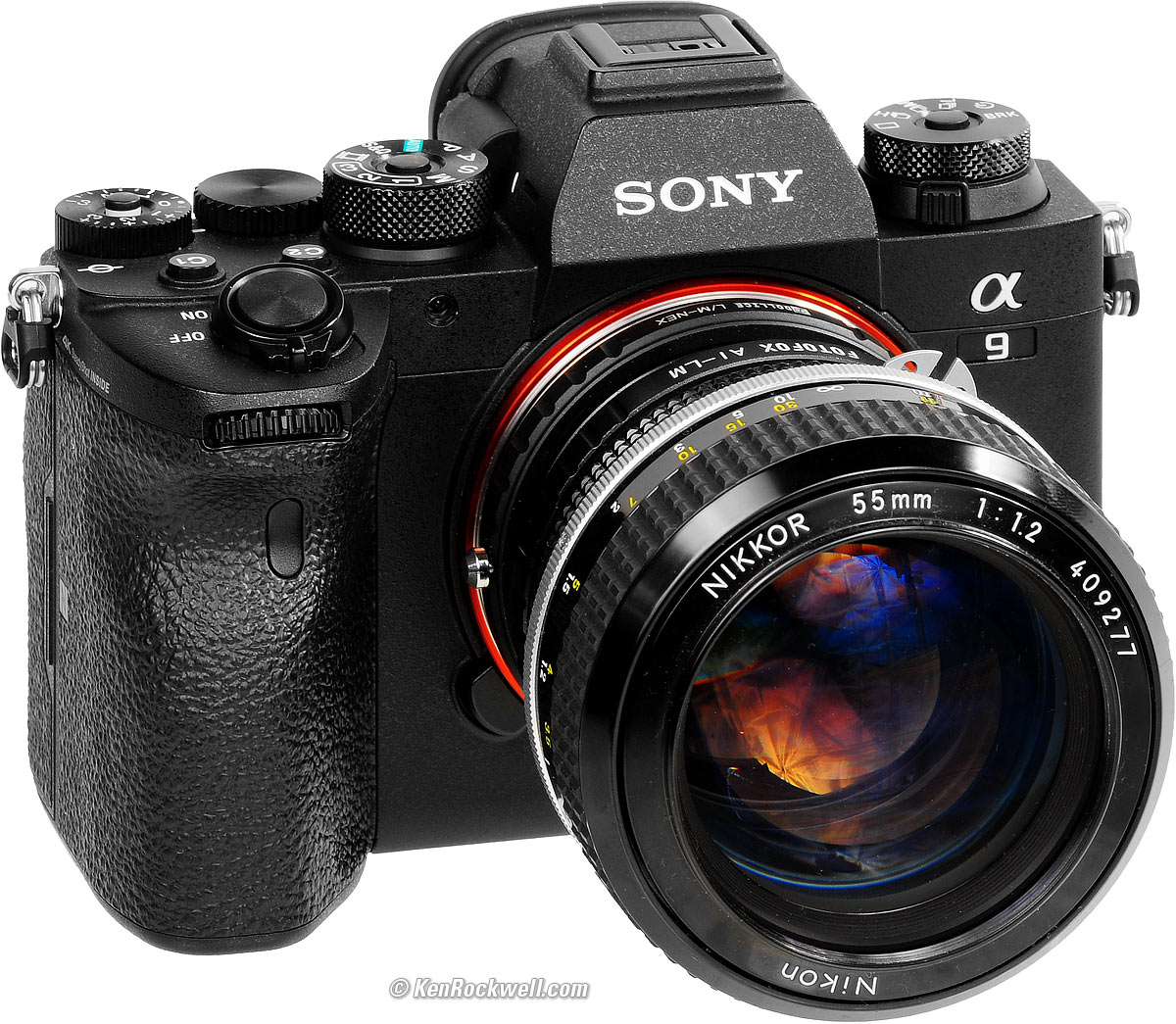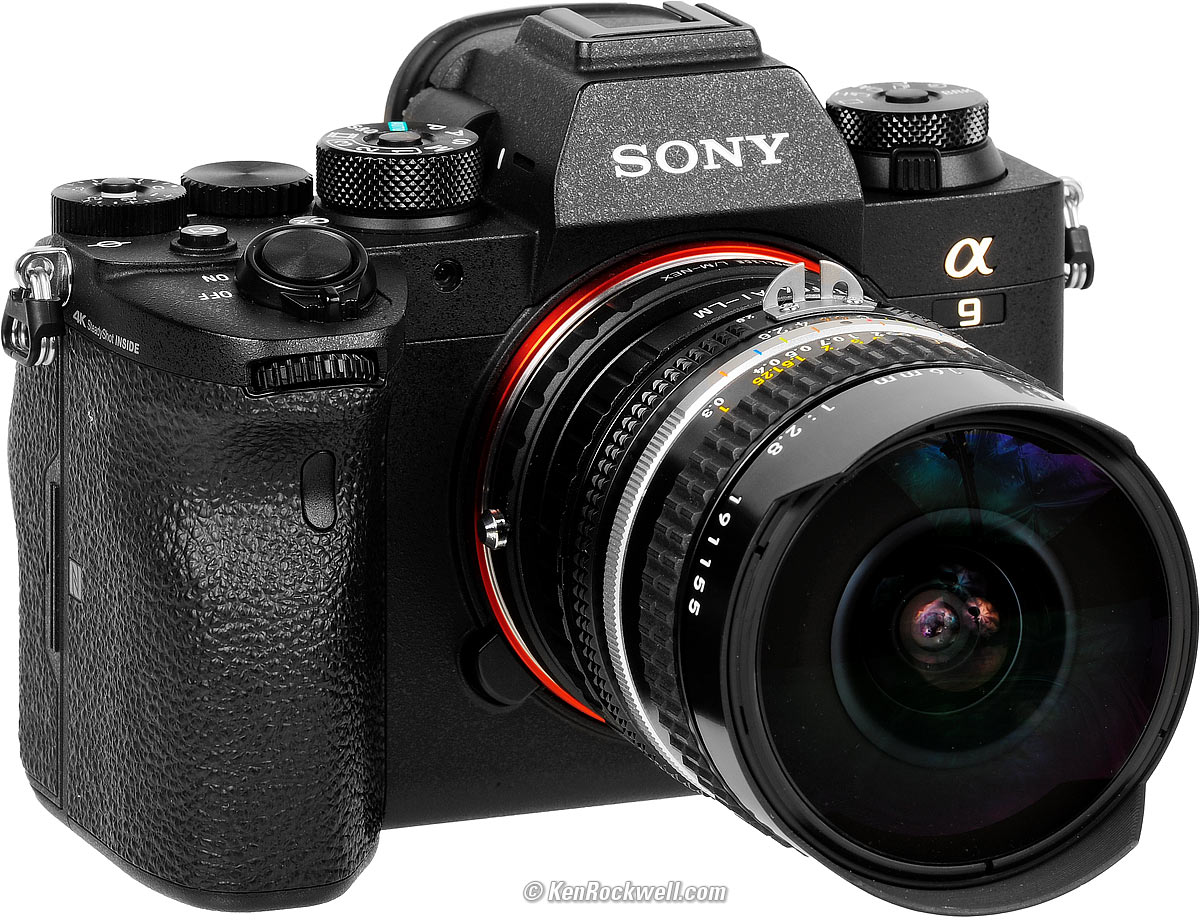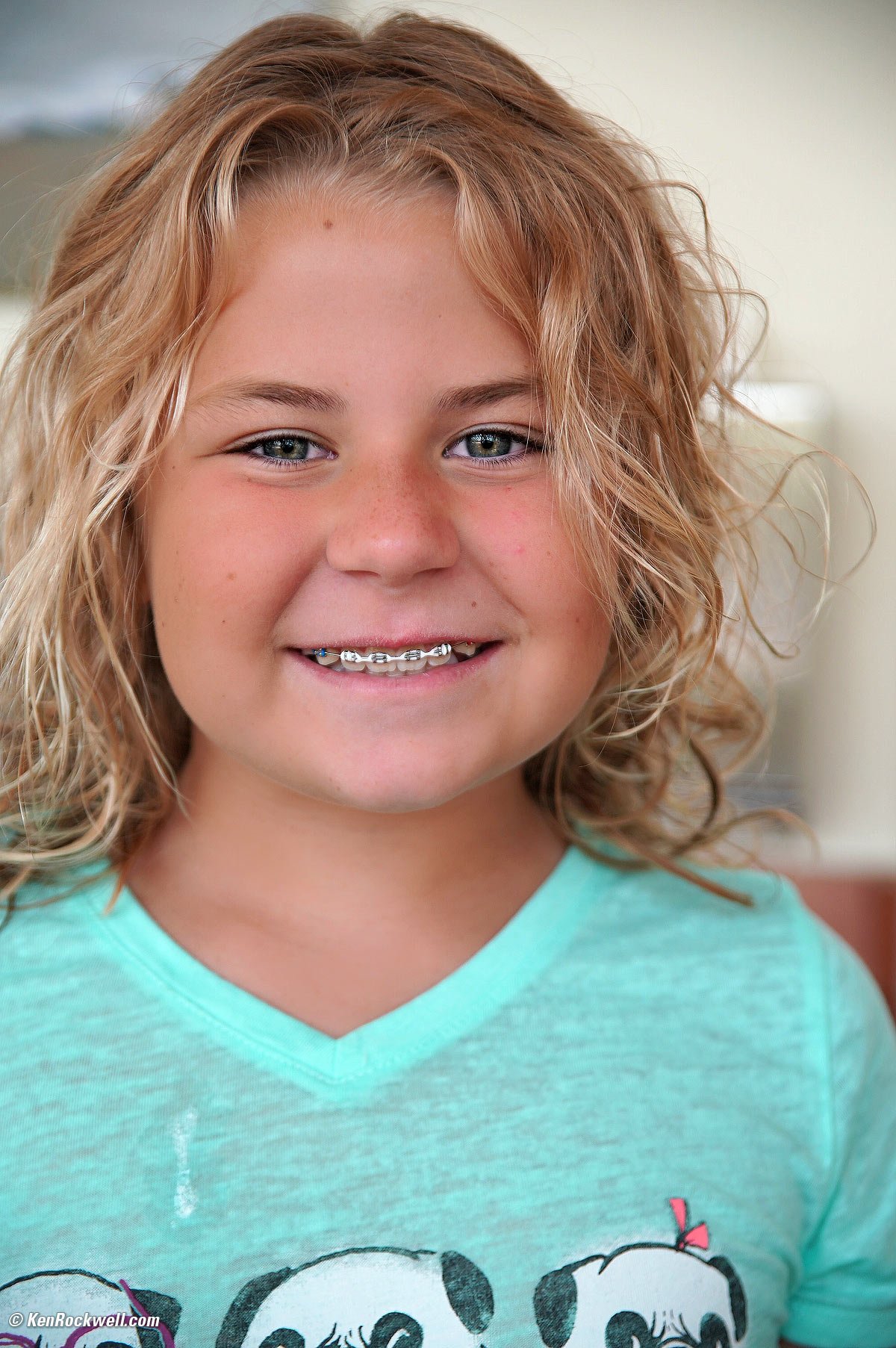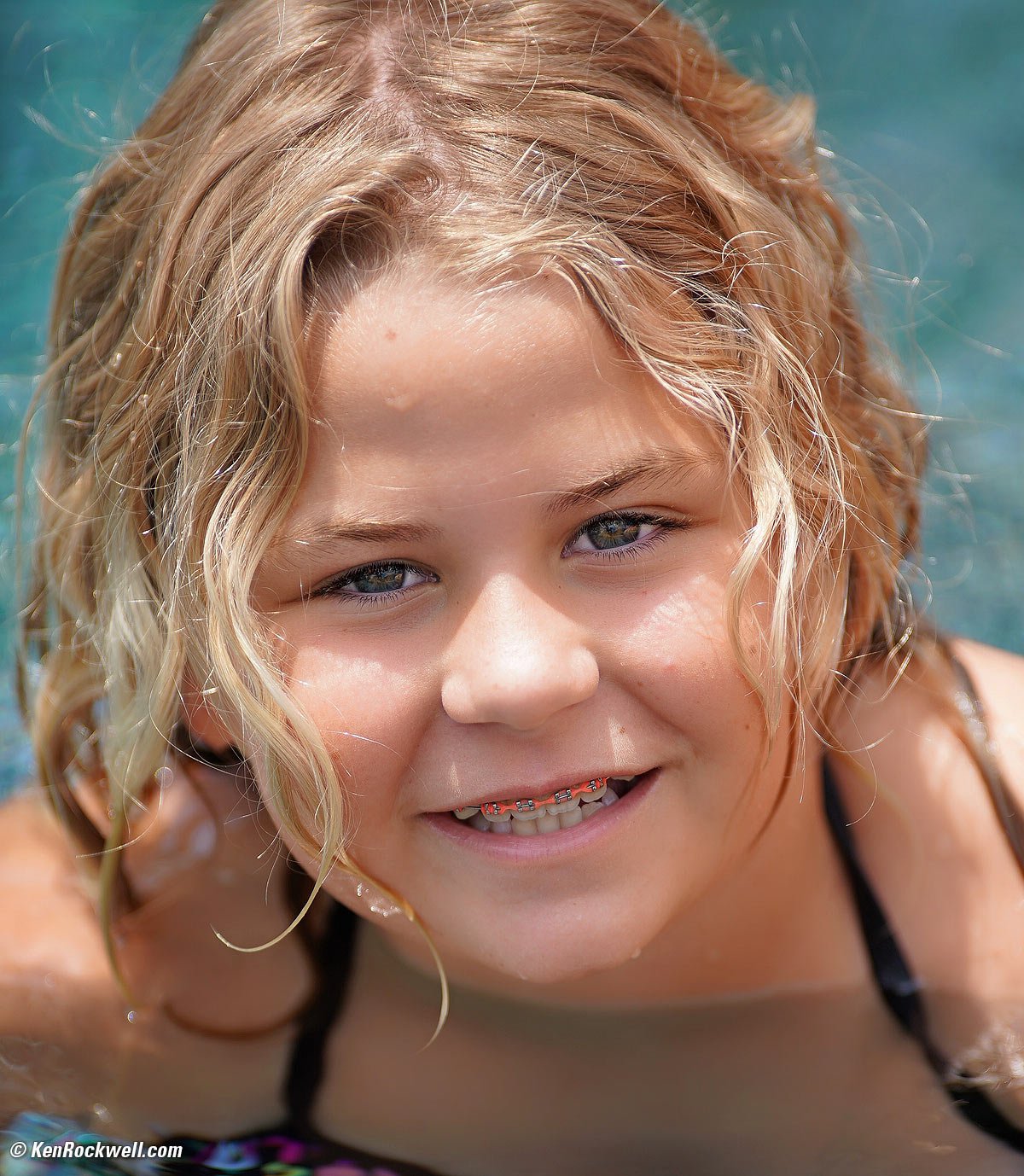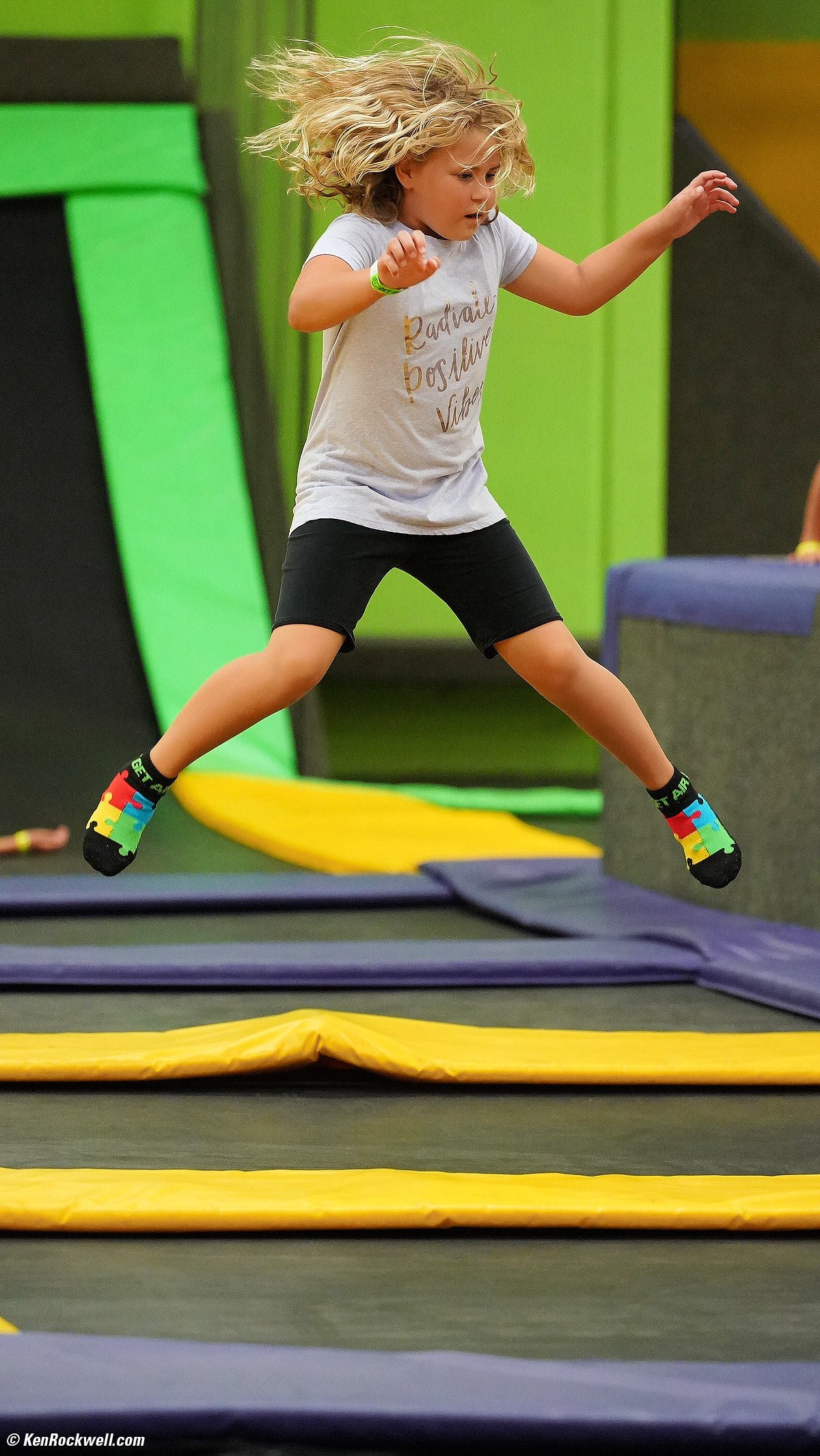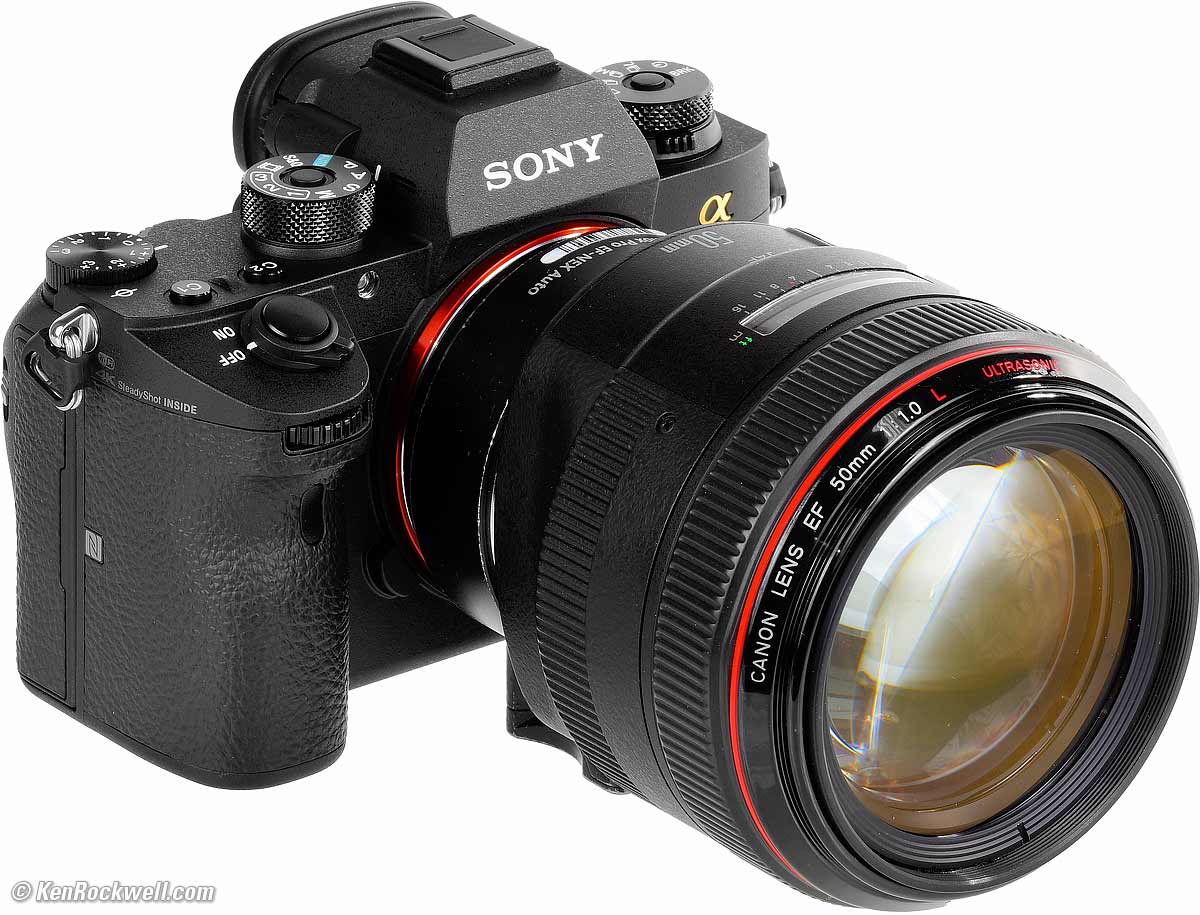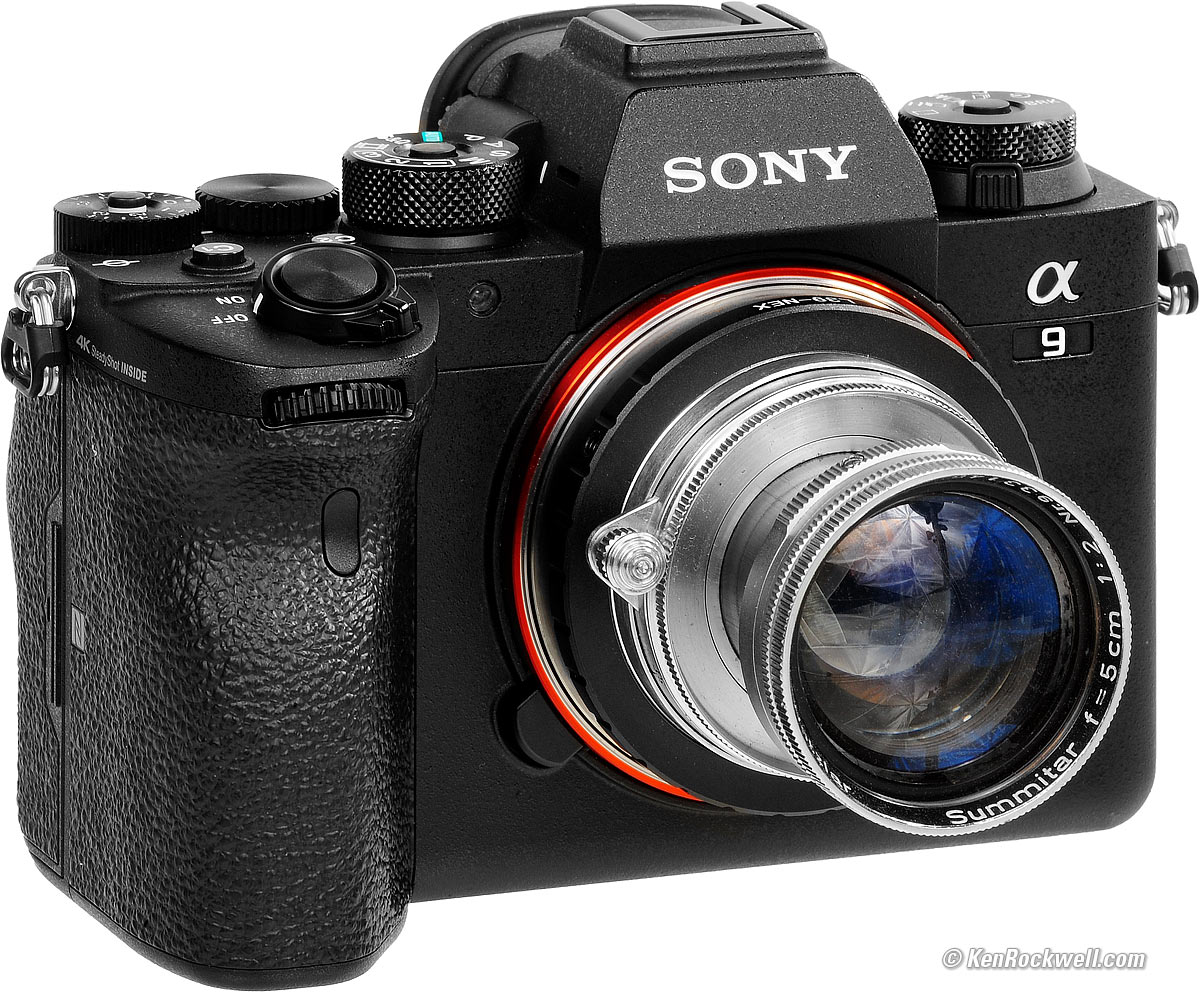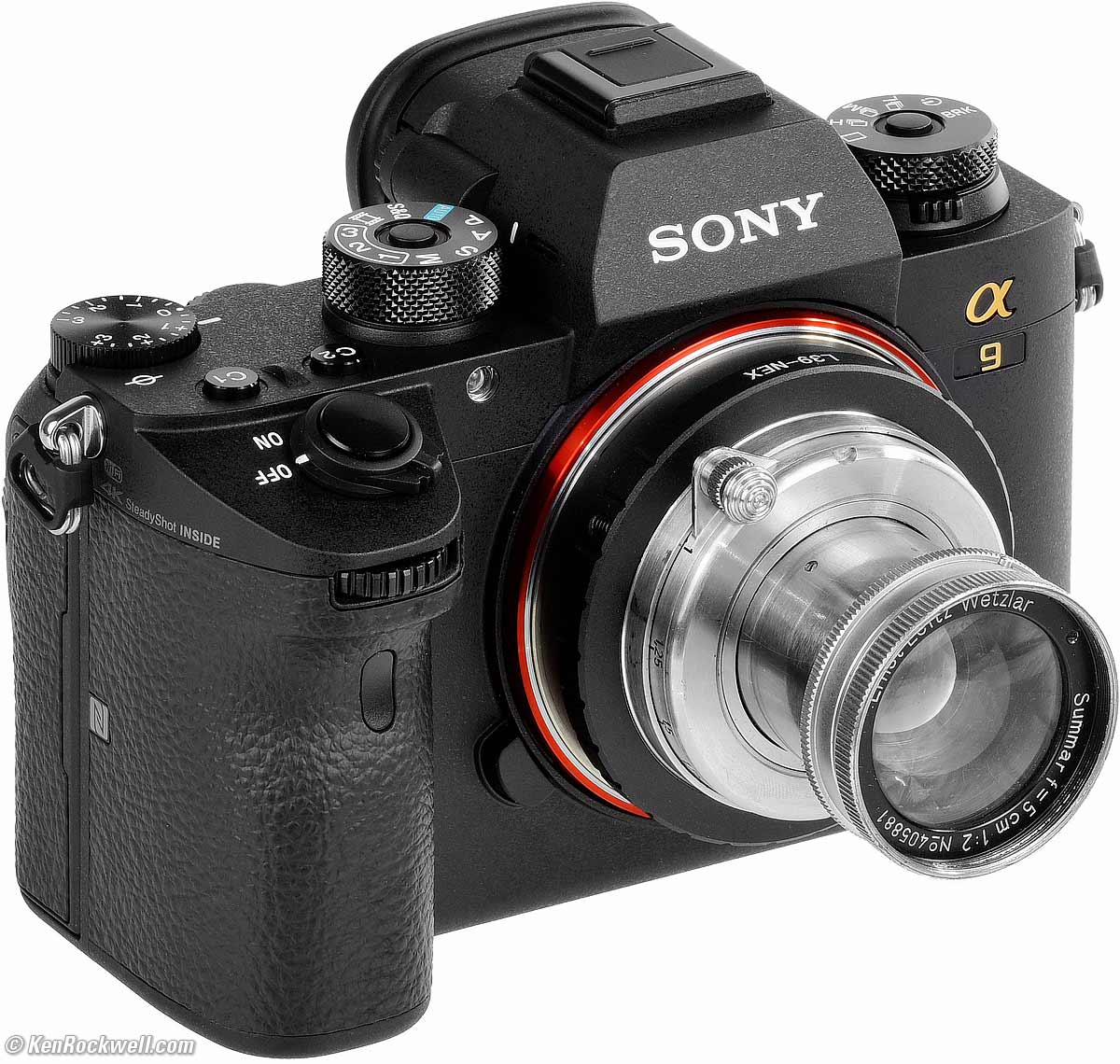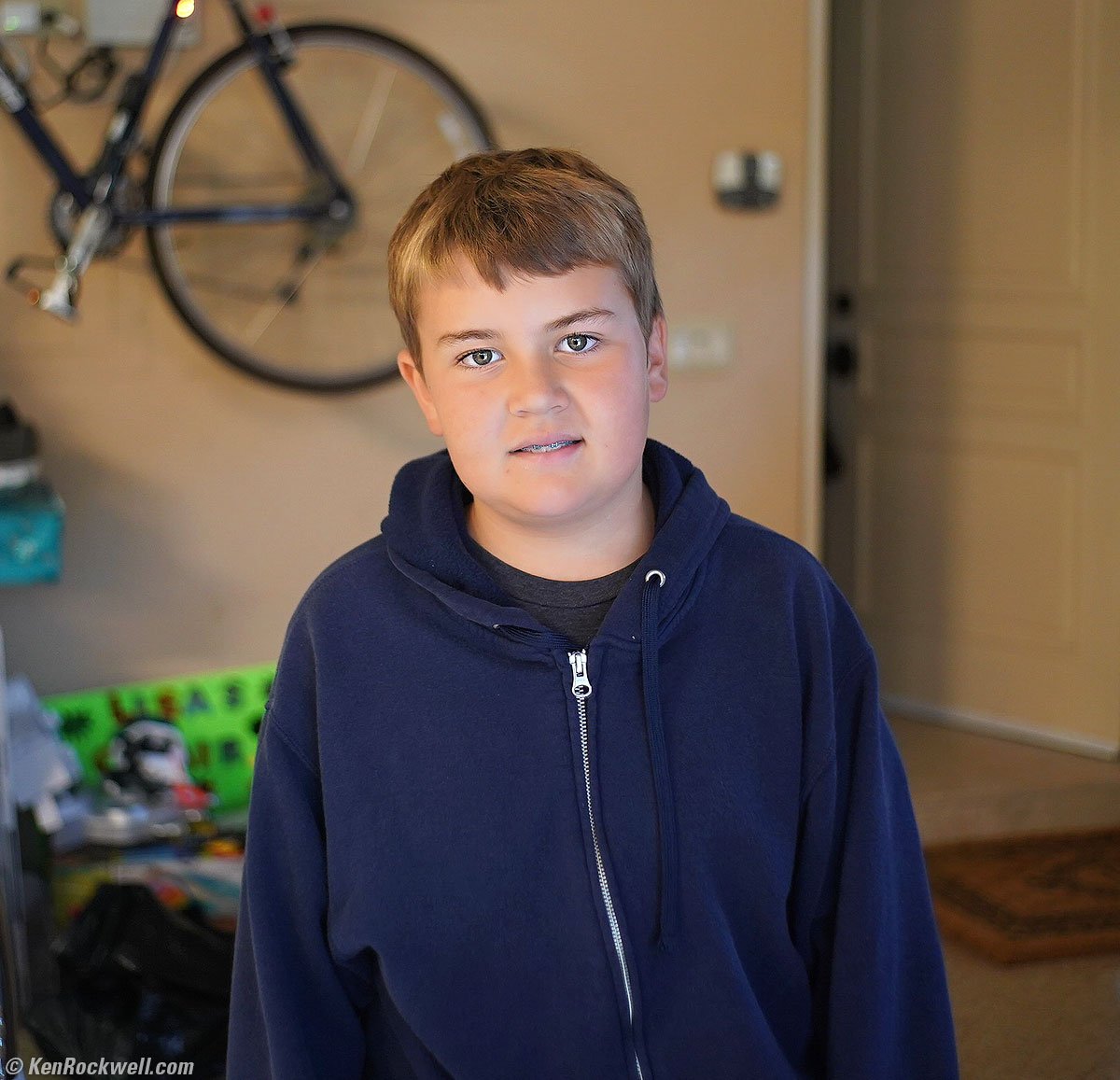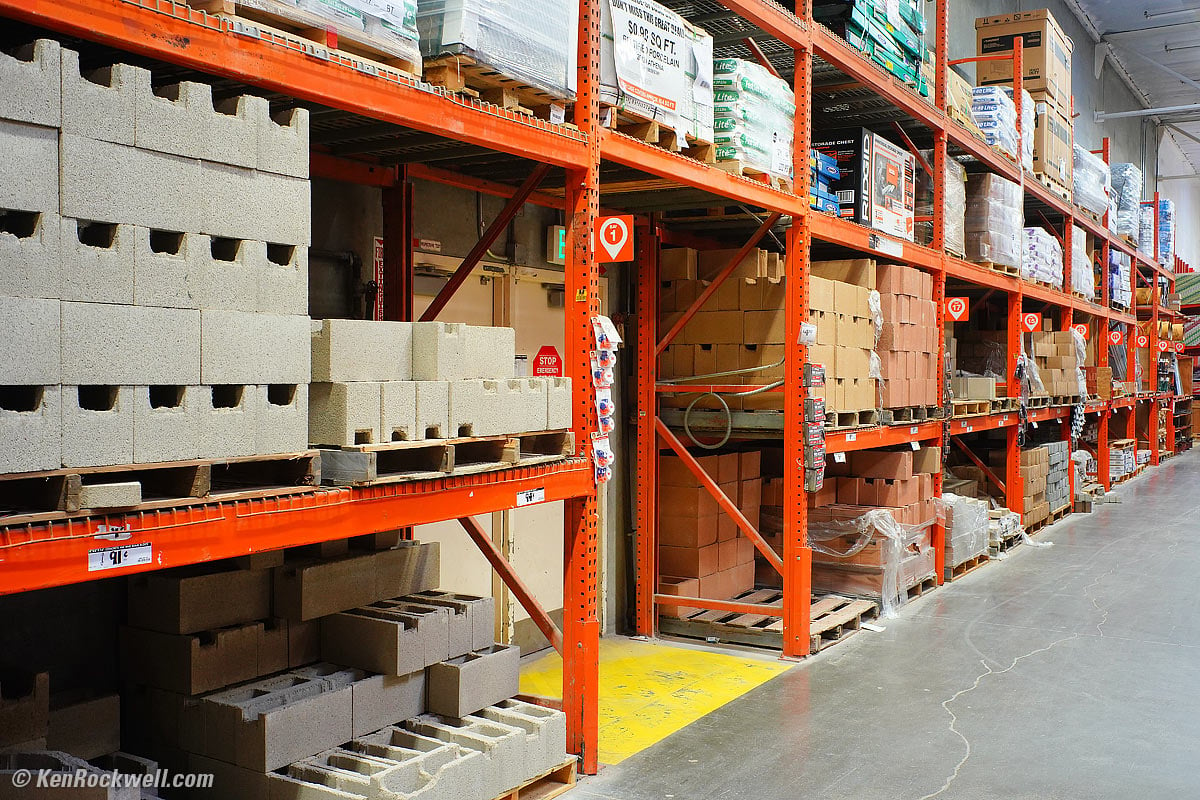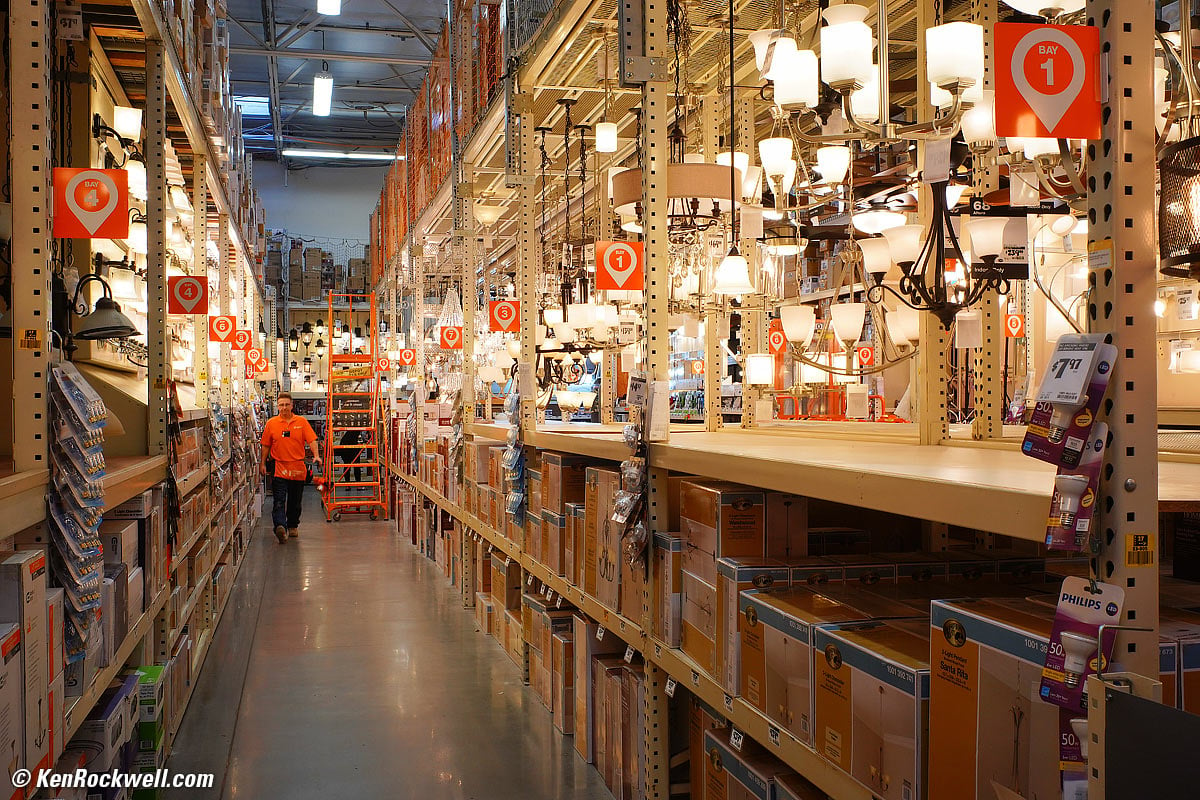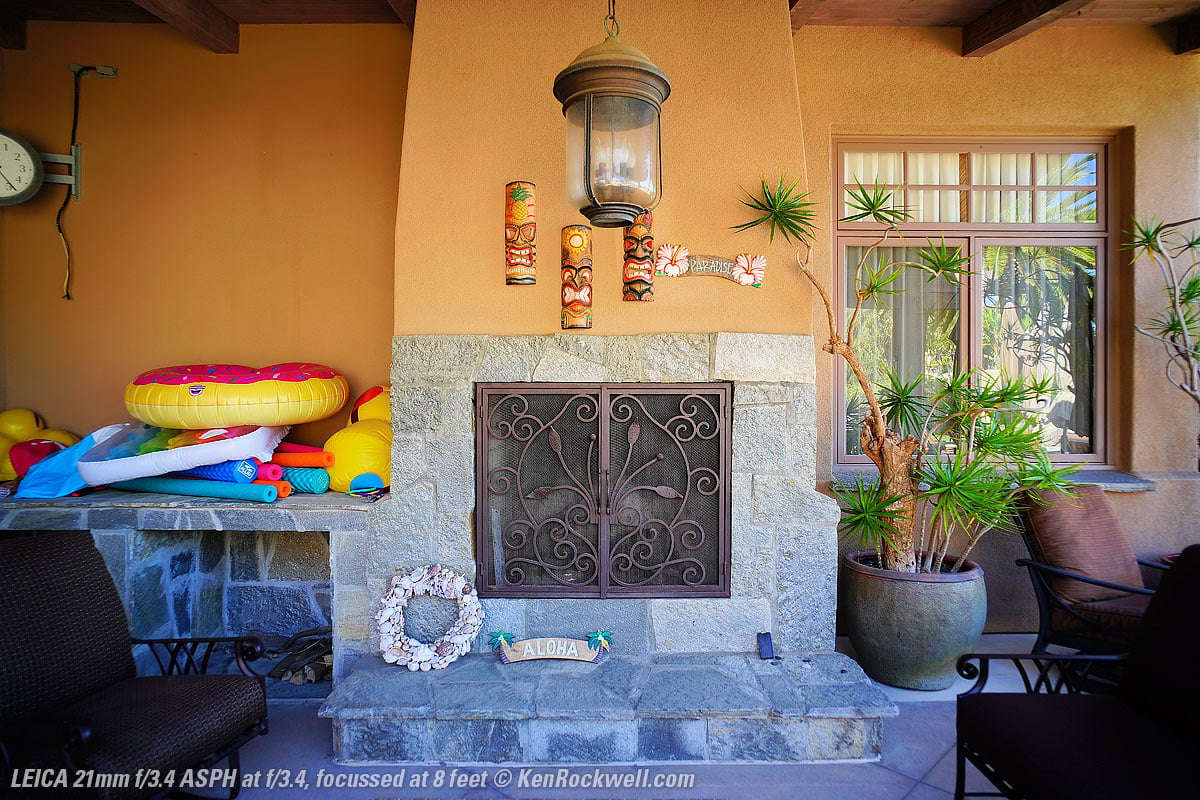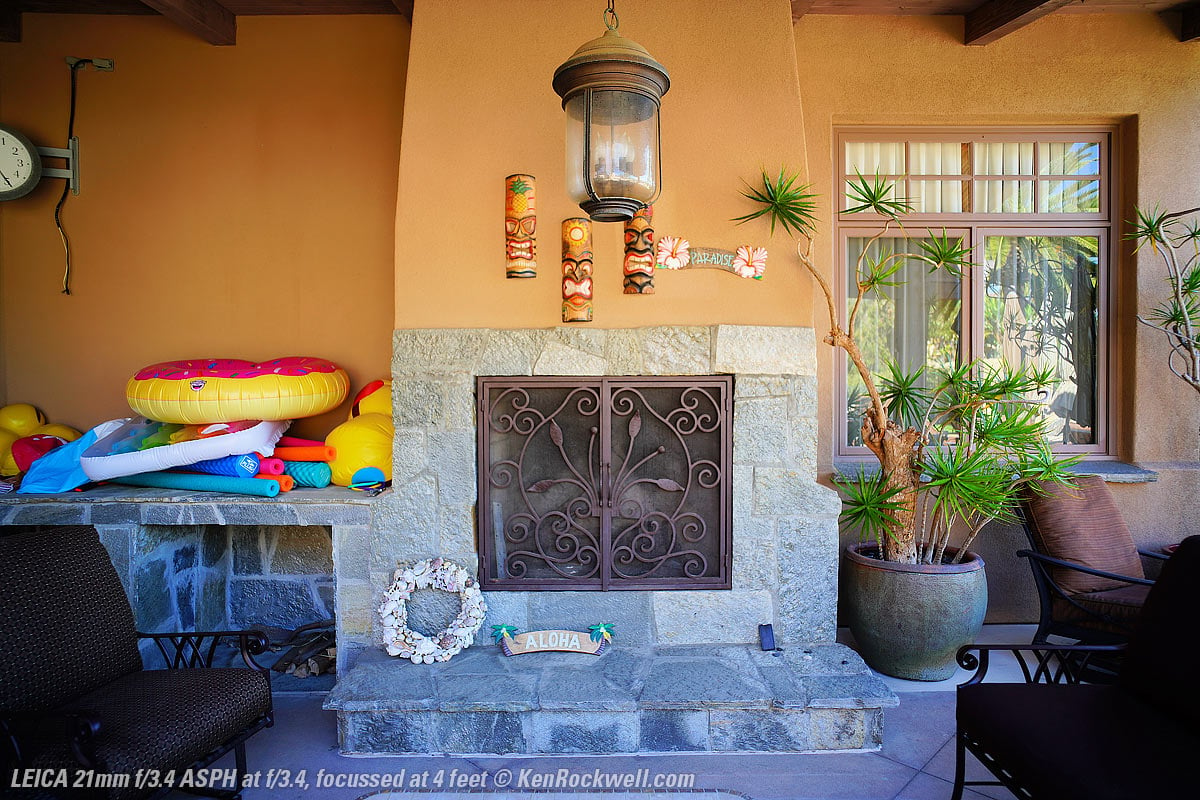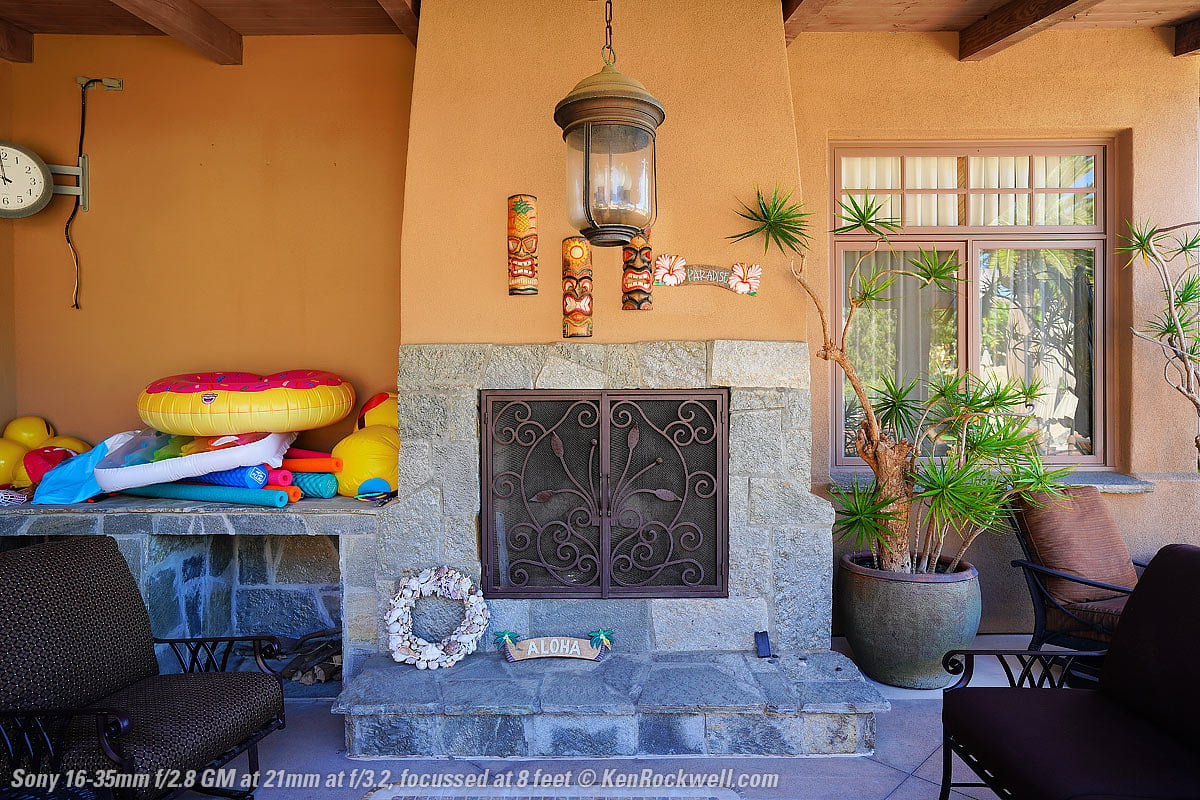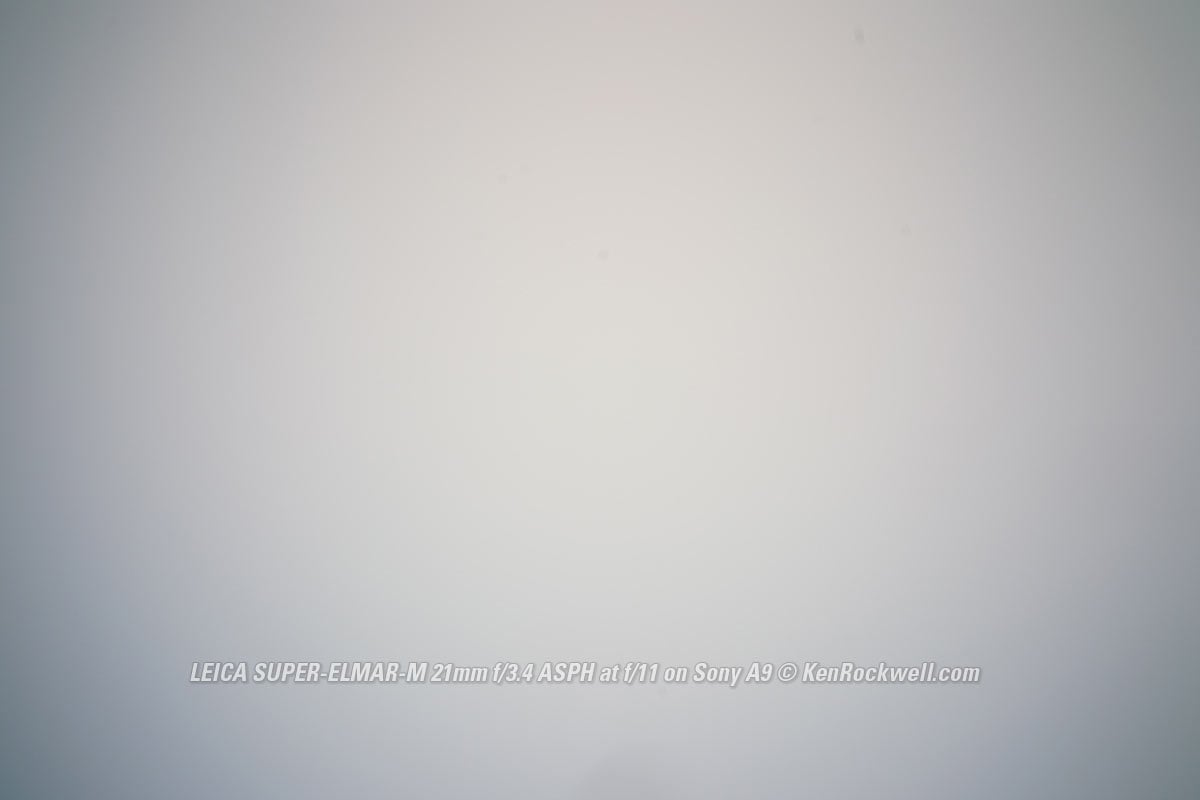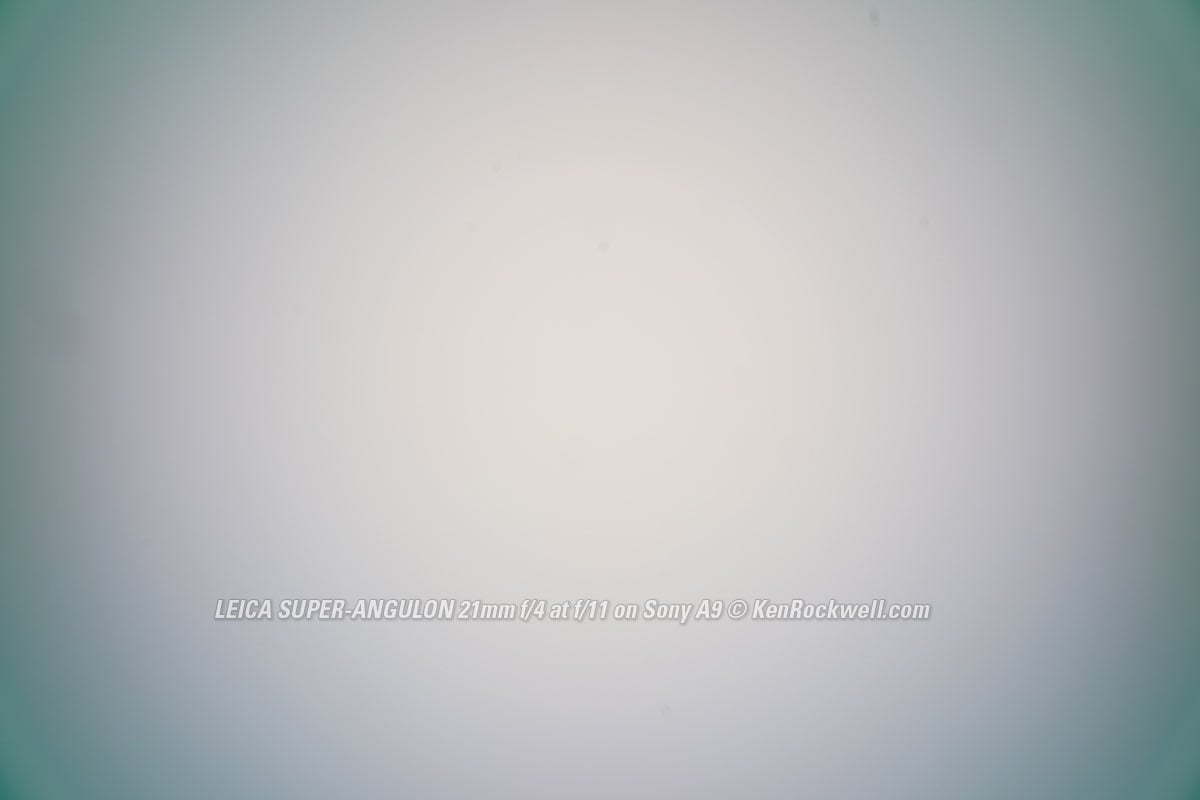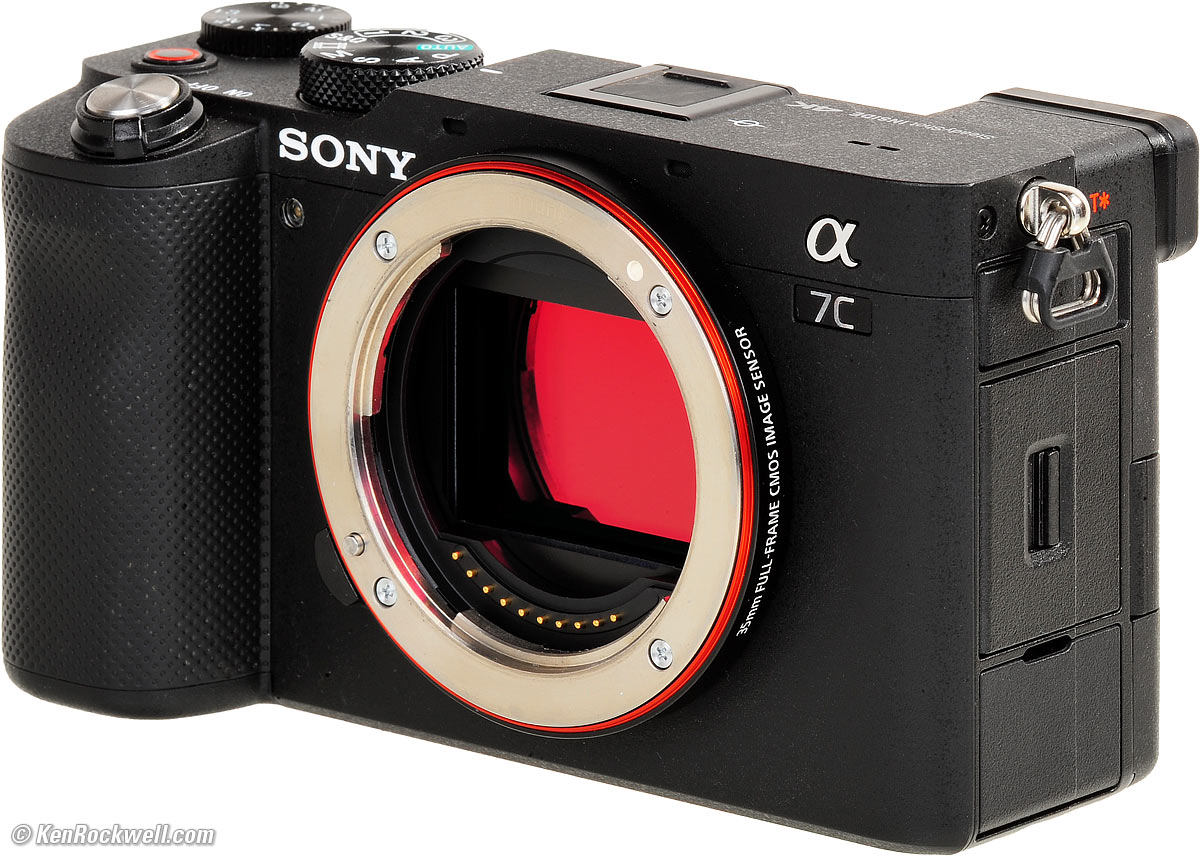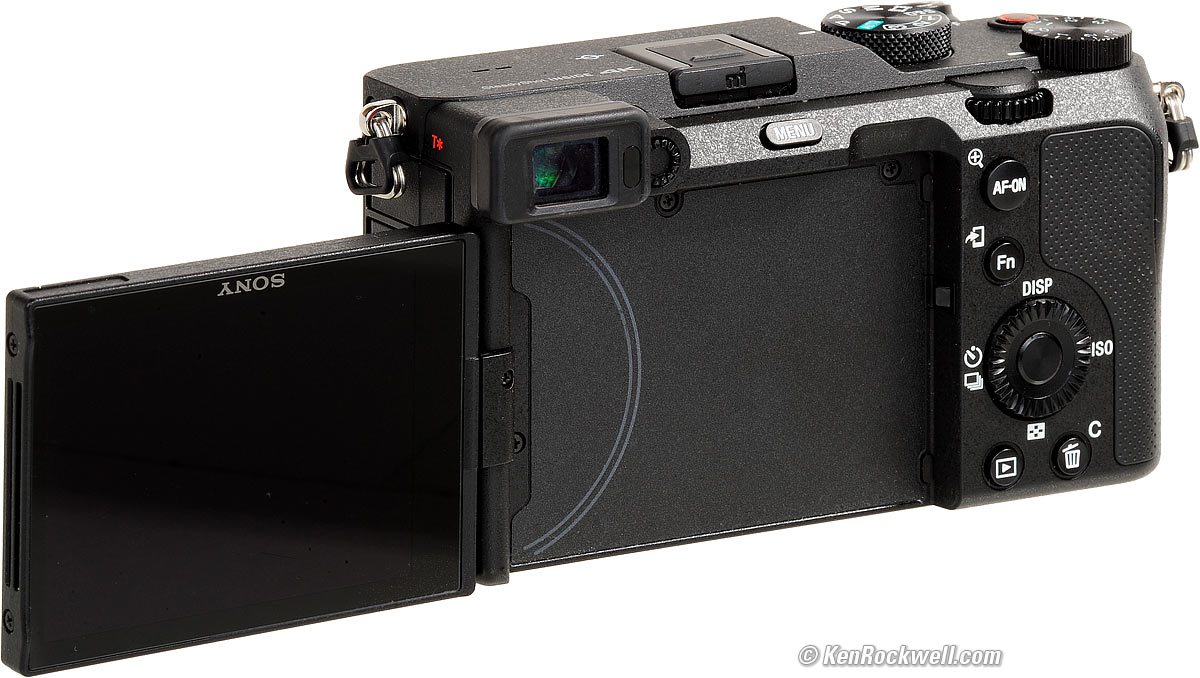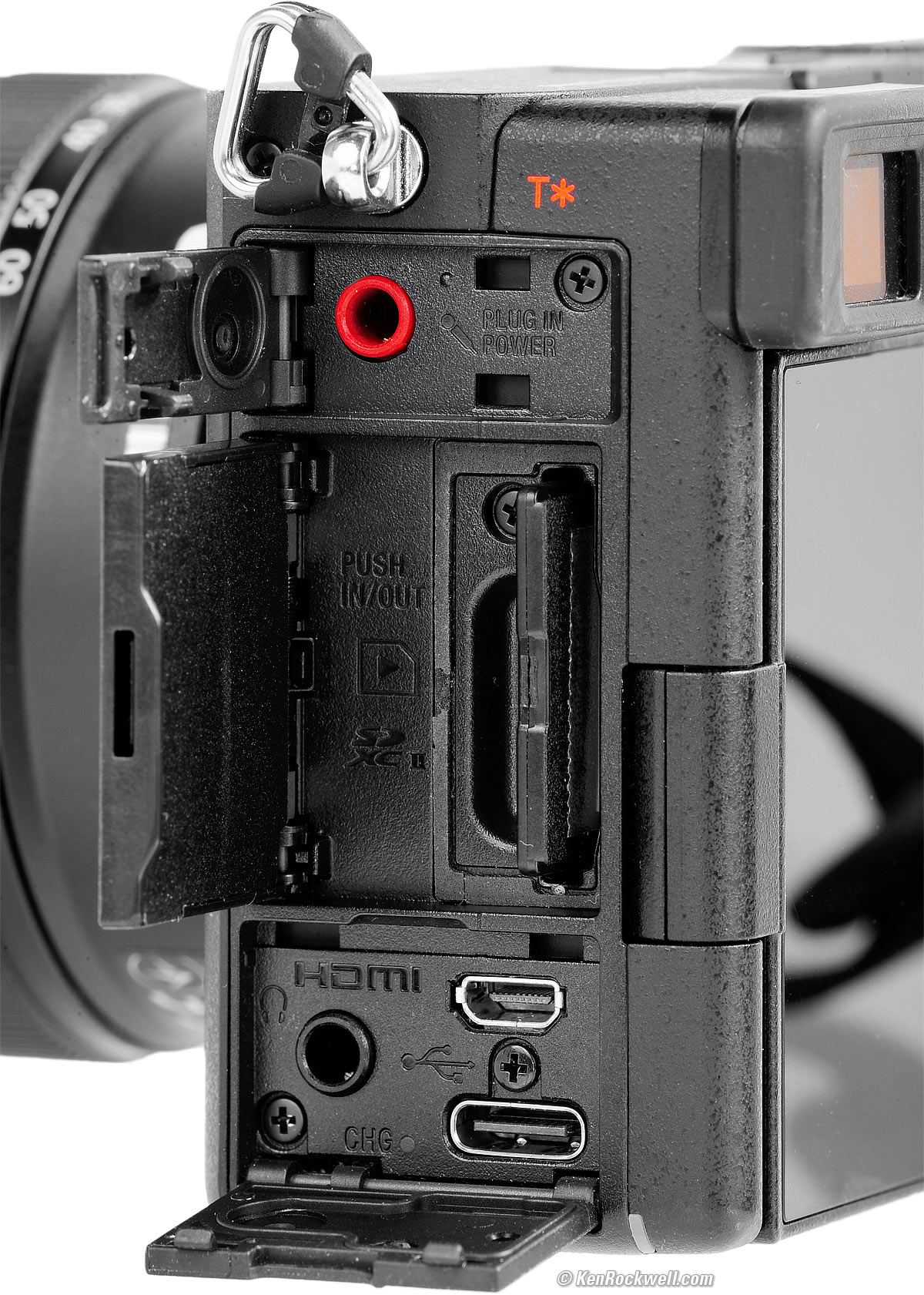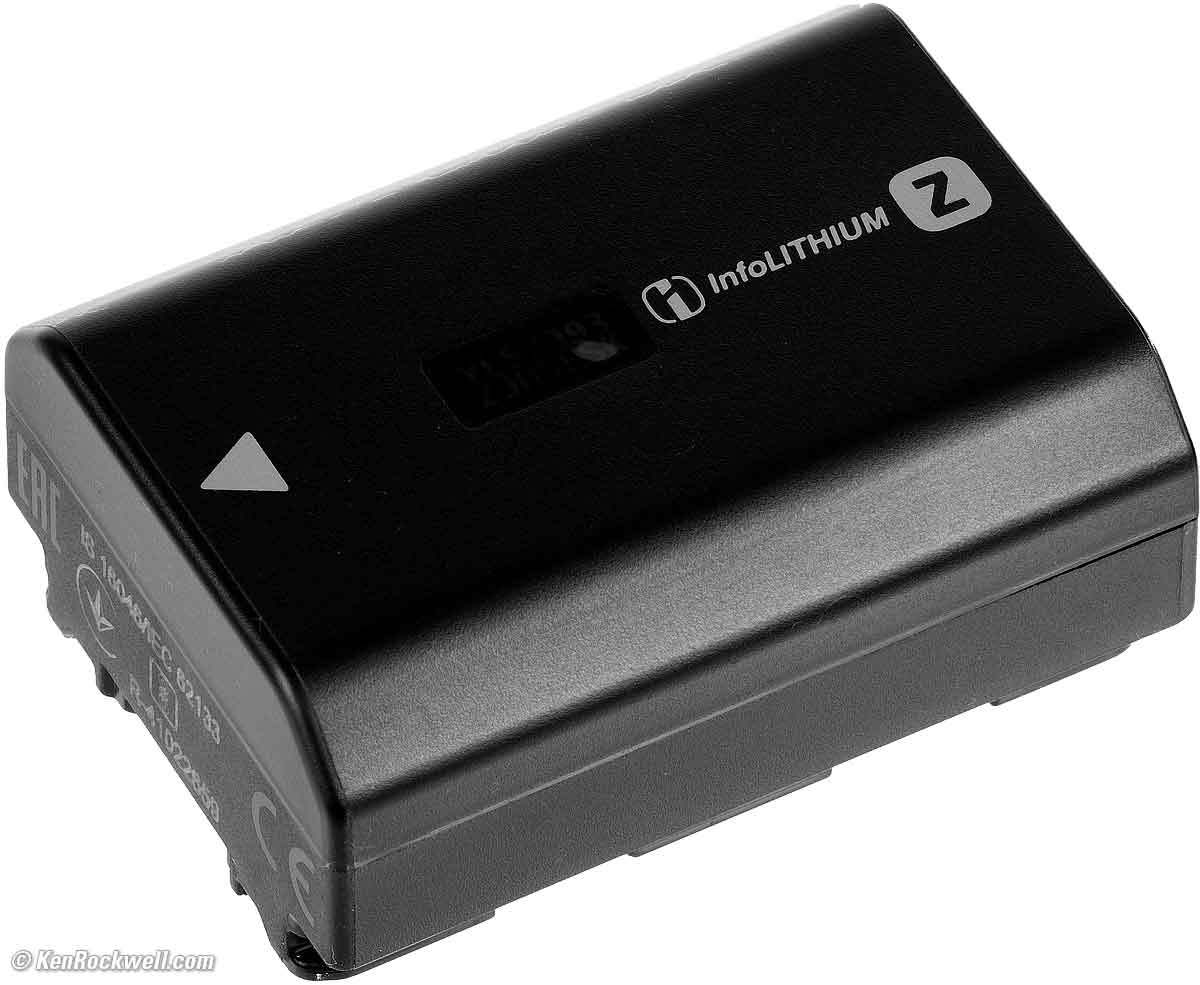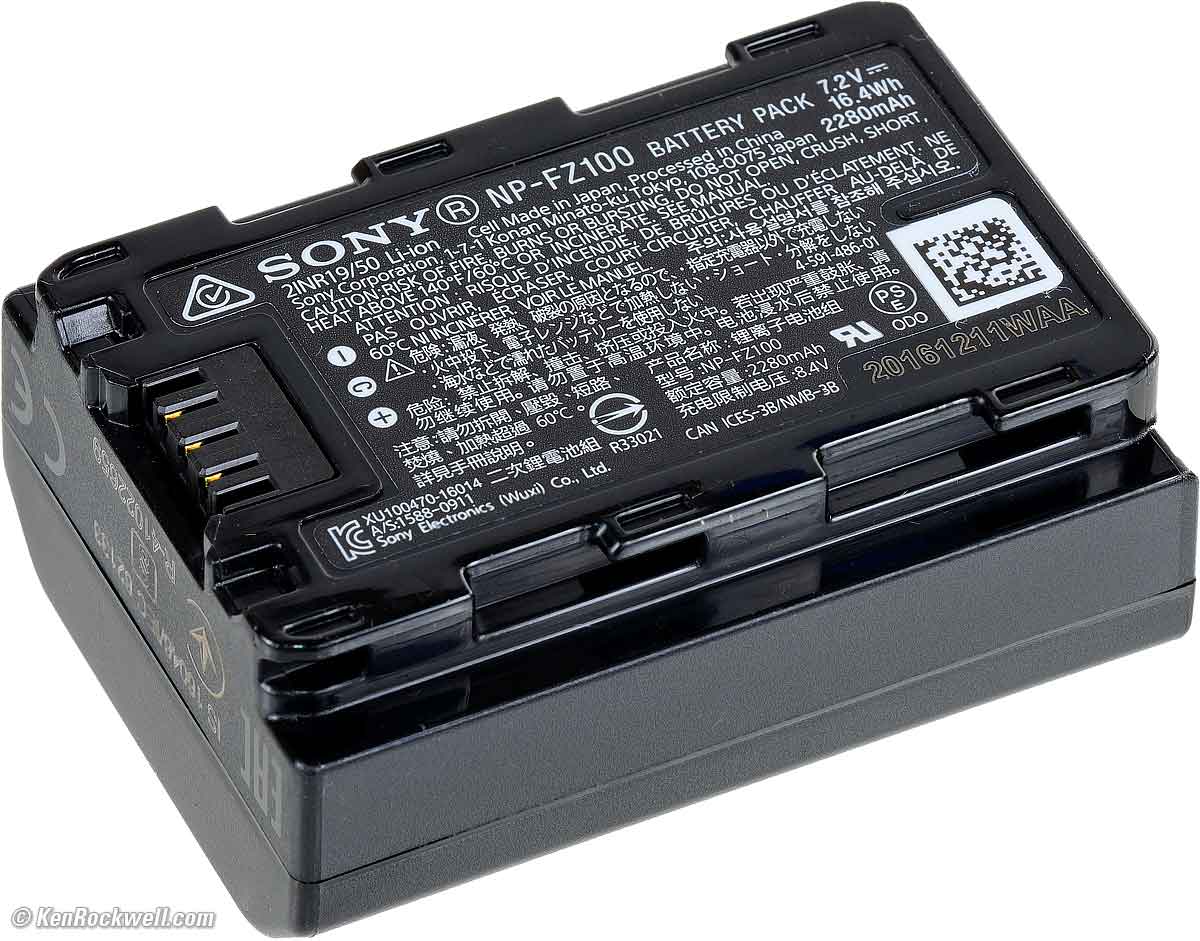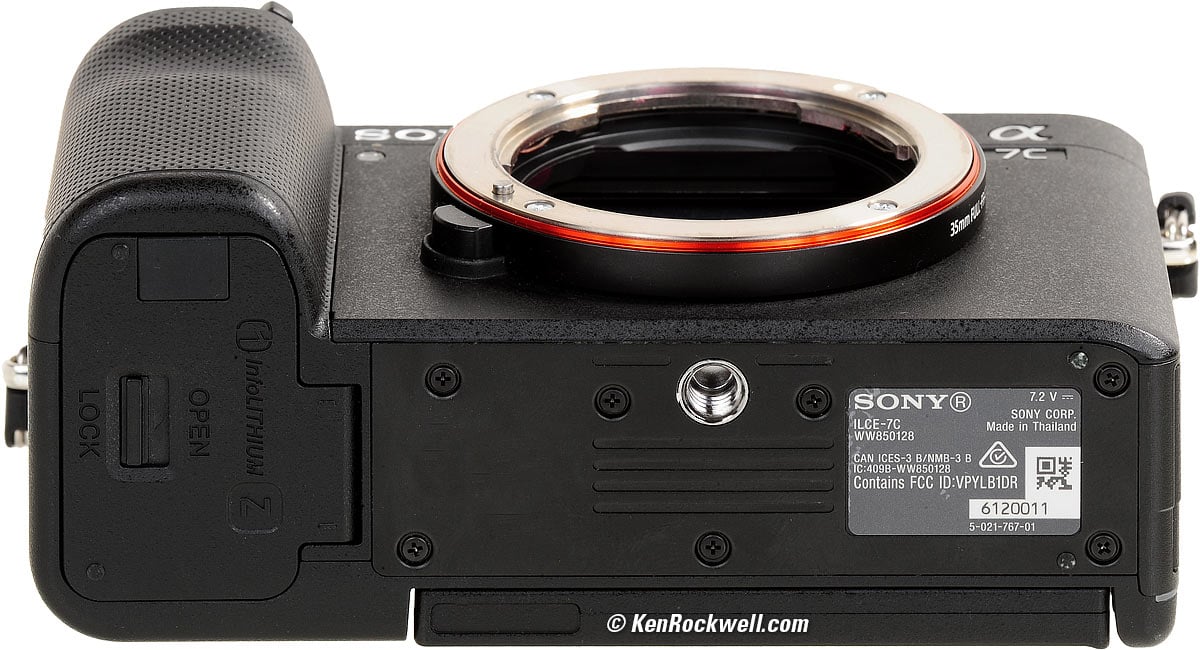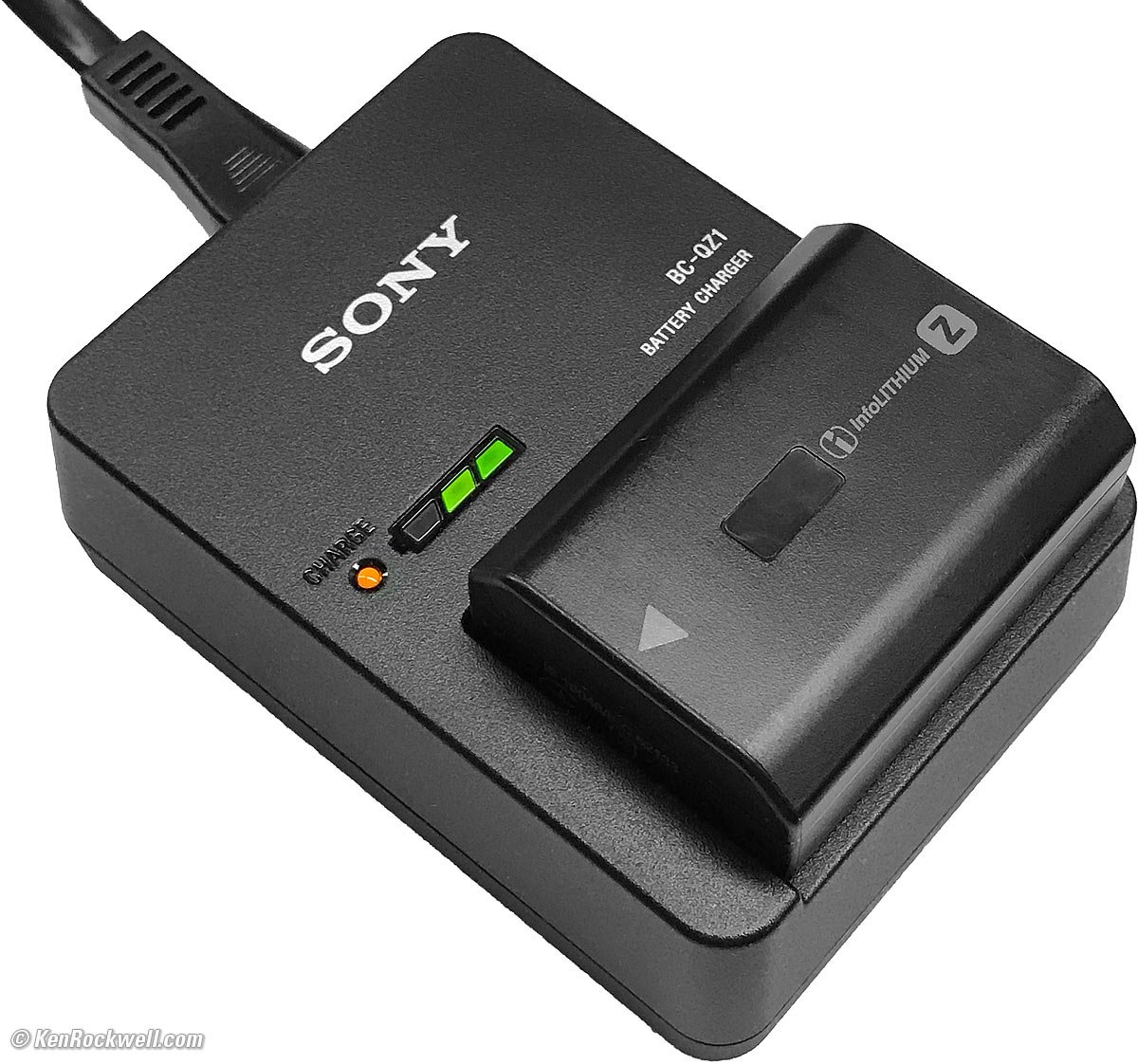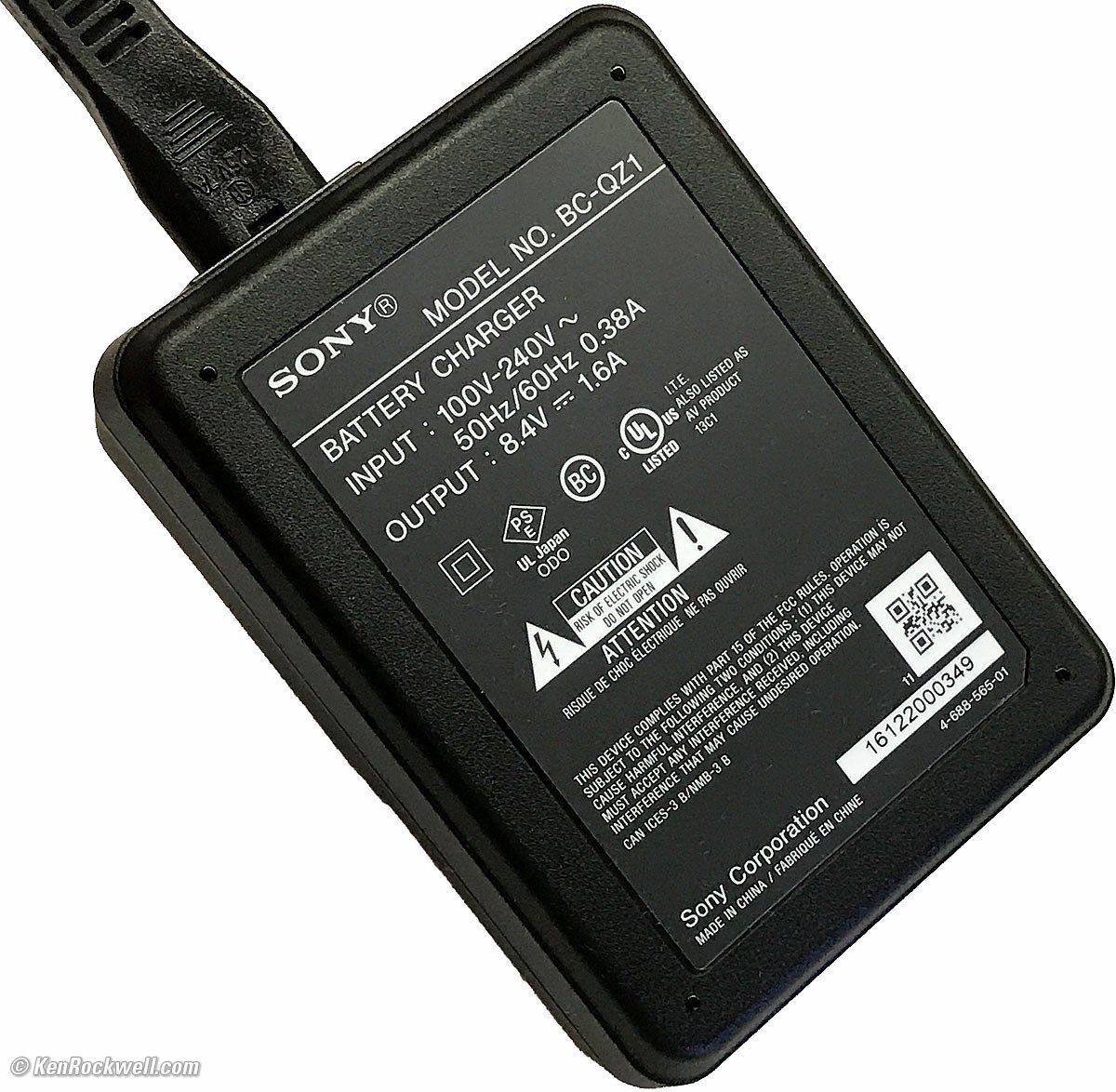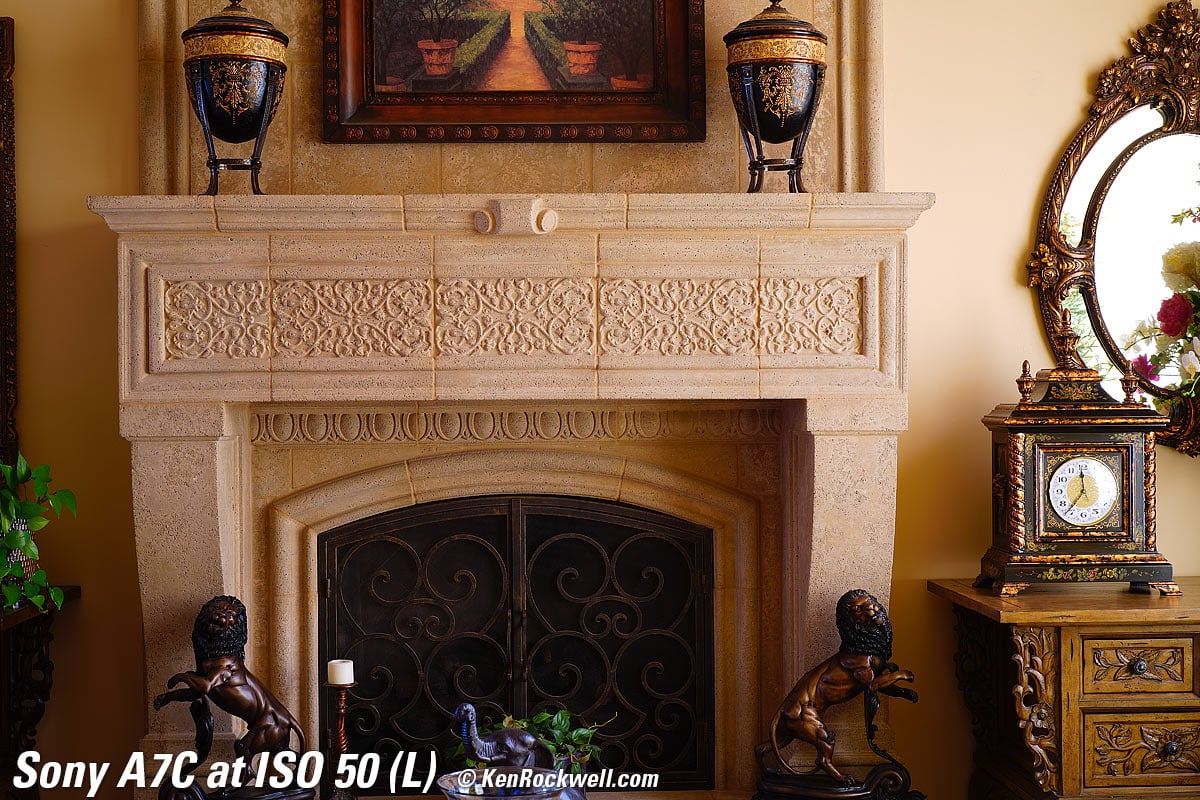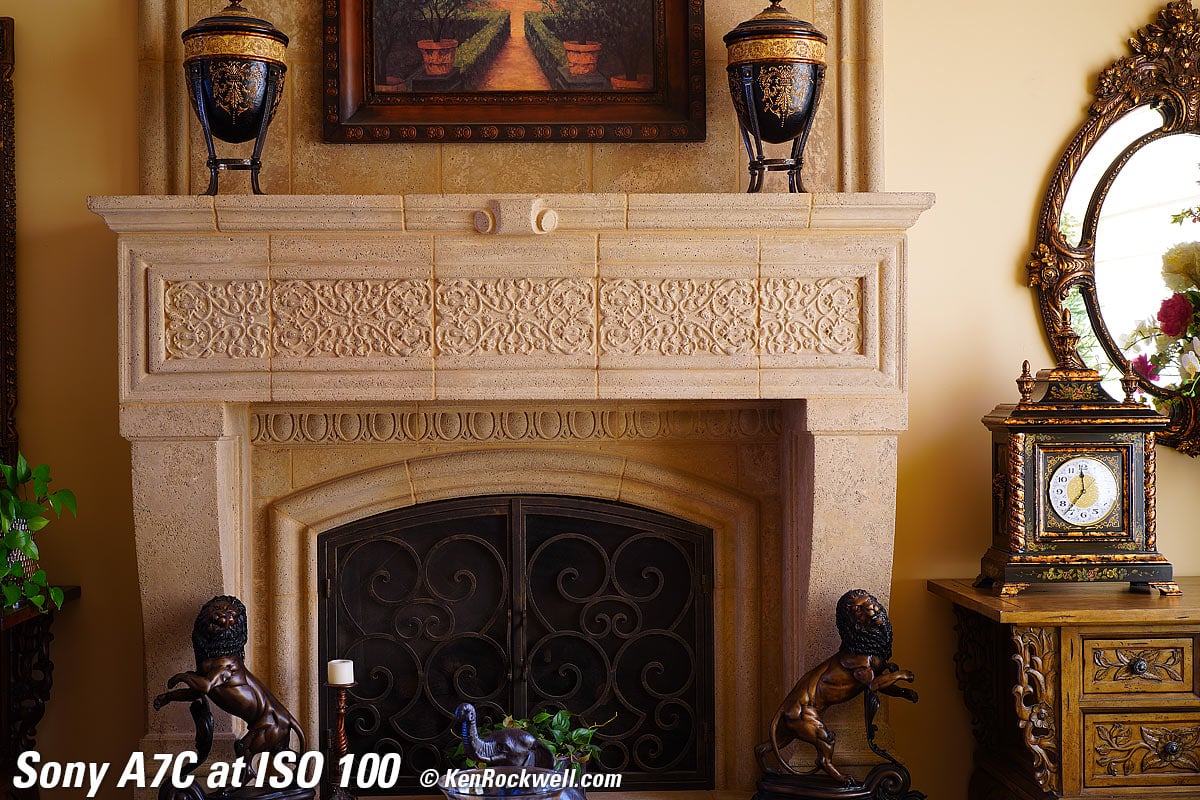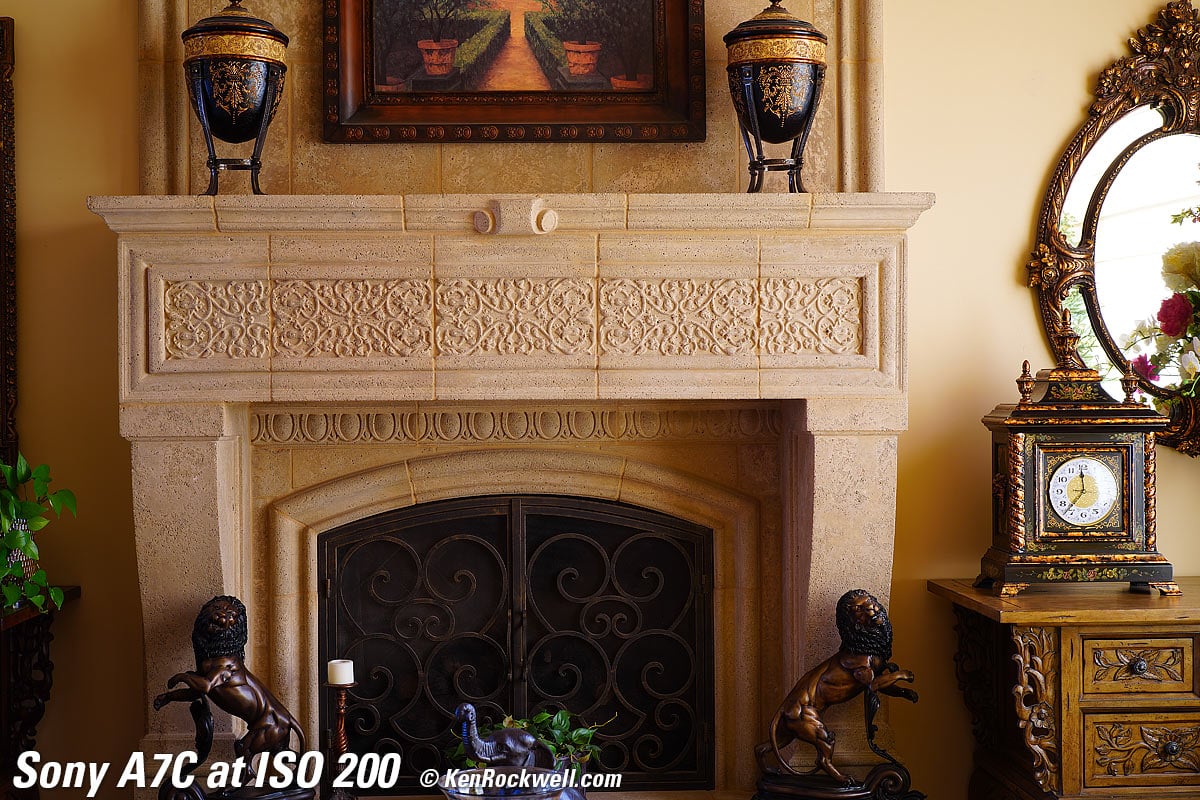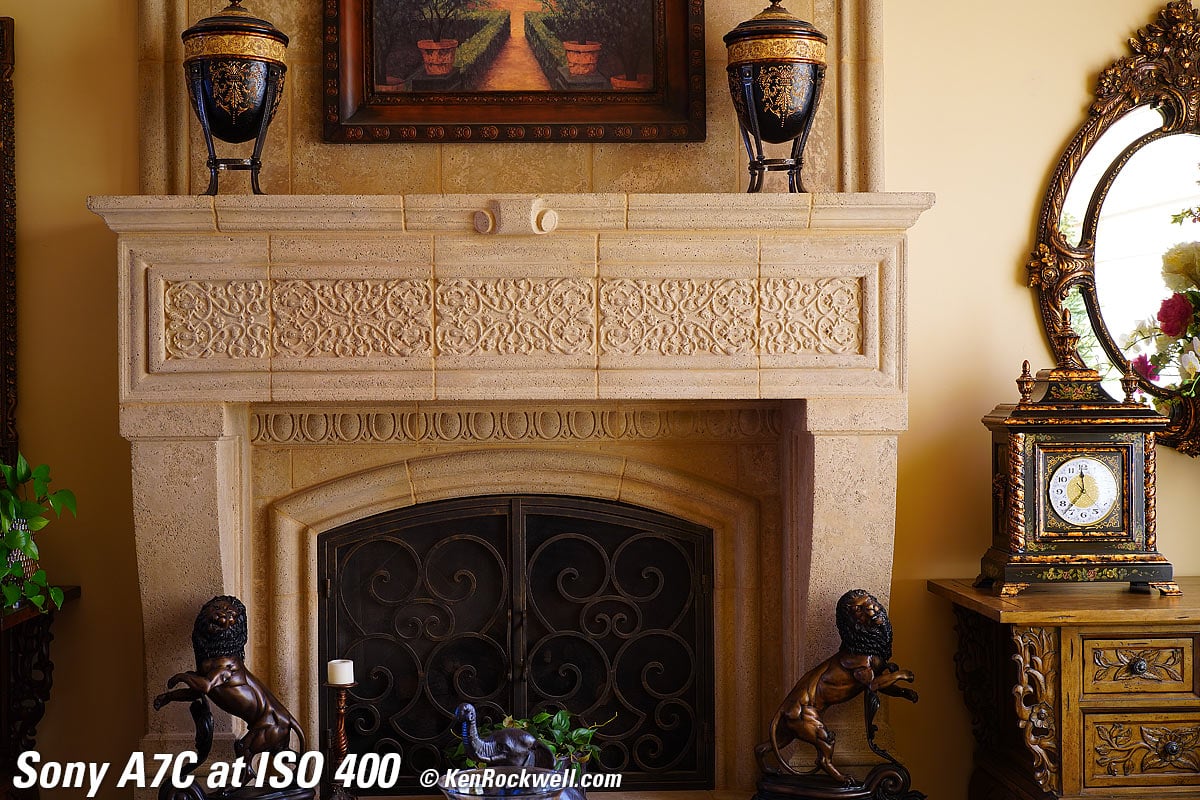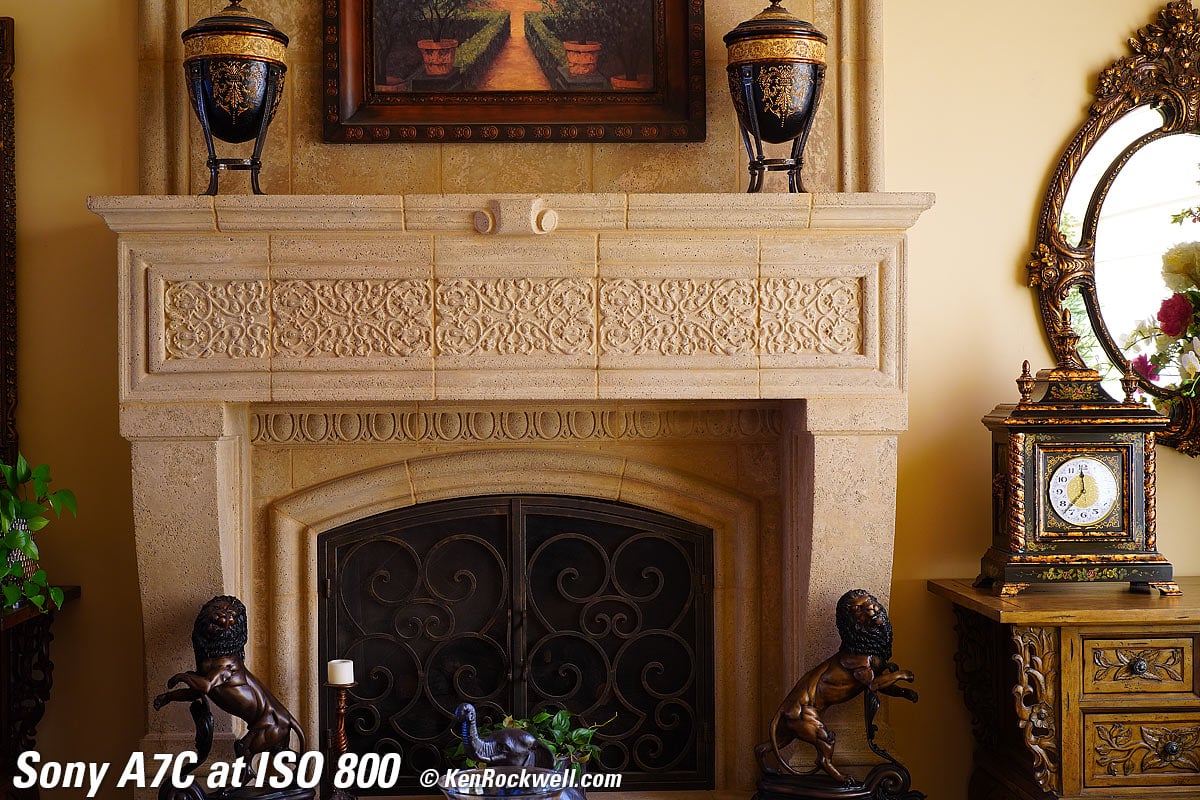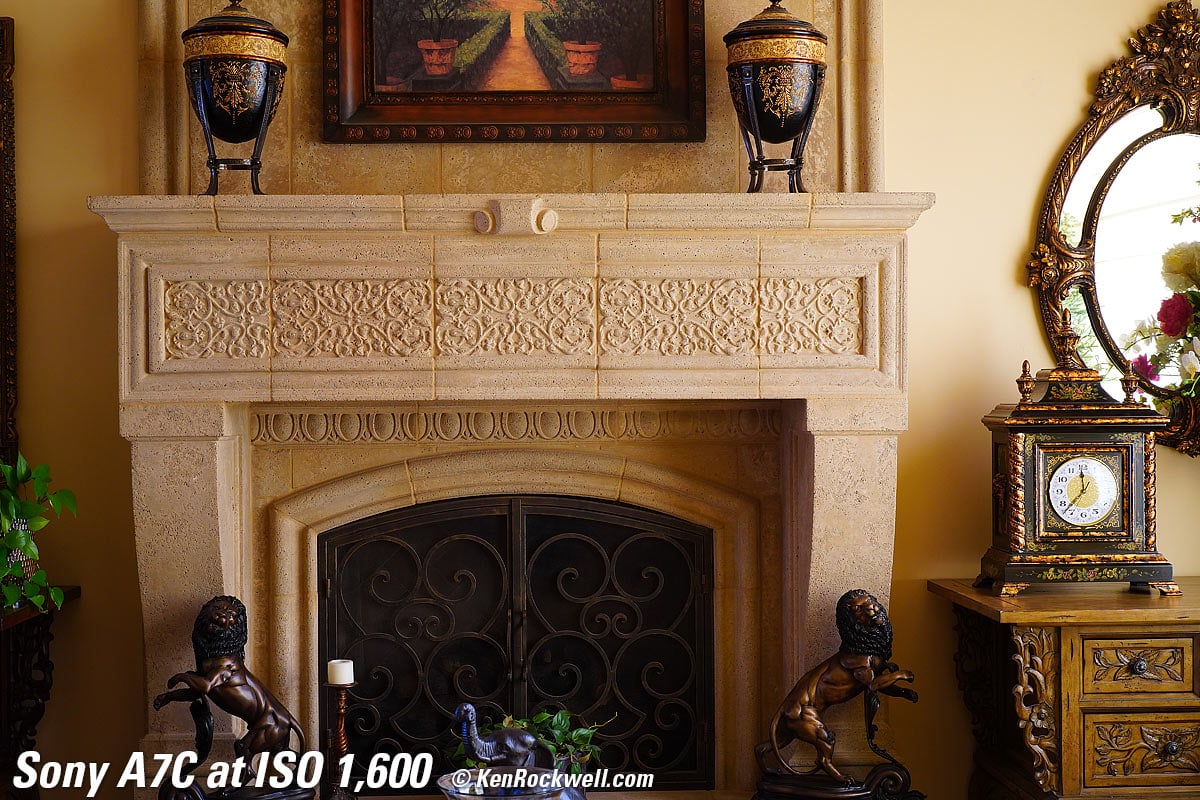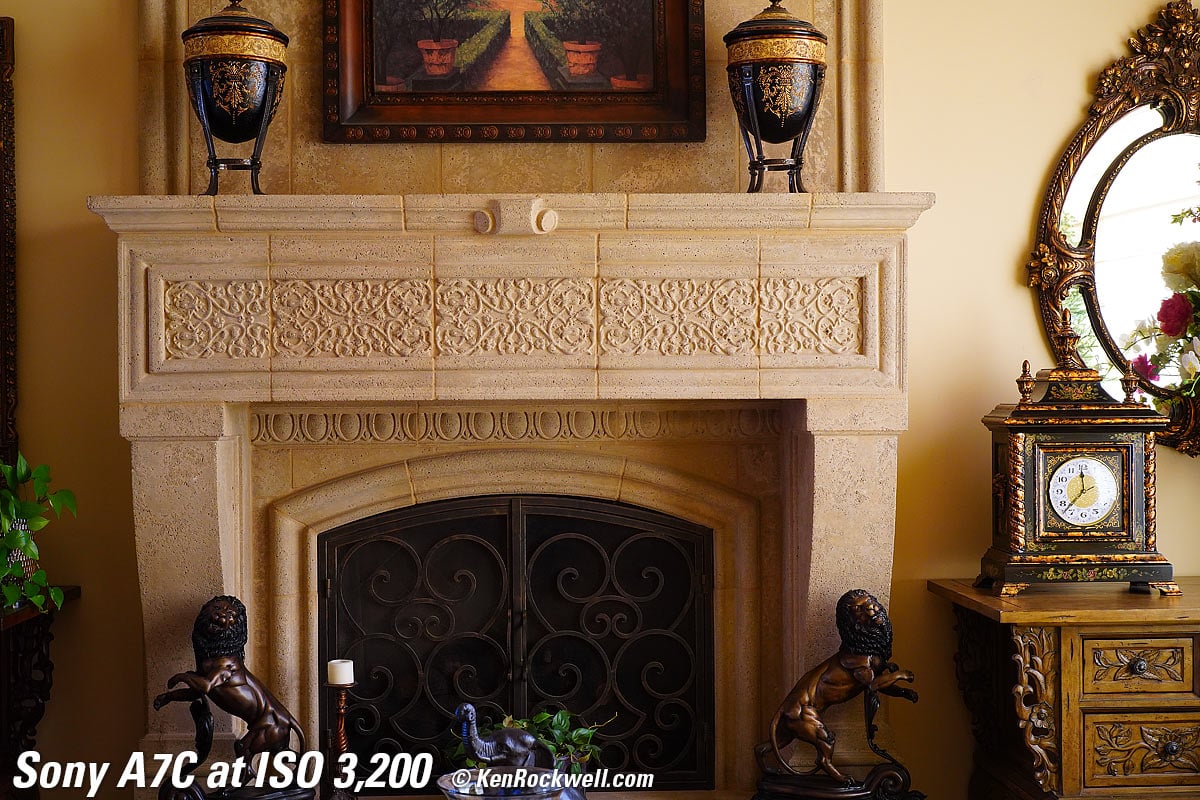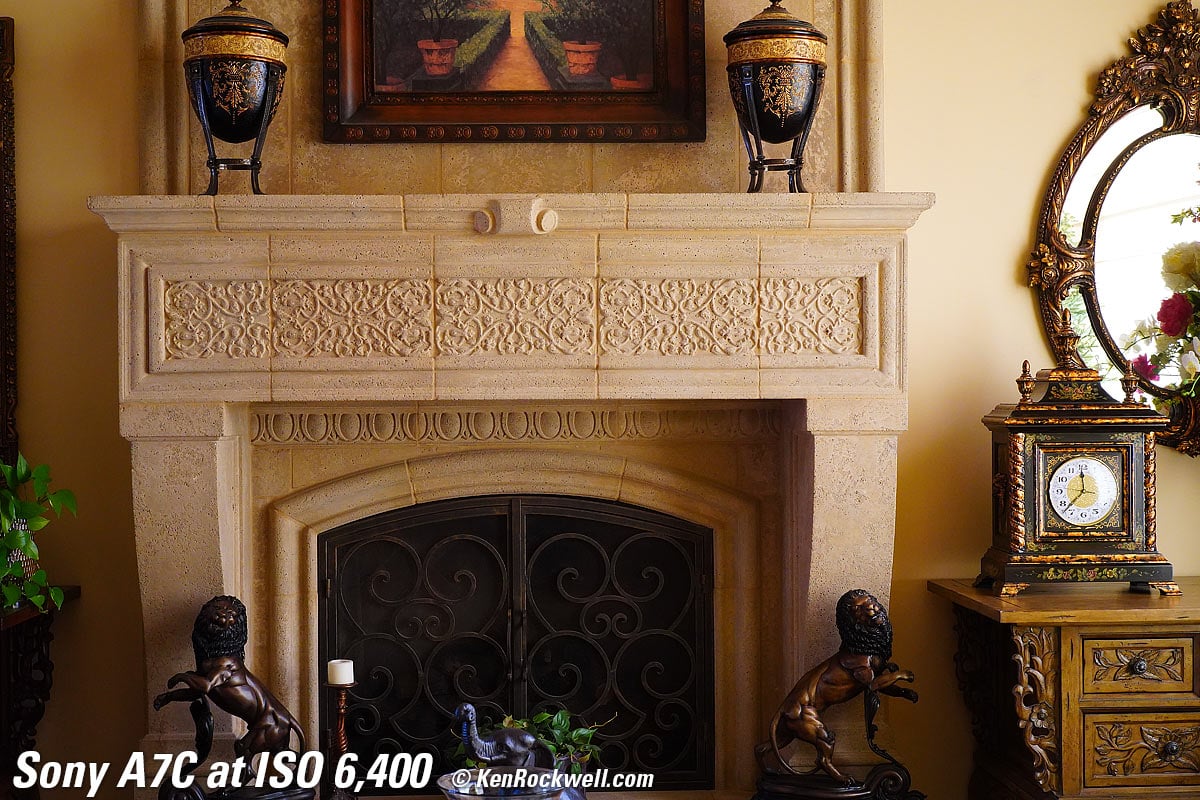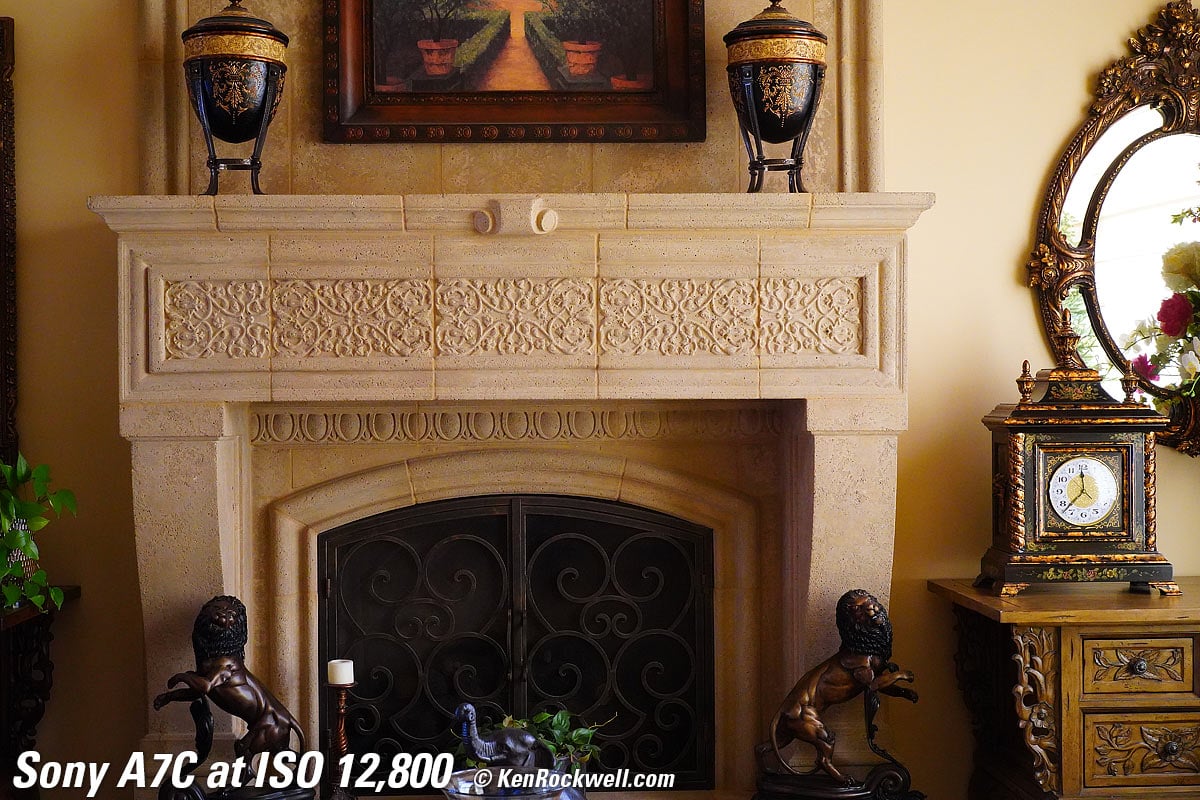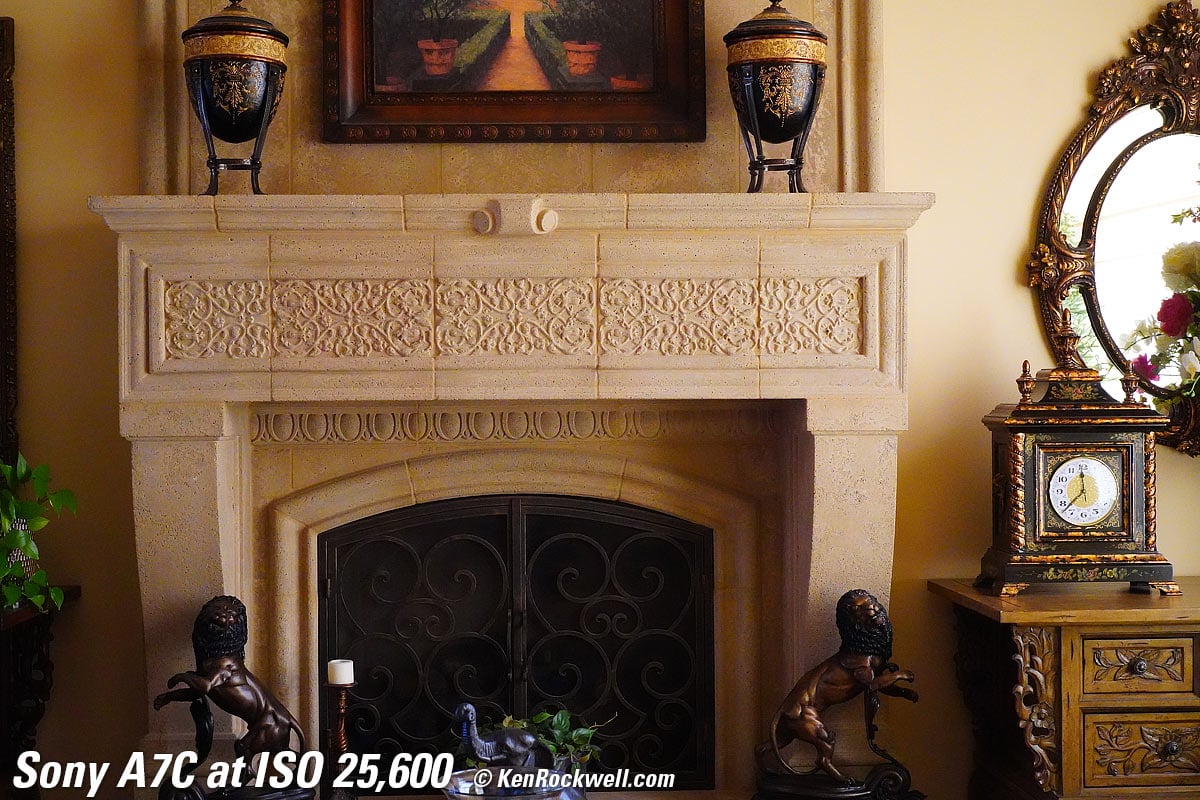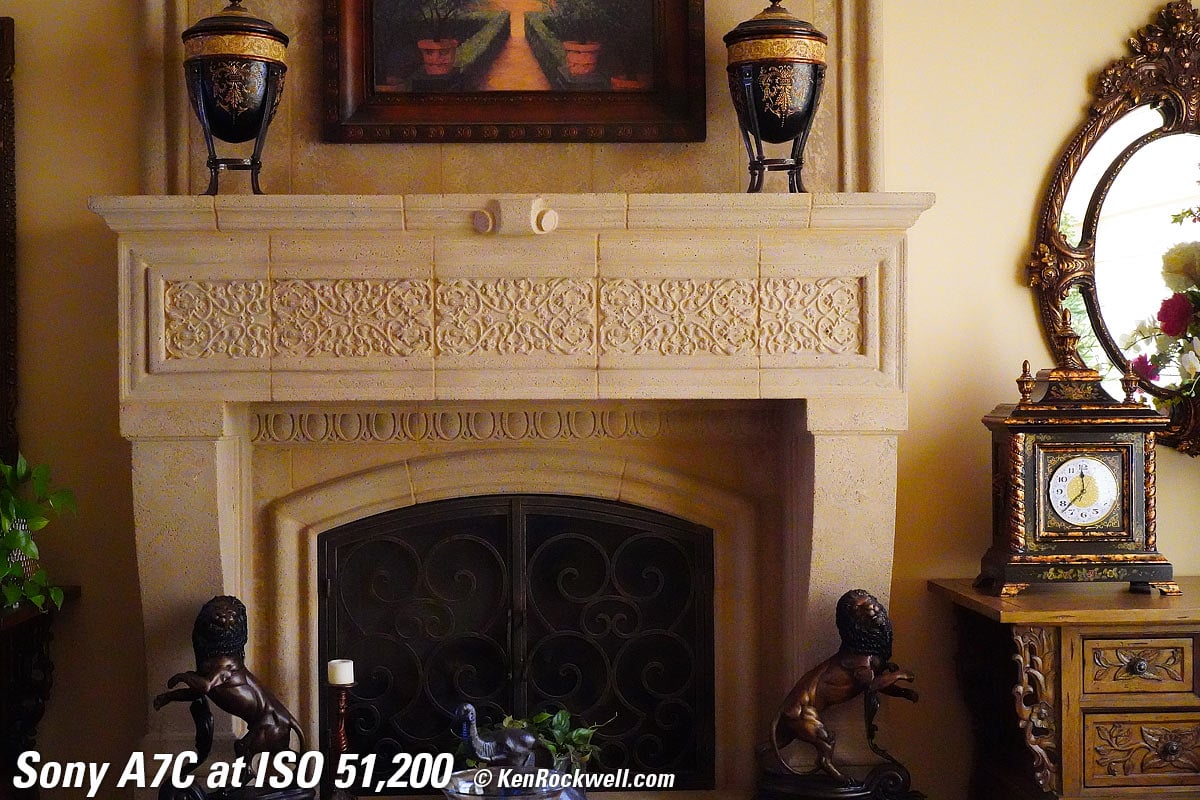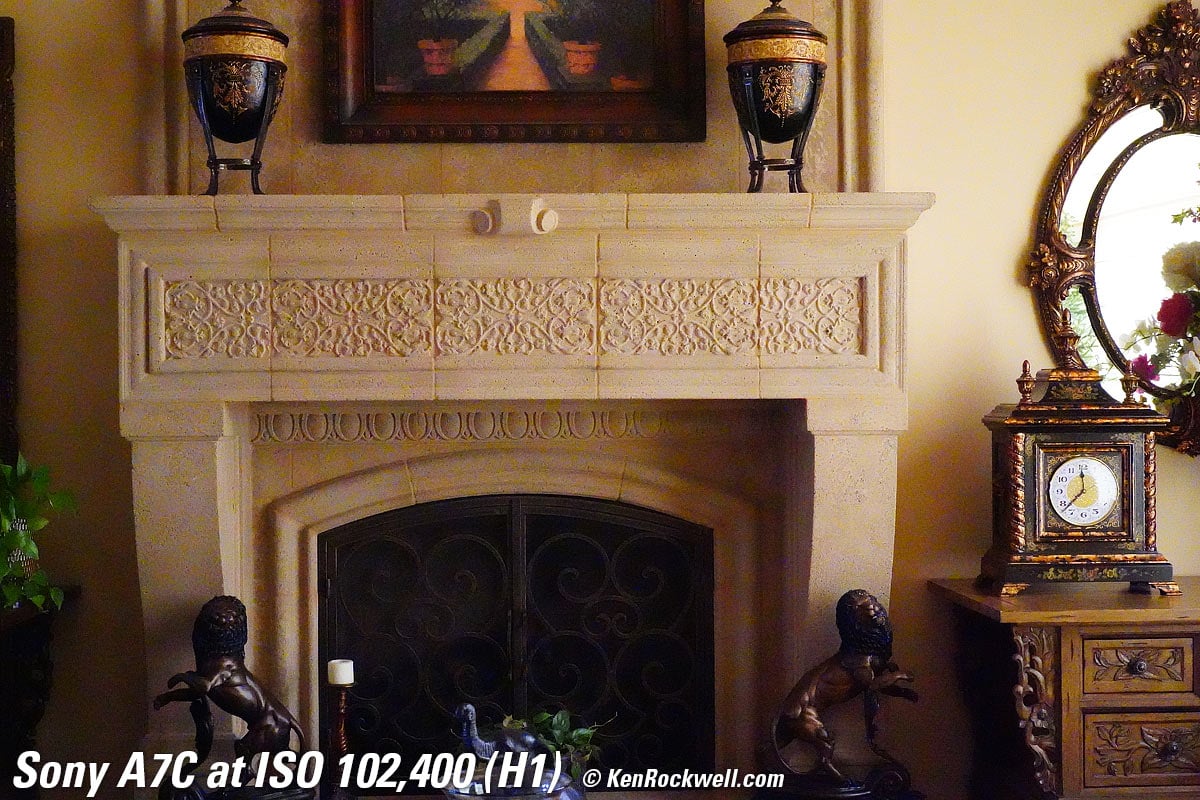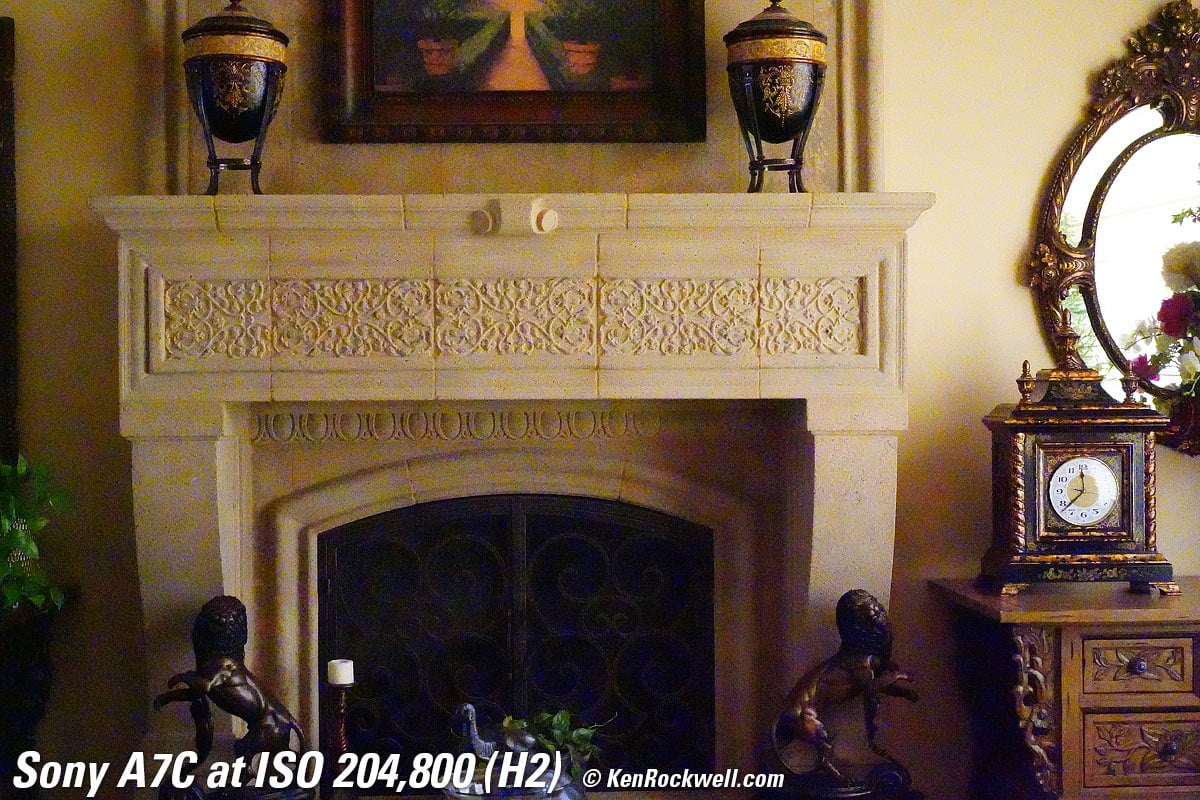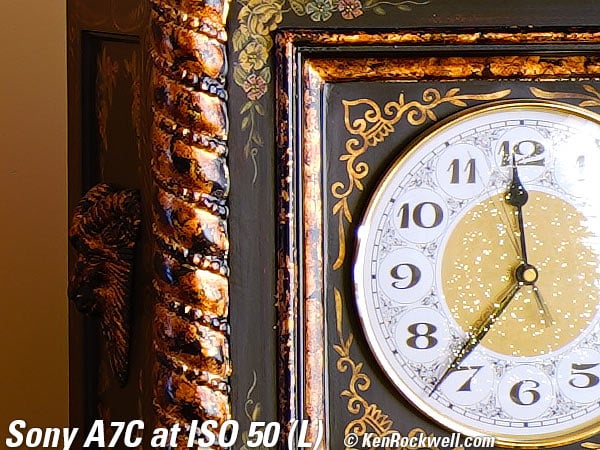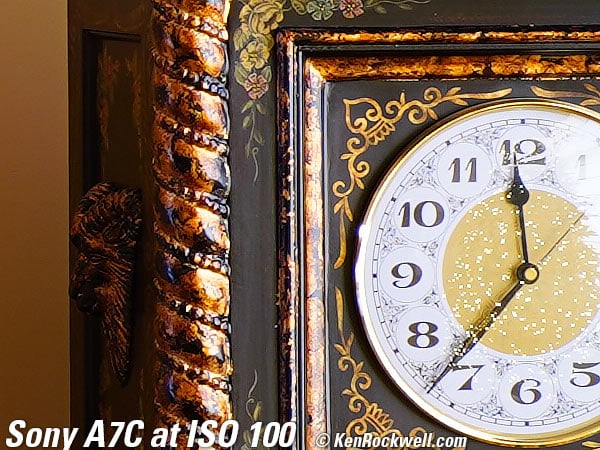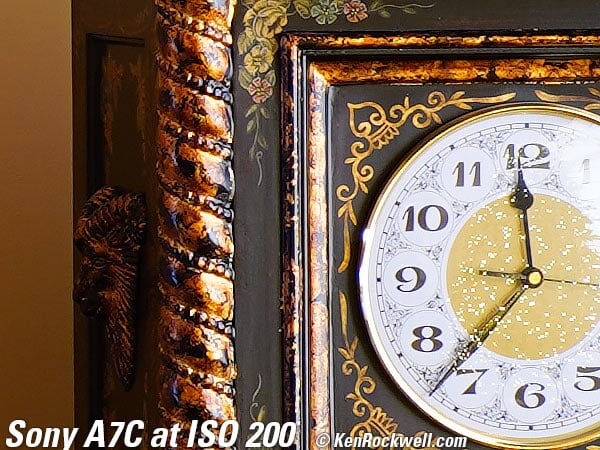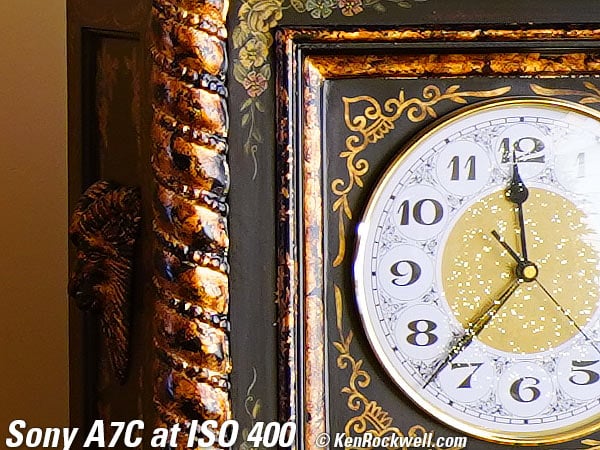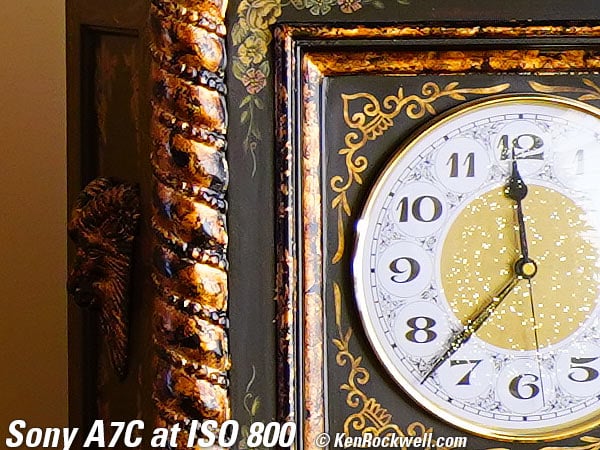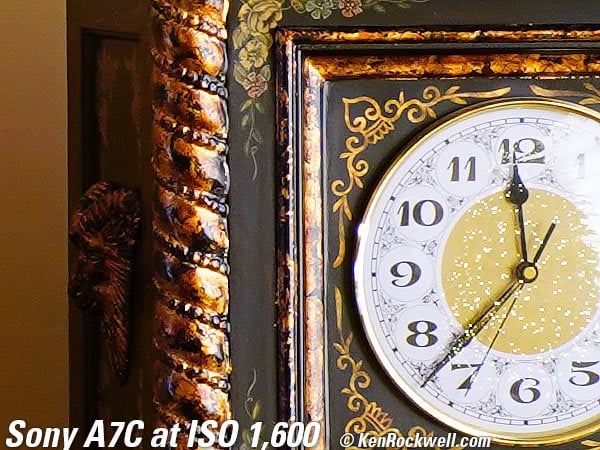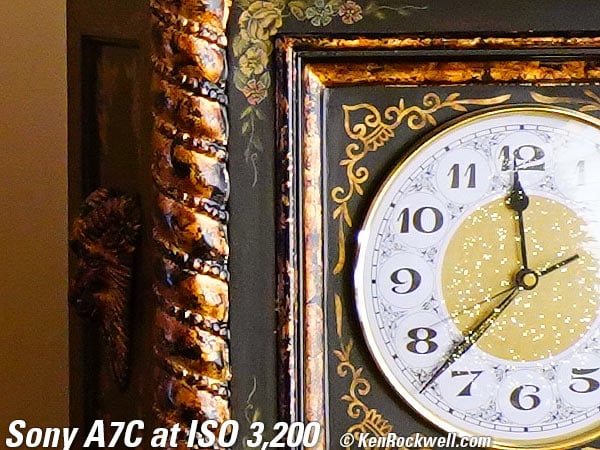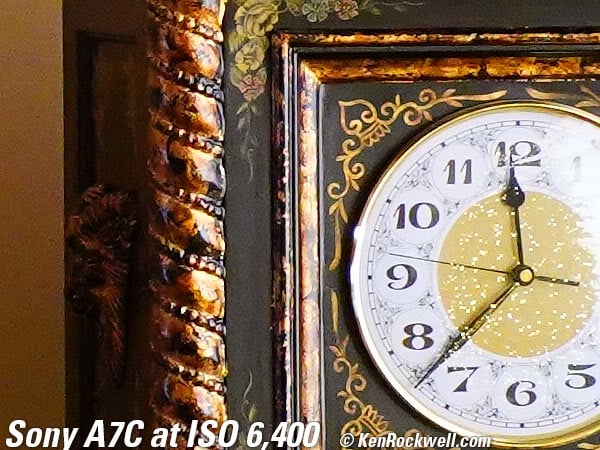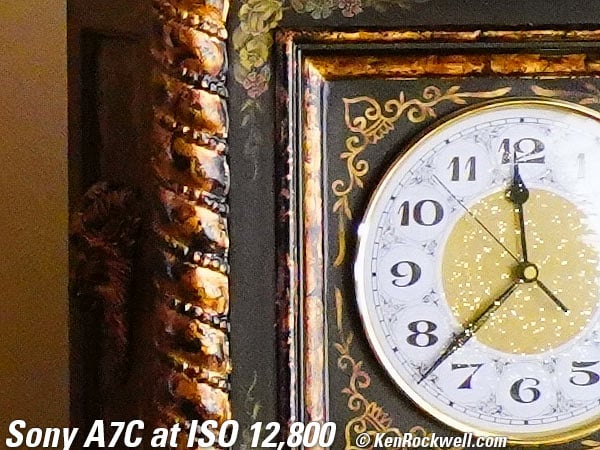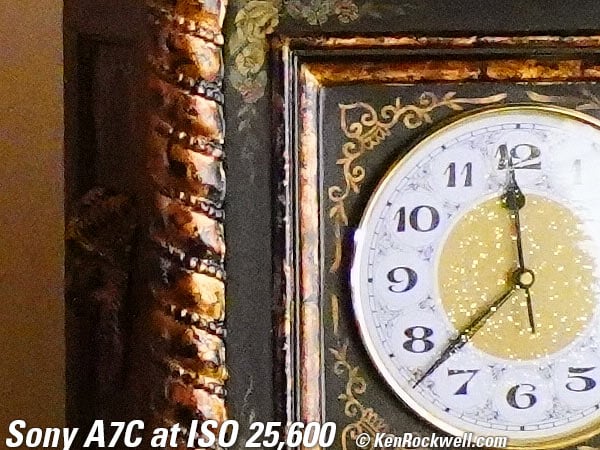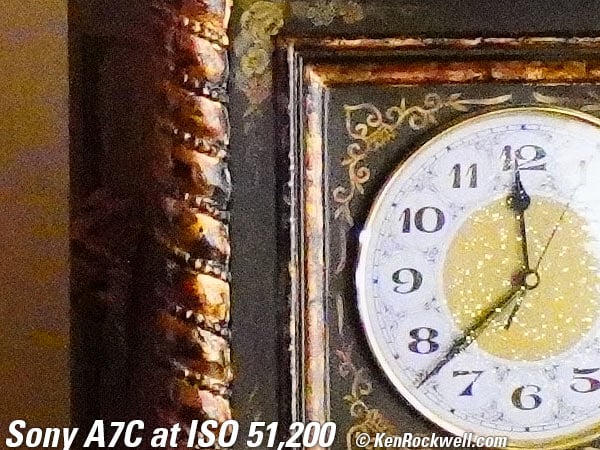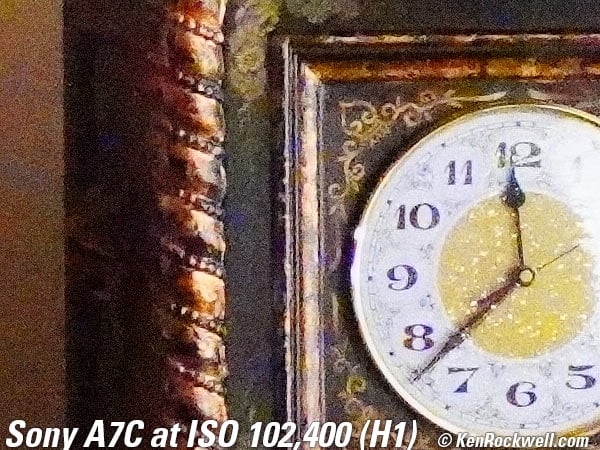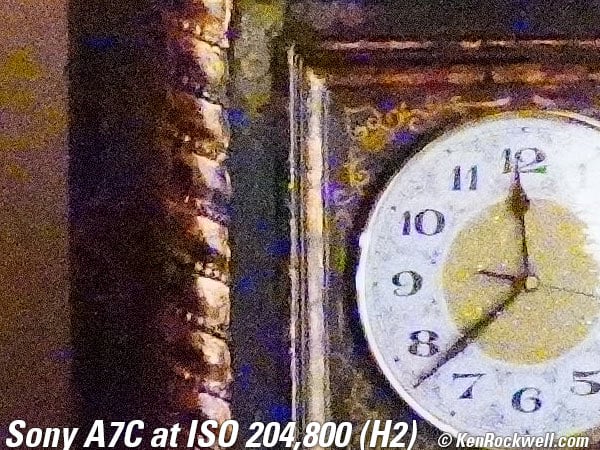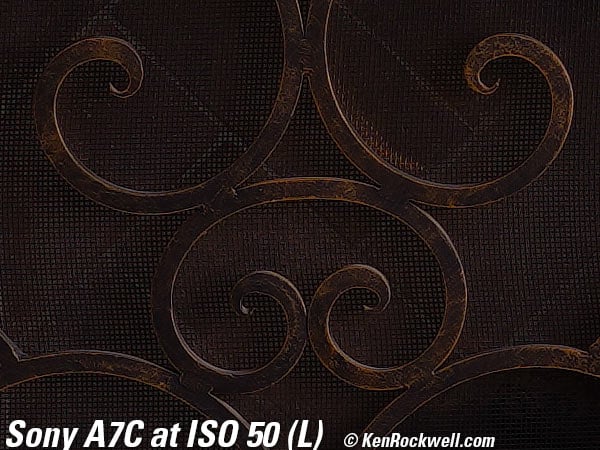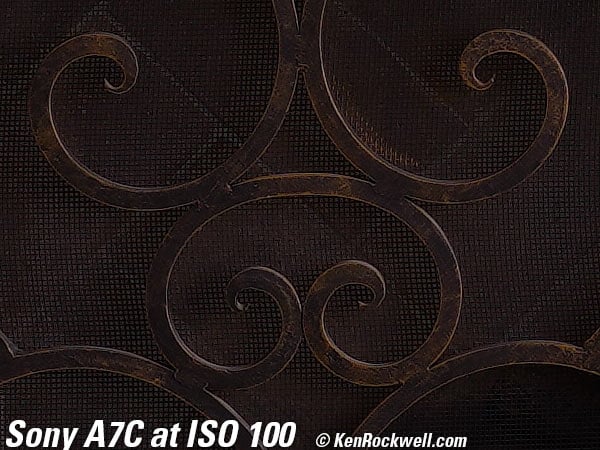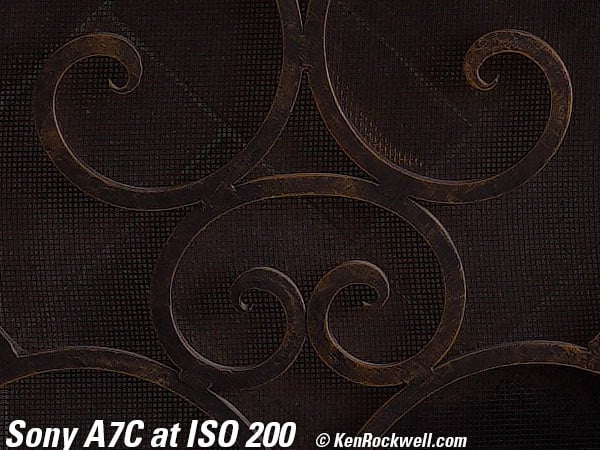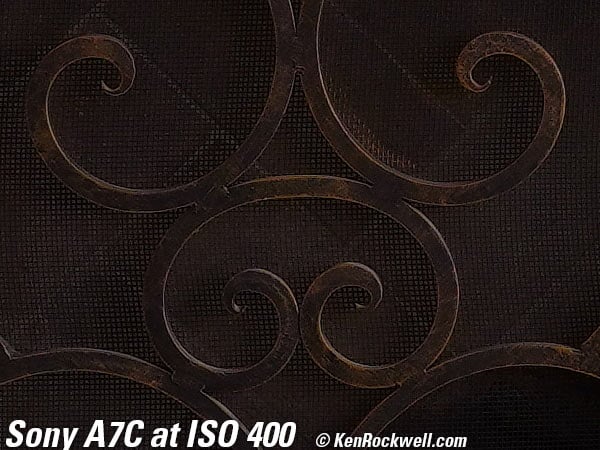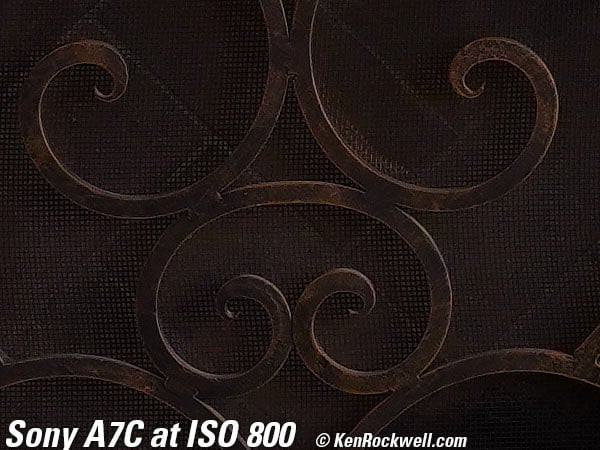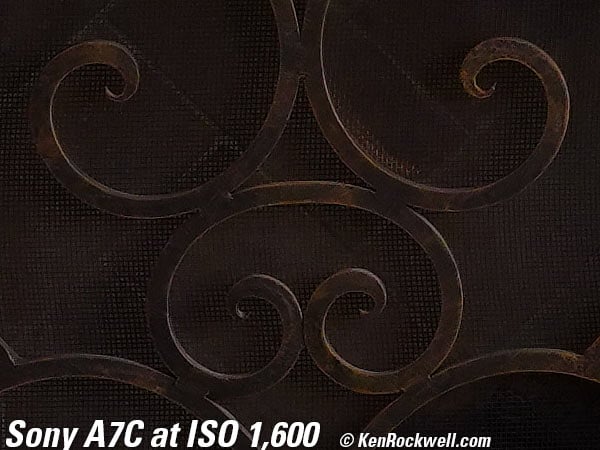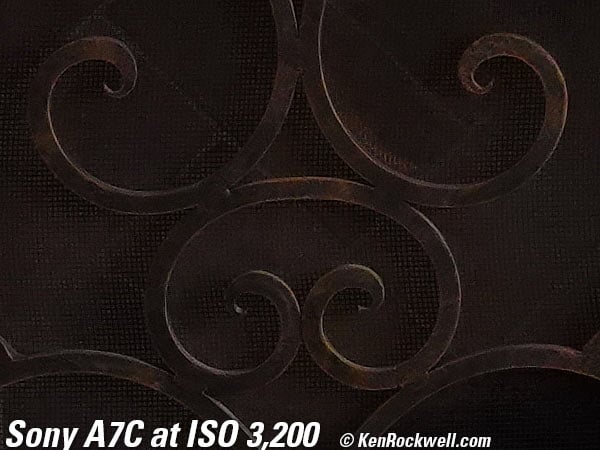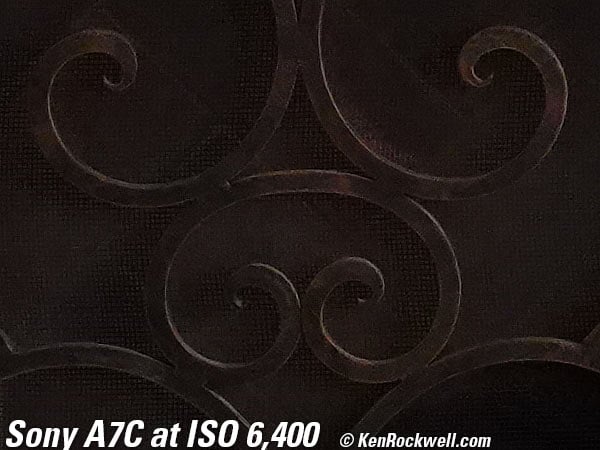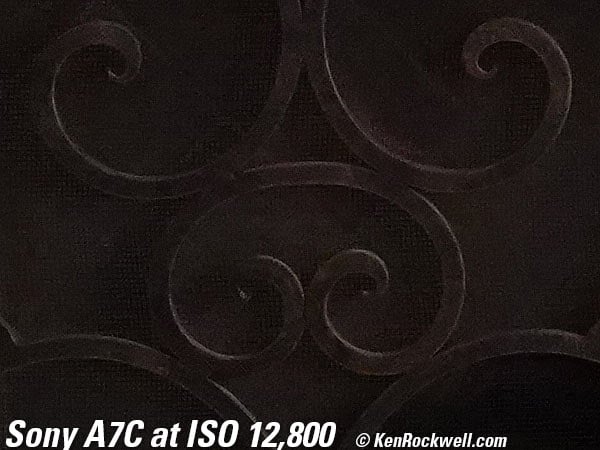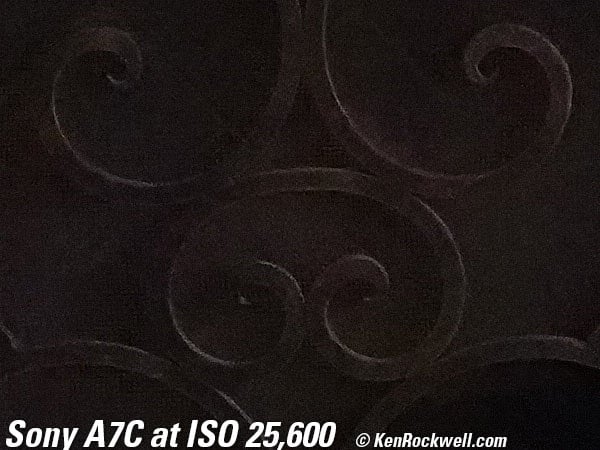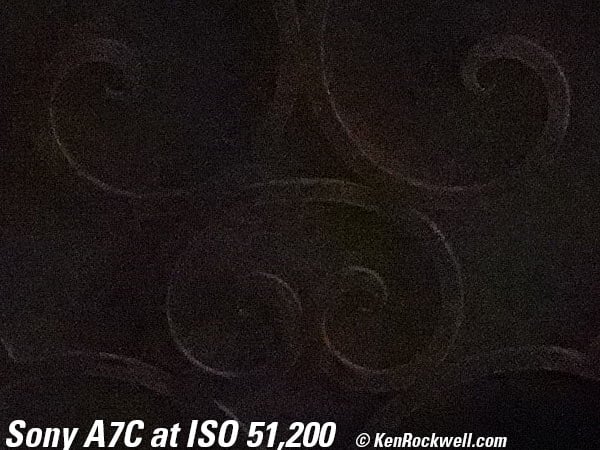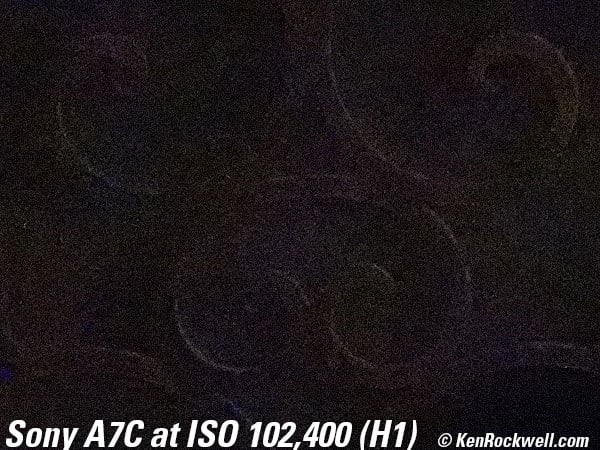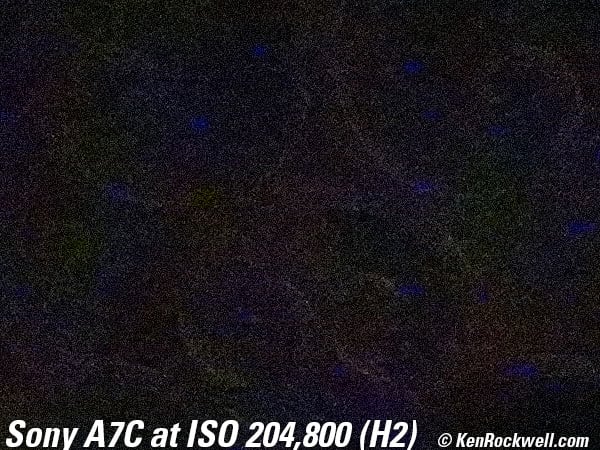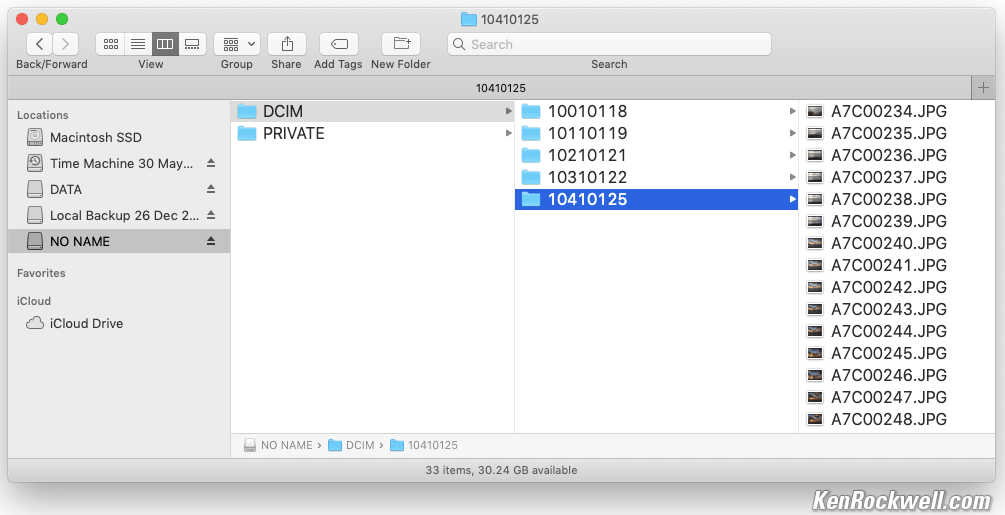Sony A7C
10 Silent FPS, 24MP stabilized full-frame, ISO 51,200/204,800 (H2), 4K Stereo
Sample Images Intro Lenses & Adapters
Specifications Accessories USA Version
Sony: A9 III A1 A9 II A9 A7R V A7R IV A7R III A7 IV A7 III A7R II A7S III A7c A7 II A6600 A6400 A6100 A6000 ZV-E10 RX10/4 RX100/7 RX100/6 Flash Lenses
Sony A7C (17.9 oz./508 g with battery and card, $1,798, comes in black and in silver) and Sony FE 28-60mm. bigger.
Black body: $1,798 at Adorama, at Amazon, at B&H and at Crutchfield.
Silver body: $1,798 at Adorama, at Amazon, at B&H and at Crutchfield.
Black body & 28-60mm: $2,098 at Adorama, at Amazon, at B&H and at Crutchfield.
Silver body & 28-60mm: $2,098 at Adorama, at Amazon, at B&H and at Crutchfield.
These are all available at eBay if you know How to Win at eBay.
This 100% all-content, junk-free website's biggest source of support is when you use those or any of these links to my personally approved sources I've used myself for way over 100 combined years when you get anything, regardless of the country in which you live. Sony does not seal its boxes in any way, so never buy at retail or any other source not on my personally approved list since you'll have no way of knowing if you're missing accessories, getting a defective, damaged, returned, non-USA, store demo or used camera — and all of my personally approved sources allow for 100% cash-back returns for at least 30 days if you don't love your new camera. I've used many of these sources since the 1970s because I can try it in my own hands and return it if I don't love it, and because they ship from secure remote warehouses where no one gets to touch your new camera before you do. Buy only from the approved sources I've used myself for decades for the best prices, service, return policies and selection.
January 2021 Better Pictures Sony Sony Lenses Canon Nikon Fuji LEICA Zeiss All Reviews
Nikon vs Canon vs Sony Full Frame Mirrorless
Sony A7C. bigger.
Sony A7C. bigger.
Sample Images top
Sample Images Top Intro Lenses & Adapters
Specifications Accessories USA Version
More at High ISOs.
These are just snapshots and there are many more throughout the review; my real work is in my Gallery.
Sunset, Torrey Pines, 5:08 PM, 18 January 2021. Tightly cropped from Sony A7C, Sony FE 28-60mm at 60mm at f/8 at 1/50 at Auto ISO 200 (LV 11.6), Perfectly Clear. bigger or camera-original © JPG file. If I printed the whole image at the same magnification as this crop, the complete image would be three times as big as you see here.
I deliberately underexposed so I wouldn't lose color saturation in the brilliant orange dot of the sun, knowing I'd bring up the rest of the dark image in Perfectly Clear as I've shown here.
Angry Sunset (27 MPH westerly winds), Torrey Pines, 4:57 PM, Monday, 25 January 2021. Sony A7C, Sony FE 28-60mm at 28mm at f/8 at 1/250 at Auto ISO 100 with -0.7 stops exposure compensation (LV 14.0), Perfectly Clear. bigger, full-resolution or camera-original © JPG file.
Again I deliberately underexposed with -0.7 stops exposure compensation so I wouldn't lose color saturation in the brilliant orange areas, knowing I'd bring up the rest of the dark image in Perfectly Clear as I've shown here.
Moon in Angry Sky as seen from Torrey Pines, 5:07 PM, Monday, 25 January 2021. Sony A7C, Sony FE 28-60mm at 60mm at f/8 at 1/125 at Auto ISO 100 with -0.7 stops exposure compensation (LV 13.0), Perfectly Clear. bigger, full-resolution or camera-original © JPG file.
Again I deliberately underexposed with -0.7 stops exposure compensation so I wouldn't lose detail in the moon or color saturation in the brilliant orange areas, knowing I'd bring up the rest of the dark image in Perfectly Clear as I've shown here.
Introduction top
Sample Images Intro Lenses & Adapters
Specifications Accessories USA Version
|
I buy only from these approved sources. I can't vouch for ads below. |
The Sony A7C is Sony's smallest and lightest current full-frame camera with the same or better performance as their larger cameras.
All you need to know is that it's a little smaller, it's less expensive and has a few less buttons than Sony's other cameras. Otherwise it works exactly as well, and that its image quality is as good or better than Sony's other cameras.
This new A7C has the same resolution, same 1,200 zone light meter, same same ISO range and slightly better ultra-high ISO performance than the $4,500 A9 II; the A9 II has more color blotches in its shadows at ISO 204,800 (H2) than the A7C at the same ISO 204,800 (H2). This A7C has more detail at ISO 204,800 (H2) than the A9 II. This A7C also can shoot at up to ISO 204,800 (H2) with its silent electronic shutter, while the $4,500 A9 II can only shoot at up to ISO 25,600 with its silent shutter. HA!
This A7C's autofocus system has the same 693 points as is rated one-stop more sensitive in low-light than the $4,500 A9 II.
This A7C is rated for 680 shots per charge compared to only 500 with the $4,500 A9 II. This is the longest rated battery life of any Sony full-frame camera.
Besides having fewer programmable C buttons due to lack of space compared to larger Sonys, the biggest loss is the A7C's tiny finder. The tiny finder is much smaller than the finders of larger cameras, rated only 0.59× magnification versus typically 0.78× ~ 0.90× in larger Sonys. That's about 30%~50% smaller!
Personally I prefer Canon mirrorless (see Nikon vs Canon vs Sony Full Frame Mirrorless), and especially the EOS RP which is even lighter and much less expensive, but if you're in the Sony system, yes, this is the best little Sony ever if you don't mind the tiny finder.
New
 Sony's smallest, lightest and least expensive current full-frame (but the Canon EOS RP is a better camera and is even lighter and less expensive).
Sony's smallest, lightest and least expensive current full-frame (but the Canon EOS RP is a better camera and is even lighter and less expensive).
 Sony's smallest electronic finder on a full-frame camera to date.
Sony's smallest electronic finder on a full-frame camera to date.
Good
 Same image quality as Sony's more expensive cameras.
Same image quality as Sony's more expensive cameras.
 As-shot 1:1 square, 4:3 and 16:9 crops.
As-shot 1:1 square, 4:3 and 16:9 crops.
 Great battery life, rated 680 shots.
Great battery life, rated 680 shots.
 Hybrid AF system uses phase-detection for speed and contrast detection for ultimate precision and accuracy.
Hybrid AF system uses phase-detection for speed and contrast detection for ultimate precision and accuracy.
 Even the regular mechanical shutter only moves at the ends of exposures. There's never any need for a special vibration-free mode; it always works this way. Suck on that, LEICA!
Even the regular mechanical shutter only moves at the ends of exposures. There's never any need for a special vibration-free mode; it always works this way. Suck on that, LEICA!
 Excellent high ISO performance.
Excellent high ISO performance.
 Best sensor-shift Image Stabilization I've ever tested (rated 5 stops improvement), but still not as good as in-lens stabilization.
Best sensor-shift Image Stabilization I've ever tested (rated 5 stops improvement), but still not as good as in-lens stabilization.
 In-finder 2-axis level works great for keeping horizons and vertical lines as they should be.
In-finder 2-axis level works great for keeping horizons and vertical lines as they should be.
 In-camera, as-shot automatic lens vignetting, lateral chromatic aberration and distortion correction.
In-camera, as-shot automatic lens vignetting, lateral chromatic aberration and distortion correction.
 Almost any lens of any brand or age can be adapted to work - but with no lens corrections.
Almost any lens of any brand or age can be adapted to work - but with no lens corrections.
 Stereo microphone built-in.
Stereo microphone built-in.
 3.5mm powered mic and headphone jacks.
3.5mm powered mic and headphone jacks.
 Bluetooth 4.1 & NFC.
Bluetooth 4.1 & NFC.
 Small grip means lenses with goggles for the LEICA M3 (35mm and 135mm) mount fine with no obstruction between goggles and grip. Hint: mount the goggled lens to the adapter, and then the adapted lens to the camera.
Small grip means lenses with goggles for the LEICA M3 (35mm and 135mm) mount fine with no obstruction between goggles and grip. Hint: mount the goggled lens to the adapter, and then the adapted lens to the camera.
Bad
 Small finder.
Small finder.
 Awful menu system condemns us to trudging through every menu option to find anything unless we can put it in the My Menu menu. For instance, there's no dedicated AF menu; it's hidden inside the Camera menus and format is hidden at MENU > Suitcase > page 5/6 > Format!
Awful menu system condemns us to trudging through every menu option to find anything unless we can put it in the My Menu menu. For instance, there's no dedicated AF menu; it's hidden inside the Camera menus and format is hidden at MENU > Suitcase > page 5/6 > Format!
 Slight delays between moving any control and when its result displays in the finder. This slows camera settings compared to cameras without any delay.
Slight delays between moving any control and when its result displays in the finder. This slows camera settings compared to cameras without any delay.
 Like most or all Sonys, the touch screen can't set menus or enter text.
Like most or all Sonys, the touch screen can't set menus or enter text.
 Offshored to Thailand, not made domestically in Japan.
Offshored to Thailand, not made domestically in Japan.
Missing
 No second card slot.
No second card slot.
 No C1 or C2 buttons on top and no C3 button on the back (not enough room; has instead one red programmable button on top and one C button on back).
No C1 or C2 buttons on top and no C3 button on the back (not enough room; has instead one red programmable button on top and one C button on back).
 No built-in flash.
No built-in flash.
 No shutter speed dial.
No shutter speed dial.
 No AF/MF mode switch.
No AF/MF mode switch.
 No ISO dial.
No ISO dial.
 No full-stop ISO setting increment option, have to set in third-stop increments.
No full-stop ISO setting increment option, have to set in third-stop increments.
 Top mechanical shutter speed 1/4,000, Top electronic shutter speed 1/8,000.
Top mechanical shutter speed 1/4,000, Top electronic shutter speed 1/8,000.
 No timed manual exposures longer than 30 seconds. You have to use Bulb, a remote release and an external timer instead.
No timed manual exposures longer than 30 seconds. You have to use Bulb, a remote release and an external timer instead.
 In-finder data displays do not rotate for vertical shots.
In-finder data displays do not rotate for vertical shots.
 No illuminated buttons.
No illuminated buttons.
 Silent electronic shutter won't work with flash.
Silent electronic shutter won't work with flash.
 Flash sync speed only 1/160.
Flash sync speed only 1/160.
 No auto brightness control for the rear LCD (but great auto brightness control for the electronic finder).
No auto brightness control for the rear LCD (but great auto brightness control for the electronic finder).
 It has face and eye detection and it also can recognize animal faces, but you have to select that either HUMAN or ANIMAL in a menu; it's not smart enough to just figure it out.
It has face and eye detection and it also can recognize animal faces, but you have to select that either HUMAN or ANIMAL in a menu; it's not smart enough to just figure it out.
 Not threaded to use a standard threaded cable release.
Not threaded to use a standard threaded cable release.
 No GPS.
No GPS.
 Touch screen lets you select movie focus areas, but doesn't work for setting the menus or entering text.
Touch screen lets you select movie focus areas, but doesn't work for setting the menus or entering text.
 No multi-frame noise reduction (just set a slower ISO and make a longer exposure for the same effect).
No multi-frame noise reduction (just set a slower ISO and make a longer exposure for the same effect).
 No swept panoramas (an iPhone does this better anyway).
No swept panoramas (an iPhone does this better anyway).
 No ability to save and recall camera settings to and from a card.
No ability to save and recall camera settings to and from a card.
Lenses & Adapters top
Sample Images Intro Lenses & Adapters
Specifications Accessories USA Version
Black body: $1,798 at Adorama, at Amazon, at B&H and at Crutchfield.
Silver body: $1,798 at Adorama, at Amazon, at B&H and at Crutchfield.
Black body & 28-60mm: $2,098 at Adorama, at Amazon, at B&H and at Crutchfield.
Silver body & 28-60mm: $2,098 at Adorama, at Amazon, at B&H and at Crutchfield.
These are all available at eBay if you know How to Win at eBay.
Lens Compatibility
Sony A7C. bigger.
The A7C uses the Sony E-Mount, whose shallow 18mm flange focal distance allows better lens designs than DSLRs do — the same advantage rangefinder cameras have, as well as allowing just about any lens to mount with an adapter.
The A7C works best with lenses made by Sony, Zeiss and others native to Sony's mirrorless E-Mount.
If you mount a Sony or Zeiss APS-C lens, it automatically uses only the central APS-C section of the full-frame sensor. You'd never know, since all the displays just look right. It's that seamless, but sort of silly to waste most of this camera's sensor area with an APS-C lens.
Kit Lens lenses top
The tiny Sony FE 28-60mm works great. It's also weightless, super-sharp and collapses, making it an ideal lens to take everywhere.
Highest Performance Lightweight Lenses lenses top
The Sony 12-24mm f/4 G, 24-105/4 G and 70-300 G are extraordinary on the A7C. They focus just about instantly, and are super sharp at every setting.
If you want the high performance with your A7C, be sure to get the best lenses for it.
See All Sony lenses and Best Sony Lenses.
Highest Performance Heavy Lenses lenses top
The 16-35/2.8 GM, 24-70/2.8 GM, 70-200/2.8 GM and 100-400mm GM are also extraordinary on the A7C. They're not any sharper than the lighter lenses above, these are bigger because they're a stop faster. They focus just about instantly, and are super sharp at every setting.
If you want the high performance with your A7C, be sure to get the best lenses for it.
See All Sony lenses and Best Sony Lenses.
Sony's Adapters lenses top
Sony's own adapters work pretty well, but know that none of Sony's A-mount lenses are as good as the latest E-mount lenses, especially when used on E-mount.
LA-EA2 lenses top
Discontinued.
LA-EA3 lenses top
For SLR lenses with built-in AF motors.
The LA-EA3 is a great adapter and allows just about full performance with any Sony Alpha DSLR or Minolta MAXXUM 35mm SLR - but only if it's one of the very few lenses with an internal autofocus motor.
If the lens has its own AF motor, with this adapter you should get full communication and AF and everything - but top frame rate may be limited to 10 FPS.
LA-EA4 lenses top
Recommended for all SLR Sony Alpha and Minolta MAXXUM SLR lenses.
Katie at the Luau, 14 July 2017. (Sony A9 with Sony Minolta 28-135mm on Sony LA-EA4 adapter at 110mm at f/4.5 at 1/100 at Auto ISO 100, Perfectly Clear.) bigger.
Lamp, 8:01 PM, 14 July 2017. Sony A9 with Sony LA-EA4 adapter, Sony Minolta 28-135mm at 135mm at f/4.5 at 1/80 second hand-held at Auto ISO 1,250. bigger or camera-original © file.
The LA-EA4 is everything the LA-EA3 is, and adds its own AF motor to drive every Sony Alpha and Minolta MAXXUM lens for full autofocus — for every lens back to 1986. It works with lenses both with or without internal AF motors.
Sony Alpha and Minolta MAXXUM lens work great with the LA-EA4 on the A7C. They focus very fast, and even Auto ISO and Program Shift all follow your zoom's focal length.
While phase-detection points only are active around the center of the frame, Face Recognition sees and focusses on faces anywhere. Oddly the face box stays gray or white, not locking-on in green unless the face is near the center of the frame, but it works anyway.
Lenses stay wide open most of the time for framing and focus and only stop down for the exposure. I program my C button for aperture preview.
Other Brand Adapters lenses top
While you can adapt any lens of any brand or age to the A7C, they won't work as well as native Sony or Zeiss FE lenses, or Alpha or MAXXUM lenses with the LA-EA4 adapter. Sony's lenses autofocus extremely well, but once you use an off-brand lens or adapter, lenses that perform magnificently on their own brand of camera may or may not autofocus that well — or be as sharp.
If you demand the best performance, use the same brand of lens as your camera. Adapters never a go-to for the best performance; they're crutches. Don't expect the best results for sharpness or for autofocus from other brands on adapters if you're picky.
Sony A9 II with Nikon AI NIKKOR 55mm f/1.2. bigger.
Adapters are great for fun; you can get adapters cheap for any kind of lens, but not only may autofocus be iffy, adapted wide-angle lenses usually aren't very sharp on the sides at large apertures because Sony's full-frame mirrorless sensors are optimized for lenses with a curved fields. Most other adapted lenses won't seem very sharp on the sides at large apertures due their flat fields not interfacing well with the curved fields needed by Sony's sensors on these cameras. If you get the center in focus, the sides will probably be off, and if you get the sides in focus, the center will be off. This is more of a problem with wider lenses and at large apertures; stop a lens down and the sides will come into better focus.
Sony A9 II with Nikon AI Fisheye-NIKKOR 16mm f/2.8s. bigger.
The A7C runs at its full 20 FPS with any adapted manual-focus lens.
Metabones Mark V Adapter lenses top
The Metabones Canon EF to Sony E-Mount Mark V Adapter is the best I've used.
It works with every crazy Canon lens with which I tried it, and the results were usually much sharper than I expected.
See its review for lots of sample images and details. If you want an adapter for Canon, this is the one.
Katie at the orthodontist, 06 July 2017. Sony A9 with Canon 28-105mm USM II on Metabones Mark V adapter at 1/125 at Auto ISO 320. bigger or full-resolution © file.
Katie in the pool, 06 July 2017. Sony A9 with Canon 300mm f/2.8 L on Metabones Mark V adapter at f/2.8 at 1/1,250 at Auto ISO 100. bigger or full-resolution © file.
Katie at Get Air, 18 July 2017. Sony A9 with Canon 100-400mm L IS II on Metabones Mark V adapter at 227mm at f/5 at 1/500 at Auto ISO 8,000, Perfectly Clear. bigger.
Other Canon Adapters lenses top
You never know which particular AF lenses will work or not with other brands of adapters. There is always firmware and software to update, so you never know. While my A9 works with my Canon Canon 100-400mm L IS II and most of my lenses including my 1986 Canon 80-200/2.8 L, with the Fotodiox adapter my 50mm f/1.0 most things work, including electronic manual focus — but AF doesn't.
I bought a Fotga adapter direct from China for $37 if you know How to Win at eBay, and it worked for 30 seconds, and then never communicated with any of my lenses again. Just get the Metabones if you are serious about this.
Sony A9, Fotodiox adapter and Canon 50mm f/1.0. bigger.
LEICA Lenses lenses top
Lenses with goggles for the LEICA M3 (35mm and 135mm) mount fine with no obstruction between goggles and grip. Hint: first mount the goggled lens to the adapter, and then the adapted lens to the camera.
Sony A9 II with 1951 LEICA SUMMITAR 5cm f/2. bigger.
2017 Sony A9 and 1937 LEICA SUMMAR 5cm f/2. bigger.
Ryan on his way to school, 07 June 2017. 2017 Sony A9 with 1990 LEICA SUMMICRON-M 35mm f/2 at f/2 at 1/125 at Auto ISO 1,250. bigger or full-resolution © file.
This is shot in my garage, half-lit from an open door to an overcast sky, half lit by warm white fluorescent, and the third half is lit by cool-white — and it all comes out looking perfect in this quick grab shot in Auto White Balance with an amazing glow.
Store, 07 June 2017. 2017 Sony A9 with 1990 LEICA SUMMICRON-M 35mm f/2 at f/8 handheld at 1/15 at Auto ISO 1,600. bigger or full-resolution © file.
Silent shooting: no one asks why I'm taking pictures of concrete. Sensor-stabilization makes it easy to hand hold at 1/15.
Lighting Store, 07 June 2017. 2017 Sony A9 with 1990 LEICA SUMMICRON-M 35mm f/2 at f/8 handheld at 1/15 at Auto ISO 640. bigger or full-resolution © file.
Silent shooting: no one asks why I'm taking pictures, period. Sensor-stabilization makes it easy to hand hold at 1/15.
While LEICA lenses are the world's finest, they are not designed for the curved fields or rear nodal point positions optimized for the Sony cameras, and like all other adapted lenses, perform more poorly than Sony's own lenses because the sides and corners often aren't in proper focus.
This A7C seems to have a very similar or the same sensor the old A9 on which I shot these, so the results should be the same.
LEICA lenses of 35mm and wider aren't as sharp as they should be at the sides. They sharpen up as stopped down, but if you want great results, use LEICA lenses on a LEICA camera, or use Sony's lenses on the A7C. It all has to do with the specific alignment of micro lenses and layer configuration towards the sides of the sensor.
Specifically, there is a lot of field curvature induced by the design of the Sony sensor, and to focus at infinity at the sides with a modern semi-retrofocus LEICA SUPER-ELMARIT-M 21mm f/3.4 ASPH, you have to turn the focus ring to about 10'/3 meters! With the 1959 SUPER-ANGULON 21mm f/4 whose rear nodal point really is only about 21mm away from the image plane, you have to set the focus ring to about 3'/1 meter to get things at infinity in focus at the sides!!! Because of this, the cheap Voigtländer 21mm f/4 works about as well on my A7C as my genuine ASPH LEICA 21mm.
Not only does the combination of a LEICA (or other traditional Nikon or Canon) lens and Sony sensor induce field curvature (there are a lot of optics and micro lenses on a sensor before you get to the light-sensitive part), it also induces astigmatism: the sagittal and meridional planes diverge — meaning corners are never that sharp.
There's no need to splurge for the latest APO ASPH LEICA lenses since the LEICA's (or anyone else's) lenses, with their flat fields are never going to be that sharp across a frame that's expecting a curved field lens. Therefore, it's best to select the lightest-weight (older) lenses rather than the hottest new ones. The performance of my LEICA SUMMICRON-M 35mm f/2 (7-element) is the same as with the newest LEICA SUMMICRON-M 35mm f/1.4 ASPH (floating element), so I prefer to use the older, lighter lens.
Here are two samples shot with the LEICA SUPER-ELMARIT-M 21mm f/3.4 ASPH at f/3.4 on the Sony A9. Click either to get the camera-original file and look at each at 100%:
Focussed at the center, focus ring set to 8 feet. bigger or camera-original © file.
Enlarge the camera-original © file and you'll see that while the center is super-sharp, the sides are crummy — and this is the world's sharpest 21mm lens!
Focussed for sharpness at the sides, focus ring set to 4 feet. bigger or camera-original © file.
Enlarge the camera-original © file and you'll see that the sides are sharper, but now the center is out of focus, even though objects at the sides are slightly farther away!
Shot with a real Sony 16-35/2.8 GM lens at 21mm and f/3.2, sharp corner-to-corner. bigger or camera-original © file.
Enlarge the camera-original © file and you'll see that everything is ultra-sharp. It's not that the LEICA lens isn't this sharp; it's just that its field curvature (or rear nodal point location) isn't optimized to the Sony cameras as Sony's lenses are. Also you'll see that there is much less corner darkening with this real Sony GM lens instead of the LEICA lenses, since the A9 has lens correction data for it.
Corner color shifts with adapted rangefinder ultrawide lenses isn't as bad as seen on other cameras:
Color shifts with modern LEICA SUPER-ELMAR-M 21mm f/3.4 ASPH. bigger.
Color shifts with 1959 LEICA SUPER-ANGULON 21mm f/4. bigger.
With my LEICA APO-SUMMICRON-M 90mm f/2 ASPH, probably the world's sharpest photographic lens legally sold to consumers, it actually works reasonably well because the curvature effects are less pronounced, but it's still not as good as a SONY lens on my A9, or the APO-SUMMICRON on a LEICA. It all has to do with how well sensors interface with particular lenses.
My LEICA TELE-ELMAR-M 135mm f/4 works great because its rear nodal point is far enough away from the sensor to give sharp images edge-to-edge wide open.
LEICA lenses also have the big disadvantage of not focussing any closer than 0.7 or 1 meters (2.5 or 3 feet). A huge advantage of mirrorless is that the system works great regardless of close-focus distance, so if you're going to use a lens on the A9, you ought to use one that focuses close enough. LEICA lenses were always limited by having to work with a viewfinder on the side of the camera which leads to big parallax problems at closer distances.
Summary lenses top
Stick with lenses sold by Sony, be they branded Sony or Zeiss, for the best results as you expect. Sony's GM lenses are especially excellent in every way on the A7C.
Adapting lenses of other brands, even though these lenses may be state-of-the-art on those manufacturers' cameras, probably won't be that breathtaking on the A7C— or any other camera of a brand different than the lens' manufacturer. Stick to Sony G and GM lenses on the A7C and you won't go wrong.
Specifications top
Sample Images Intro Lenses & Adapters
Specifications Accessories USA Version
Black body: $1,798 at Adorama, at Amazon, at B&H and at Crutchfield.
Silver body: $1,798 at Adorama, at Amazon, at B&H and at Crutchfield.
Black body & 28-60mm: $2,098 at Adorama, at Amazon, at B&H and at Crutchfield.
Silver body & 28-60mm: $2,098 at Adorama, at Amazon, at B&H and at Crutchfield.
These are all available at eBay if you know How to Win at eBay.
Sensor
Sony A7C. bigger.
24 MP (6,000 × 4,000 pixels) full-frame 23.8 × 35.6mm CMOS sensor.
1.5:1 aspect ratio.
Ultrasonic cleaner.
Mechanical 5-axis sensor-shift stabilizer claims 5 stops improvement.
ISO specifications top
StillsRegular: ISO 100 ~ 51,200.
Extended: ISO 50 ~ 204,800.
Video
Regular: ISO 100 ~ 51,200.
Extended: ISO 100 ~ 102,400.
Auto ISO specifications top
Upper and lower limits selectable from ISO 100 to ISO 204,800 in full stops (to ISO 102,400 for video).
The Auto Slowest Shutter Speed setting my be varied ±2 stops slower or faster than the lens' focal length.
Image Sizes specifications top
Full Frame
6,000 × 4,000 pixels (Large, 24 MP), native.
3,936 × 2,624 (Medium, 10 MP).
3,008 × 2,000 (Small, 6 MP).
Cropped Sizes
The A7C automatically crops the full-frame down to APS-C if you mount an APS-C lens, or you can set this manually (MENU > Camera 1 > page 1/13 > APS-C/Super 35mm > ON).
It also offers 4:3, Square and 16:9 crops from the above:
4:3
L: 5,328 × 4,000 (21 M).
M: 3,488 × 2,624 (9.2 M).
S: 2,656 × 2,000 (5.3 M).
16:9
L: 6,000 × 3,376 (20 M).
M: 3,936 × 2,216 (8.7M).
S: 3,008 × 1,688 (5.1M).
Square (1:1)
L: 4,000 × 4,000 (16M).
M: 2,624 × 2,624 (6.9 M).
S: 2,000 × 2,000 (4.0 M).
APS-C
3,936 × 2,624 (Large, 10 MP), native.
3,008 × 2,000 (Medium, 6 MP).
1,968 × 1,312 (Small, 2.6 MP).
(4:3) L: 3,488 × 2,624 (9.2 M), M: 2,656 × 2,000 (5.3 M), S: 1,744 × 1,312 (2.3 M).
(1:1 Square) L: 2,624 × 2,624 (6.9 M), M: 2,000 × 2,000 (4.0 M), S: 1,312 × 1,312 (1.7 M).
(16:9) L: 3,936 × 2,216 (8.7M), M: 3,008 × 1,688 (5.1M), S: 1,968 × 1,112 (2.2M).
Image Formats
JPG, raw or raw + JPG.
JPG: Extra Fine, Fine or Standard.
Raw: 14-bit compressed or uncompressed.
Video & Audio specifications top
Stereo mic built-in.
XAVC S
File Format
MPEG-4 AVC/H.264 XAVC S ver.1.0 format compliant video with LPCM 48 ksps 16-bit stereo audio.
Rates & Sizes
3,840 × 2,160 (4K): 29.97p, 25p or 23.976p at 100 or 60 MBPS
1,920 × 1,080: 119.88p or 100p at 100 MBPS or 60 MBPS; 59.94p,50p, 29.97p, 25p or 23.976p at 50 MBPS.
AVCHD v 2.0
File Format
MPEG-4 AVC/H.264 video with Dolby Digital 2 channels, equipped with Dolby Digital Stereo Creator.
Rates & Sizes
1,920 × 1,080: 59.94p, 28 MBPS, PS; 59.94i, 24 MBPS, FX; 59.94i, 17 MBPS, FH; 23.976p, 24 MBPS, FX, 23.976p, 17 MBPS, FH; 50p, 28 MBPS, PS; 50i, 24 MBPS, FX; 50i, 17 MBPS, FH; 25p, 24 MBPS, FX; 25p, 17 MBPS, FH.
MP4
File Format
MPEG-4 AVC/H.264 video with stereo MPEG-4 AAC-LC.
Rates & Sizes
1,920 × 1,080: 59.94p or 50p at 28 MBPS; 29.97p or 25p at 16 MBPS
1280 × 720: 29.97p or 25p at 6 MBPS.
Under- and Over-crank (slow-mo and fast-motion)
Sony calls this S&Q, for "Slow and Quick" motion.
MOS (recorded without sound) only.
1, 2, 4, 8, 15, 30, 60 and 120 FPS in the pulled-down ("NTSC") modes.
1, 2, 3, 6, 12, 25, 50 and 100 FPS in the straight ("PAL") modes.
Autofocus specifications top
693 point on-sensor phase-detection.
Contrast-detection.
Hybrid AF uses phase-detection for speed and fine-tunes with contrast detection when it can.
AF range LV -4 to +20 with an f/2 lens.
LED AF illuminator, 10'/3m range.
Face recognition, but only if you activate it.
4.7x and 9.4x magnifiers.
Electronic Viewfinder specifications top
0.38" (10mm) OLED.
2,359,296 dots XGA.
120 frames per second update rate with regular mechanical shutter, 60 FPS with silent electronic shutter.
100% coverage.
0.59× magnification with 50mm lens. Other Sonys are larger, with between 0.78× and 0.90× magnifications.
Auto and manual brightness control.
5 steps of manual color temperature shift.
-4 to +3 diopters.
Eyepoint: 17.5mm from the eyepiece frame, 20mm from the eyepiece
Light Meter specifications top
1,200 zone evaluative, entire screen Averaging, Center-Weighted, Spot, Spot standard or large or highlight-weighted.
Meter range LV -3 to +20 with an f/2 lens.
Flash Sync specifications top
1/160 sync speed, with Sony flashes.
Only works with mechanical shutter; no flash works with the silent electronic shutter.
Shutters specifications top
Mechanical Focal-Plane
1/4,000 to 30s and Bulb.
Silent Electronic
1/8,000 to 30s (no Bulb).
Self Timer
2, 5 or 10s delay.
Also can shoot 3 or 5 frames each time, and can make those bracketed.
Frame Rates specifications top
Hi+: 10 FPS.
Hi: 8 FPS.
Mid: 6 FPS.
Lo: 3 FPS.
Frame Buffer specifications top
223 frames JPEG Large.
115 frames compressed raw.
86 frames JPG + raw.
45 frames uncompressed raw.
39 frames JPG + uncompressed raw.
Storage specifications top
One SD, SDHC, SDXC, UHS-I or UHS-II compliant slot.
LCD specifications top
Sony A7C. bigger.
2.95" TFT LCD.
921,600 dots.
4:3 aspect ratio.
Manual brightness control only. There is a "Sunny" mode, too.
Touch screen to move focus area or zoomed playback, but not for menus or text entry.
Connectors specifications top
Sony A7C connectors. bigger.
3.5mm microphone jack with plug-in power.
SD/XC/UHS-II card slot.
3.5mm headphone jack.
Micro-D HDMI. The HDMI output supports 3,840 × 2,160 (25p), 1,920 × 1,080 (50p, 50i, 24p, 60p, 60i and 3,840 × 2,160 at 30p and 24p. YCbCr 4:2:2 8-bit and RGB 8-bit.
USB-C 3.2.
WiFi specifications top
IEEE 802.11 b/g/n
Infrastructure mode
2.4 GHz.
WEP, WPA-PSK and WPA2-PSK.
Wi-Fi Protected Setup (WPS) or Manual setup.
NFC specifications top
NFC Forum Type 3 Tag compliant
Bluetooth specifications top
v4.1.
2.4 GHz.
Power & Battery specifications top
Rated 680 still shots or 140 minutes of video shooting with the viewfinder.
Rated 740 still shots or 140 minutes of video shooting with the rear LCD.
Sony NP-FZ100 rechargeable lithium ion battery included:
Sony NP-FZ100 battery. enlarge.
Sony NP-FZ100 battery. enlarge.
It's 7.2V, 2,280 mAh, 16.4 Wh.
Charging
Charges via USB., or optional BC-QZ1 Battery Charger.
USB Power Adapter
It also comes with an AC-UUD12 AC to USB-A power adapter and USB-A to USB-C cord.
It's rated 100~240V, 50/60Hz, 0.2A in, and 5VDC, 1.5A out.
AC Adapter
Runs from USB C, so long as there's a battery loaded as well.
Rated to consume 2.9W for stills and 4.5W with movies, with finder.
Rated to consume 2.7W for stills and 4.6W with movies with rear LCD.
Consumes about 2.8W at idle and 4.2W while autofocusing using USB-C as an AC adapter (as measured by me).
Size specifications top
2.80 x 4.88 x 2.35 inches (71.1 mm x 124.0 mm x 59.7 mm) HWD, including grip and eyepiece protrusion.
2.80 x 4.88 x 2.11 inches (71.1 mm x 124.0 mm x 53.5 mm) HWD, including grip but excluding eyepiece protrusion.
Weight specifications top
17.915 oz. (508.0g) with battery and card, actual measured weight.
Rated 17.95 oz. (509g).
Quality specifications top
Sony A7C. bigger.
Made in Thailand.
Announced specifications top
15 September 2020.
Included specifications top
A7C camera & body cap.
Black plastic hot shoe cover, attached.
Shoulder strap.
NP-FZ100 rechargeable lithium ion battery.
AC-UUD12 USB AC Power Adapter.
USB-A to USB-C cable.
Model Numbers specifications top
Sony's formal "ILCE-7C" model number is printed on the certification sticker on the bottom. It's also how the model is listed in the EXIF information.
The more casual "α7C" designation is on the front of the camera.
The order numbers are:
Black body: ILCE7C/S.
Silver body: ILCE7C/S.
Black body & FE 28-60mm: ILCE7CL/B.
Silver body & FE 28-60mm: ILCE7CL/S.
Operating Environment specifications top
0 ~ 40º C (32 ~ 104ºF).
Price, U.S.A. specifications top
January 2021
Black body: $1,798 at Adorama, at Amazon, at B&H and at Crutchfield.
Silver body: $1,798 at Adorama, at Amazon, at B&H and at Crutchfield.
Black body & 28-60mm: $2,098 at Adorama, at Amazon, at B&H and at Crutchfield.
Silver body & 28-60mm: $2,098 at Adorama, at Amazon, at B&H and at Crutchfield.
Optional Accessories top
Sample Images Intro Lenses & Adapters
Specifications Accessories USA Version
Black body: $1,798 at Adorama, at Amazon, at B&H and at Crutchfield.
Silver body: $1,798 at Adorama, at Amazon, at B&H and at Crutchfield.
Black body & 28-60mm: $2,098 at Adorama, at Amazon, at B&H and at Crutchfield.
Silver body & 28-60mm: $2,098 at Adorama, at Amazon, at B&H and at Crutchfield.
These are all available at eBay if you know How to Win at eBay.
BC-QZ1 Battery Charger
Sony BC-QZ1 Battery Charger with NP-FZ100 battery. bigger.
Sony BC-QZ1 Battery Charger. bigger.
It charges via USB in-camera, or also charges in the optional BC-QZ1 Corded Battery Charger.
The BC-QZ1 is rated 100~240V, 50/60 Hz, 0.38A in, and 8.4VDC @ 1.6A out.
NPA-MQZ1K Multi Battery Adaptor
This is a crazy adapter that holds up to four batteries!
Not only does it hold them all so you can just keep on shooting, it also can charge up to four batteries in 8 hours.
It may seem expensive, but it comes included with two NP-FZ100 batteries to get you started. Along with the one that comes with your A7C, you're already up to three.
PCK-LG1 Glass Screen Protector
ECM-XYST1M Stereo Mic
An inexpensive stereo mic which attaches to the A7C's hot shoe for much better audio than the built-in mics.
ECM-B1M digital shotgun mic
This is a tiny little shotgun mic that uses multiple analog omnidirectional microphone elements and then uses digital signal processing (DSP) to synthesize the directional pattern of a much larger traditional shotgun microphone.
Sadly with all its directional DSP it has no stereo option.
XLR-K3M XLR adapter & mic kit.
Each of these includes a professional stereo XLR preamplifier that slides into the A7C's hot shoe and allows using professional microphones or mixing consoles. It's pretty nifty, with auto and manual gain controls, selectable lo-cut filters, line and mic level inputs and +48V phantom power.
It also includes an ECM-XM1 shotgun microphone.
Getting a Legal USA Version top
(for U.S.A. only)
Sample Images Intro Lenses & Adapters
Specifications Accessories USA Version
Black body: $1,798 at Adorama, at Amazon, at B&H and at Crutchfield.
Silver body: $1,798 at Adorama, at Amazon, at B&H and at Crutchfield.
Black body & 28-60mm: $2,098 at Adorama, at Amazon, at B&H and at Crutchfield.
Silver body & 28-60mm: $2,098 at Adorama, at Amazon, at B&H and at Crutchfield.
These are all available at eBay if you know How to Win at eBay.
So long as you get yours from an authorized source like Adorama, Amazon, B&H or Crutchfield, you'll get a legitimate USA version with a warranty from Sony USA.
USA versions are marked "UC2" above the UPC bar codes on the outside of the box.
USA versions also include a piece of paper which specifically mentions the USA and has Sony's USA phone number in your unsealed box.
If you do something stupid like buy from a source that is not an approved source, you may get a gray market version, which has no warranty in the USA and will lack this code on the box or the warranty sheet.
Buying gray market or what looks like a USA model from an unauthorized dealer is always taking a chance compared to getting a legal USA version from an authorized dealer. If you can save $800, then by all means consider it, but if you only get $100 off, I wouldn't risk it.
Performance top
Sample Images Intro Lenses & Adapters
Specifications Accessories USA Version
Overall Autofocus Manual Focus Ergonomics
Finder High ISOs Lens Corrections Stabilization
Mechanics Rear LCD Playback Data Power & Battery
Black body: $1,798 at Adorama, at Amazon, at B&H and at Crutchfield.
Silver body: $1,798 at Adorama, at Amazon, at B&H and at Crutchfield.
Black body & 28-60mm: $2,098 at Adorama, at Amazon, at B&H and at Crutchfield.
Silver body & 28-60mm: $2,098 at Adorama, at Amazon, at B&H and at Crutchfield.
These are all available at eBay if you know How to Win at eBay.
Overall
This A7C has image performance as good or better than the state-of-the-art A9 II, and costs much less.
It's smaller, has a much smaller finder, lacks a few function buttons and has a slower maximum frame rate, and otherwise, it's about the same thing as a camera that costs two and a half times as much.
Autofocus performance top
Autofocus works great, no mysteries here.
You do have to use a menu to optimize it either for people or for animals; it's not smart enough to just figure it out on its own.
Manual Focus performance top
Manual focus usually shows a bar along the bottom of the finder with the distance.
Ergonomics performance top
Sony's menu system is the worst in the industry. This means that every time you go looking for anything that you'll probably have to search through every menu until you find it the hard way.
Slight delays between moving any control and when its result displays in the finder. This slows camera settings compared to cameras without any delay.
The battery and card doors have no springs on the latches, so you have to remember to slide the lock closed manually when you change the battery or card and the door flaps open.
The card faces away from you when you load it.
Finder performance top
The finder is TINY. It's hard to get over; it's probably the smallest finder of any mirrorless camera.
Once you get over the small size, Sony's finders are the best, mostly because they're the only maker that has automatic brightness control that works well. Nikon, Canon and Fuji either have no auto brightness control, or if they do, it doesn't work well and gets in the way.
The A7C's finder always looks great; it's always the correct brightness.
No Sonys rotate the finder data for vertical shooting.
If you're using Automatic Lens Distortion Correction, it works live as you're shooting. Not every maker's cameras are this smart, but Sony is, so you can see exactly what you're getting before you shoot.
High ISO Performance performance top
Complete Images details dark detail performance top
As seen at normal image sizes below, the A7C pretty much makes the same images from ISO 100 to ISO 25,600. ISO 51,200 has just a bit of blotchiness, and ISO 102,400 (H1) adds more. ISO 204,800 (H2) adds more blotchiness, and the shadows are lightening a bit from the noise — but all usable if you need to hand-hold under moonlight.
ISO 50 (L) is a "pull" ISO, and thus has more highlight contrast. This usually increases perceived highlight detail, and can lead to clipped highlights if you have too much subject contrast, as in the case of the window reflection in the glass of the clock face.
This is magnificent performance, and even though I prefer the overall image look and handling of the Canon EOS RP, the A7C is much better than the Canon EOS RP at insanely high ISOs.
Click any for the camera-original © LARGE FINE JPG files:
Click any for the camera-original © JPG files (about 10.5 MB each).
600 × 450 Pixel Crops (10× magnification) High ISOs details dark detail performance top
What we see at the crazy-high magnifications below is that fine details go away as the ISO increases. This happens with all cameras and is an artifact of the noise reduction working harder as the ISO increases.
In the A7C the most detail is at ISO 50 or 100, and becomes softer at every higher ISO. This is normal and how noise reduction works in every camera.
ISO 50 is a "pull" ISO, and thus has more highlight contrast. This usually increases perceived highlight detail, and can lead to clipped highlights if you have too much subject contrast, as in the case of the window reflection in the glass of the clock face.
By ISO 12,800 most of the detailed scrollwork between the clock numbers is gone.
By ISO 102,400 (H1) the minute marks are mostly gone.
By ISO 204,800 (H2) all the detail is gone from the clock face, leaving only the numbers.
These are 600 × 450 pixel crops that vary in size to fit your browser window.
If these are about 3" (7.5cm) wide on your screen, the complete images would print at 20 × 30" (50 × 75 cm) at this same high magnification.
If these are about 6" (15cm) wide on your screen, the complete images would print at 40 × 60" (1 × 1.5 meters) at this same extreme magnification.
If these are about 12" (30cm) wide on your screen, the complete images would print at 80 × 120" (2 × 3 meters) at this same insanely high magnification.
The white sparkles on the clock face are the lights on my Christmas tree.
Click any for the camera-original © JPG files:
Click any for the camera-original © JPG files (about 10.5 MB each).
Dark-Area 600 × 450 Pixel Crops (10× magnification) High ISOs details dark detail performance top
Here are crops showing the dark grillwork.
Note how the most detail in the fine screen is at ISO 50 (L).
The bricks behind the grill go away by ISO 25,600.
By ISO 102,400 (H1) the big iron bars re almost gone!
Again, this is normal for all digital cameras.
These are 600 × 450 pixel crops that vary in size to fit your browser window.
If these are about 3" (7.5cm) wide on your screen, the complete images would print at 20 × 30" (50 × 75 cm) at this same high magnification.
If these are about 6" (15cm) wide on your screen, the complete images would print at 40 × 60" (1 × 1.5 meters) at this same extreme magnification.
If these are about 12" (30cm) wide on your screen, the complete images would print at 80 × 120" (2 × 3 meters) at this same insanely high magnification.
Click any for the camera-original © JPG files:
Click any for the camera-original © JPG files (about 10.5 MB each).
Lens Corrections performance top
My A7C corrects for any or all of Falloff (MENU > CAMERA 1 > page 2/14 > Shading Comp.), Lateral Color (MENU > CAMERA 1 > page 2/14 > Chromatic Aberration Comp.) and Distortion (MENU > CAMERA 1 > page 2/14 > Distortion Comp.).
By default, Falloff and Lateral Color ("Chromatic Aberration Comp.") are ON (AUTO) and Distortion correction ("Distortion Comp.") is OFF.
I can turn any of these ON (AUTO) or OFF individually, although some lenses may force distortion correction ON.
Image Stabilization performance top
The A7C has internal sensor-shift Image Stabilization.
Sensor-shift never works as well as in-lens as I'll show, but it's better than nothing if you have only an unstabilized lens.
"Percent Perfectly Sharp Shots" are the percentage of frames with 100% perfect tripod-equivalent sharpness I get when I'm shooting hand-held while free-standing with no support or bracing. This is a very strict test; in actual shooting at typical print sizes I get acceptable sharpness at much slower speeds, but for the purposes of seeing how much improvement an IS system gives, this is the most precise method.
Hand tremor is a random occurrence, so at marginal speeds some frames will be perfectly sharp while others will be in various stages of blur — all at the same shutter speed. This rates what percentage of shots are perfectly sharp, not how sharp are all the frames:
Sony FE 28-60mm at 28mm
| % Perfectly Sharp Shots | 1 |
1/2 |
1/4 |
1/8 |
1/15 |
1/30 |
1/60 |
1/125 |
1/250 |
| A7C Stabilization ON | 0 |
10 |
10 |
100 |
100 |
100 |
100 |
100 |
100 |
| A7C Stabilization OFF | 0 |
0 |
1 |
5 |
50 |
50 |
83 |
100 |
100 |
I see three stops of real-world improvement, which is great for an in-camera system, but not as good as the similarly priced but stabilized Canon RF 24-105mm STM on the much less expensive Canon EOS RP, which gives me about five stops improvement and can give me perfectly sharp shots half the time at over one second hand-held!
Sony FE 28-60mm at 60mm
| % Perfectly Sharp Shots | 1 |
1/2 |
1/4 |
1/8 |
1/15 |
1/30 |
1/60 |
1/125 |
1/250 |
| A7C Stabilization ON | 0 |
33 |
67 |
75 |
100 |
100 |
100 |
100 |
100 |
| A7C Stabilization OFF | 0 |
0 |
0 |
0 |
0 |
40 |
50 |
83 |
100 |
I see four and a half stops of real-world improvement, which is fantastic for an in-camera system, but not as good as the similarly priced but stabilized Canon RF 24-105mm STM on the much less expensive Canon EOS RP, which gives me about five stops improvement and can give me perfectly sharp shots sometimes at over one second hand-held!
Mechanical Quality performance top
The top and bottom covers are alloy.
The battery, card and other doors are all plastic.
All the buttons, dials, levers and knobs are plastic, except that the compensation dial and shutter button are metal.
The LCD cover and frame are all plastic.
The tripod socket and lens mount are metal.
Rear LCD performance top
The LCD is great, except for use in direct sunlight. It has no auto-brightness control.No worries, use the superb EVF or find the SUNLIGHT brightness mode in daylight (MENU > Setup 1 > page 1/6 > Monitor Brightness > Sunny Weather).
Honestly I never use the rear LCD. I prefer to use the EVF for everything.
Playback performance top
It autorotates as you turn the camera, just like an iPhone, if you set MENU > PLAY > page 3/3 > Display Rotation > Auto.
Oddly as in earlier Sonys, even though it's smart enough to rotate the image as you rotate the camera during playback like an iPhone, if you zoom the image, it won't autorotate. Vertical shots display with different rotation when you magnify them; what is it with these people?
Data performance top
Cards take too long to format; 12 seconds typically for a 32GB card.
Card are improperly formatted, with the card titled as "NO NAME" as you can see below. With all the things I usually have plugged into my Mac Pro, it makes it more difficult to find and looks really stupid, which it is. Better brands like Nikon, Canon and LEICA title the card with the cameras' model name, or at least brand.
Fantastic is that we have the menu option for it to create a new folder each day (MENU > Setup page 5/6 > File/Folder Settings > Folder Name > Date Form). I wish my DSLRs did that! For instance, everything I shoot on 03 June 2022 is in a folder DCIM / 10020603.
Automatic Daily Folder Creation: these are for 18, 19, 21, 22 and 25 January 2021.
Like most modern cameras, we can choose our file prefixes. I set mine to "A7C" as you can see above.
JPG image file sizes vary with image complexity, as they should.
JPGs are flagged as 350 DPI.
Power & Battery performance top
Battery life seems great; I never can run it down in a day.
The A7C has a battery percentage indicator, but no long-term battery health indication.
The A7C draws 2.8W while viewing, and 4.2W while autofocusing from USB-C.
It draws 7.24W while charging via USB-C, and continues to draw 0.21W when done.
Compared top
Sample Images Intro Lenses & Adapters
Specifications Accessories USA Version
Black body: $1,798 at Adorama, at Amazon, at B&H and at Crutchfield.
Silver body: $1,798 at Adorama, at Amazon, at B&H and at Crutchfield.
Black body & 28-60mm: $2,098 at Adorama, at Amazon, at B&H and at Crutchfield.
Silver body & 28-60mm: $2,098 at Adorama, at Amazon, at B&H and at Crutchfield.
These are all available at eBay if you know How to Win at eBay.
All Sony Cameras Compared
Nikon vs Canon vs Sony Full Frame Mirrorless Compared.
I covered how this camera is as good of better than the A9 II at the Introduction.
Sony lies; it's not the world's smallest full-frame mirrorless by any means; the Canon EOS RP is a better camera for everything except sports and action and is smaller and less expensive, so the only people for whom I can recommend the A7C are those already too deep into the Sony system to pull themselves out. See also Nikon vs Canon vs Sony Full Frame Mirrorless. (Sometimes you'll see a small weasel-word footnote from Sony that the A7C is the world's smallest "with internal stabilization," but the Canon EOS RP and with its optically stabilized RF 24-105 IS STM kit lens works far better at reducing camera shake than any internal stabilization, as my reviews clearly show).
Sony's earliest A7 and A7R cameras were even lighter.
A7C User's Guide top
Sample Images Intro Lenses & Adapters
Specifications Accessories USA Version
Black body: $1,798 at Adorama, at Amazon, at B&H and at Crutchfield.
Silver body: $1,798 at Adorama, at Amazon, at B&H and at Crutchfield.
Black body & 28-60mm: $2,098 at Adorama, at Amazon, at B&H and at Crutchfield.
Silver body & 28-60mm: $2,098 at Adorama, at Amazon, at B&H and at Crutchfield.
These are all available at eBay if you know How to Win at eBay.
See also Sony's A7C User's Guide.
Charging
The battery charges internally via USB-C or externally in the optional BC-QZ1 Battery Charger.
When charged via USB there is a tiny, almost invisible amber LED near the USB plug while charging, and it simply goes out when done.
USB also can power the camera indefinitely.
Clock Setting
Set this at MENU > Setup > page 4/6 > Date/Time Setup.
Format Card
This is hidden at MENU > Setup > page 5/6 > Format.
File Name Prefixes
Set this at MENU > Setup > page 5/6 > File/Folder Settings > Set File Name.
I set mine to A7C.
Automatic New Daily Folders
This creates a new folder on your card each day.
I set it at MENU > Setup > page 5/6 > File/Folder Settings > Folder Name > Date Form.
Beeps
To turn off the beeps that are on by default, go to MENU > Camera 2 > page10/10 > Audio signals > OFF.
Setting What the Controls Do
Set these at MENU > Camera 2 > page9/10 > Custom Key.
Setting the Fn menu
The Fn menu are the options you see at the bottom of your screen when you press the (Fn) button.
Set these at MENU > Camera 2 > page 9/10 > Function Menu Set.
I like to put Auto ISO Minimum Shutter Speed and Image Size, there, for instance.
There is no right or wrong, just what works for you.
Auto ISO
To set the minimum shutter speed if you don't assign this control to the Fn menu, set it at MENU > Camera 1 > page 8/14 > ISO Setting > ISO AUTO Min. SS.
If you choose Auto for the slowest shutter speed, it sets it based on focal length. Slow or Fast shift it by one stop, and Slower or Faster shift it by 2 stops from the focal length.
I set 1/125 for people shots or 1/500 for action.
For things that hold still, I set AUTO, or SLOW or SLOWER if it's an optically stabilized lens.
Again, there is no right or wrong; just what works for you.
Face Detection
Set it at MENU > Camera 1 > page 5/14 > Face/Eye AF Set. > Face/Eye Priority in AF > ON.
If you want it to recognize animal faces, select it at MENU > Camera 1 > page 5/14 > Subject Detection > HUMAN or ANIMAL, but remember to set it back to Human when you're done. It's not smart enough to do both.
Getting Awesome Autofocus Performance
This is easy: once you've enabled Face Detection, I shoot in AF-A (Auto selection between AF-C continuous and AF-S, single and lock) and leave the Focus Area setting in its default of WIDE. Now my A7C magically finds the subject,be it a face or a thing, focuses on it, and tracks it all over the finder. It's that simple.
The AF modes aren't in the menus; they're usually set by pressing the rear Fn button and finding the option.
You need lenses that have fast autofocus. Sony's G and GM lenses are the best, designed to excel with the A7C.
Manual Focus Override
Set the DMF focus mode (press Fn and find the AF mode options) to allow immediate manual focus override with autofocus. It's so smart that it probably will magically zoom into faces as you turn the focus ring!
The gotcha here is that DMF works in AF-S (single) mode, not AF-C (continuous) mode, so don't use it for sports.
Use a lens with a mechanical focus override ring, like the 70-200/2.8 GM, and you can just grab its focus ring in the AF-C (or any other) mode for instant override. Most lenses, like the 12-24mm f/2.8 GM and 24-70/2.8 GM, won't give manual override unless you're in the DMF mode.
Focus Magnifier
I like to have the manual focus magnifier come up when I tap a button when using an adapted manual focus lens. With an adapted old lens, there's nothing to tell the A9 II when to magnify unless you program something.
Set which button does this at MENU > Camera 2 > page 9/10 > Custom Key(Shoot.) > (choose a key; I use the AF-ON button) > Focus Magnifier.
Shutter Mode (Silent Shutter or Regular)
It's off by default.
The regular shutter is the mechanical focal plane. By default, this is the shutter the A7C uses. It makes a sound, but does let us use flash.
To select the silent electronic shutter, go to MENU > Camera 2 > page 5/10 > Silent Shooting > ON.
Self Timer
The Self Timer is one of the advance modes, selected by pressing the Fn button and finding that option.
Image Review
To have what you just shot appear on-screen right after you shot it, turn this on at MENU > Camera 2 > page 8/10 > Auto Review and select for how long you'd like each to appear after you've shot it.
I don't use this; it slows me down.
1, 2, 3, M1, M2, M3 and M4 Memory Modes
Once you've set the camera as you like it, go to MENU > Camera 1 > page 3/14 > Cam 1/Cam 2 Memory and save the current settings to the memory address of your liking. 1, 2 and 3 are recalled by selecting them on the top dial, while M1, M2, M3 and M4 are only recallable via the menu system (MENU > Camera 1 > page 3/14 > Cam1/Cam2 Recall), or possibly some other preset button.
Almost everything, like AF illuminators, shutter type, resolution, image settings and white balance are saved and recalled.
The A7C locks-up for a few critical seconds when you move the mode dial to a memory 1, 2 or 3 memory setting. A faster way to swap between modes is to turn off the A7C, move the mode dial, and turn it back on. This sounds complex, but it actually works faster since it doesn't lock up when turned on in a new mode.
The top dial has only 1, 2 and 3 positions, but to select M1, M2, M3 or M4, all you do is move the top dial to any of 1, 2 or 3, and you'll see a screen with what you've selected for recall highlighted at the top. Simply click left or right to select any of the "hidden" M1, M2, M3 or M4 options, and Bingo!, you've recalled them.
If you change any settings while using one of these modes, the A7C will wake back up the same way after being turned off. If you want to return to the originally saved settings as opposed to what you've just modified, set it to another preset and then return to other, which will now come back up as saved.
Embed Your Copyright Information in Every Image
I set this at MENU > Setup > page 5/6 > Copyright info.
Under- and Over-Crank (slow-mo and fast-motion video)
Sony calls this S&Q, for "Slow and Quick" motion.
It's set on the Mode Dial, and adjusted in the menu system at S&Q Settings.
Recommendations top
Sample Images Intro Lenses & Adapters
Specifications Accessories USA Version
If you need a Sony body, the A7C is rightfully popular as it's small and inexpensive, made just as well as and in some ways outperforms Sony's more expensive cameras.
If you're starting from scratch, I'd go Canon, if not Nikon, rather than Sony. I prefer the picture quality and ergonomics of Nikon and especially Canon.
Be sure to have the right lenses if you want the best high-speed autofocus performance. People love these Sonys because you can adapt any old crappy lens to them, but I see no intelligence in adapting a $10 Pentax 50mm SMC lens to this camera, much less using other lenses on adapters, if I want the high-performance for which I bought my A7C.
Black body: $1,798 at Adorama, at Amazon, at B&H and at Crutchfield.
Silver body: $1,798 at Adorama, at Amazon, at B&H and at Crutchfield.
Black body & 28-60mm: $2,098 at Adorama, at Amazon, at B&H and at Crutchfield.
Silver body & 28-60mm: $2,098 at Adorama, at Amazon, at B&H and at Crutchfield.
These are all available at eBay if you know How to Win at eBay.
This all-content, junk-free website's biggest source of support is when you use those or any of these links to approved sources when you get anything, regardless of the country in which you live. Sony does not seal its boxes in any way, so never buy at retail or any other source not on my personally approved list since you'll have no way of knowing if you're missing accessories, getting a defective, damaged, returned, store demo or used camera. I use the stores I do because they ship from secure remote warehouses where no one gets to touch your new camera before you do. Buy only from the approved sources I use myself for the best prices, service, return policies and selection.
Thanks for helping me help you!
Ken, Mrs. Rockwell, Ryan and Katie.
© Ken Rockwell. All rights reserved. Tous droits réservés. Alle Rechte vorbehalten.
Help Me Help You
I support my growing family through this website, as crazy as it might seem.
The biggest help is when you use any of these links when you get anything. It costs you nothing, and is this site's, and thus my family's, biggest source of support. These places always have the best prices and service, which is why I've used them since before this website existed. I recommend them all personally.
If you find this page as helpful as a book you might have had to buy or a workshop you may have had to take, feel free to help me continue helping everyone.
If you've gotten your gear through one of my links or helped otherwise, you're family. It's great people like you who allow me to keep adding to this site full-time. Thanks!
If you haven't helped yet, please do, and consider helping me with a gift of $5.00.
As this page is copyrighted and formally registered, it is unlawful to make copies, especially in the form of printouts for personal use. If you wish to make a printout for personal use, you are granted one-time permission only if you PayPal me $5.00 per printout or part thereof. Thank you!
Thanks for reading!
Mr. & Mrs. Ken Rockwell, Ryan and Katie.
